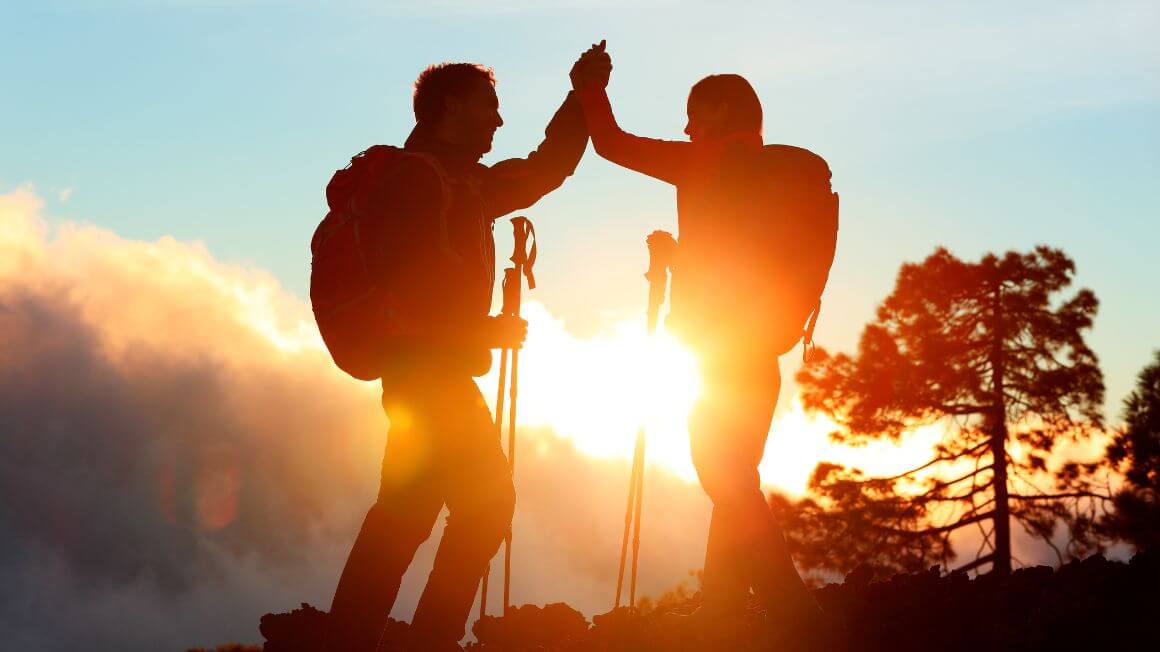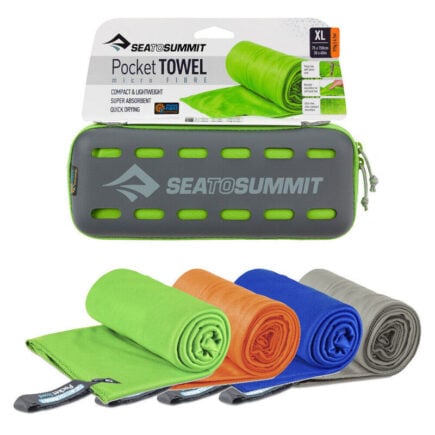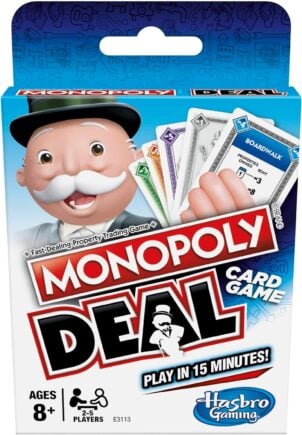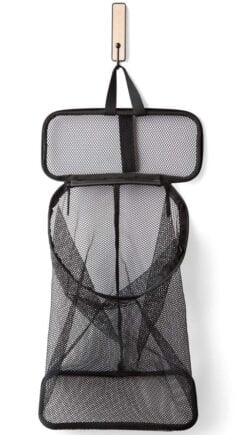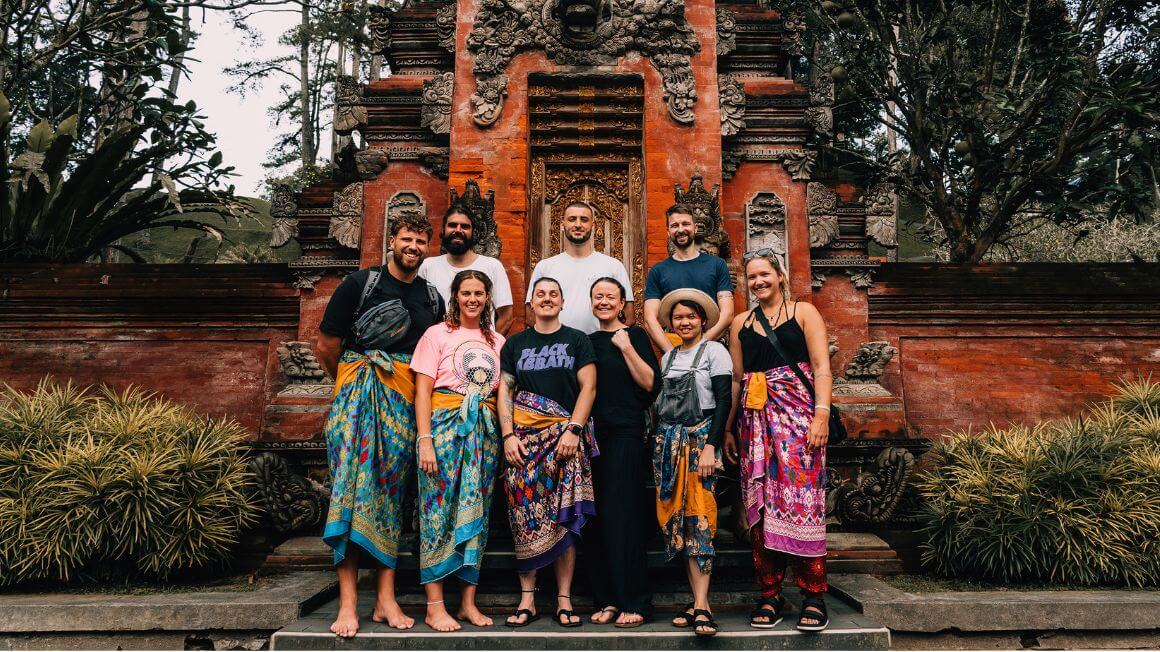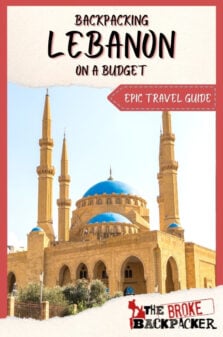Backpacking Lebanon is a truly amazing experience on many levels. If you love history, you are a fan of delicious food and get excited by getting off the beaten path travel destinations, then Lebanon is the perfect country for the ultimate adventure.
The Middle East has no shortage of compelling countries to visit. For experienced backpackers, perhaps no country in the region is more safe, interesting, and fun to visit than Lebanon.
The best part? Lebanon is a small country and you ca Couchsurfing n see most of it in a relatively short period of time. Plus, Lebanon is nearly void of any main-stream tourism and the possibilities to explore it are endless.
Whilst backpacking in Lebanon is ultra rewarding, traveling here is not without its challenges and quirks. This Lebanon travel guide will bring you up to speed on all of the need-to-know information you will want to have a truly epic backpacking trip.
Below, I provide honest advice on where to go backpacking in Lebanon, backpacker accommodation, suggested Lebanon itineraries, top things to do in Lebanon, how to travel the country, daily travel costs, best hikes, Lebanon budget travel hacks, and other important bits and pieces.
Can you taste the hummus and manoushe yet? Let’s get to it…
Why Backpacking in Lebanon?
Lebanon is defined by two distinct topographies: the Mediterranean sea and the interior mountain ranges. You may be surprised to learn that Lebanon does not have any deserts. Depending on where you are at any given moment, the landscapes, food, culture, and people can vary greatly across the board.
Almost certainly, you will start your backpacking journey in the capital Beirut. From Beirut, the coastal cities to the north or south are dotted with interesting UNESCO World Heritage sites, beaches, and towns to explore. Besides Beirut, Tyre, Saidia, and Tripoli are the main urban centers along Lebanon’s coast.
The Bekaa Valley, Lebanon’s famous wine growing region, is home to the largest and best-preserved Roman temple in the world at Baalbek.
For outdoor adventures, Lebanon’s mountains are prime for hiking, photography, and simply experiencing a bit of chill time after the traffic and pollution found on the coast.
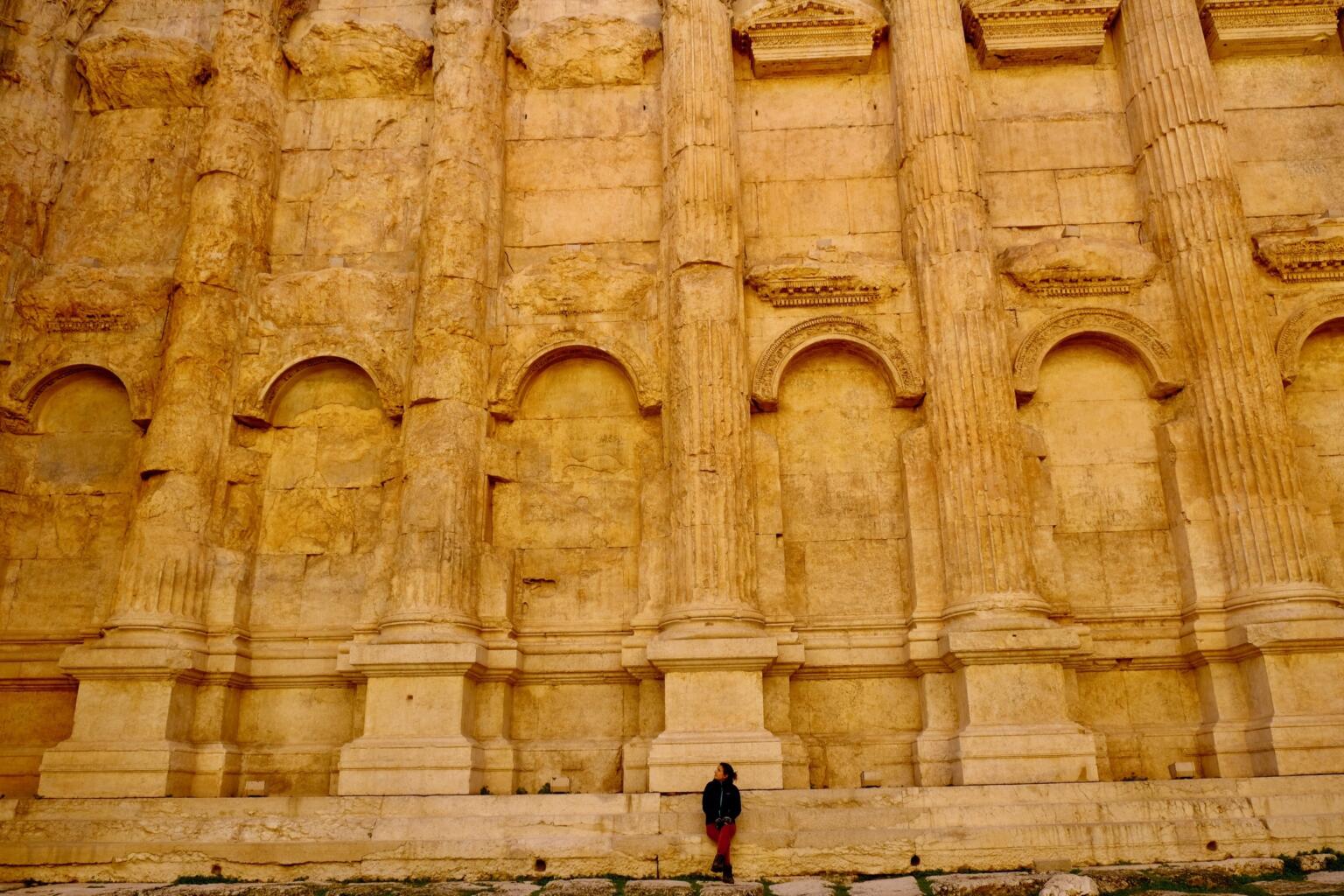
The Broke Backpacker is supported by you. Clicking through our links may earn us a small affiliate commission, and that's what allows us to keep producing free content 🙂 Learn more.
The Chouf Reserve, the Cedars of God, and the Baatara Gorge are among Lebanon’s most impressive natural areas.
Sprinkled in-between the villages in the mountains are some truly beautiful monasteries, rivers, forts, and ruins.
Remember that one can drive from the southern tip of Lebanon to the northern frontier in less than half a day. There really is a ton of awesome places to explore in a concentrated area. Backpackers can achieve an ideal balance of visiting ruins, soaking in the culture, eating tasty food, hanging out at the beach, and hiking—all over the course of just a day or two.
Lebanon certainly has something for every keen backpacker. Now, let us take a look at some of your itinerary options for your epic Lebanon trip…
- Best Travel Itineraries for Backpacking Lebanon
- Places to Visit in Lebanon
- Top Things to Do in Lebanon
- Backpacker Accommodation in Lebanon
- Lebanon Travel Costs
- Best Time to Travel to Lebanon
- Staying Safe in Lebanon
- How To Get Into Lebanon
- How to Get Around Lebanon
- Working in Lebanon
- What to Eat in Lebanon
- Lebanese Culture
- Some Unique Experiences in Lebanon
- Final Advice Before Visiting Lebanon
- Buy Us a Coffee!
Below I have provided a few Lebanon travel itineraries to help you make the most of your time in the country.
These routes are just suggestions based on the itineraries I utilized during my time spent backpacking Lebanon. Each of these routes can be customized or reworked to fit your interests and schedule.
#1 Lebanon 7 Day Itinerary: Highlights of Lebanon
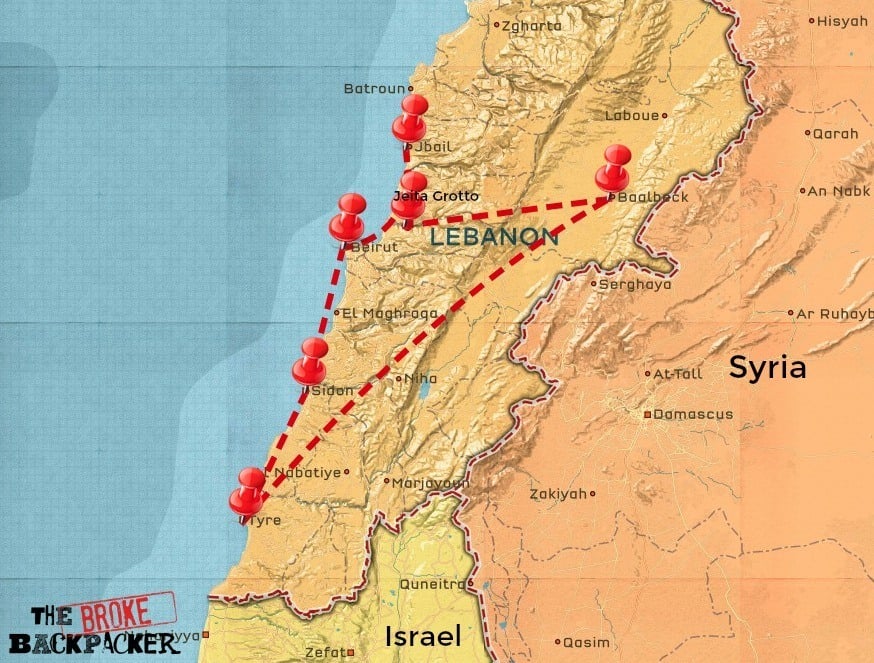
To start your trip, you should dedicate at least one full day to exploring Beirut. You can easily spend two or three days in Beirut, but because of time limitations, one full day will have to do.
From Beirut, you can head south and explore Saida and Tyre. Spending the night in each city is well worth it, especially in Saida as it is bigger than Tyre.
From Tyre, you can make the drive/take buses to the Bekaa Valley. In the town of Baalbek, you will find the most incredible Roman ruins I have ever seen. Because of the distance between Tyre and Baalbek, you should opt to stay the night in Baalbek.
Your last few days can be split between Byblos and Beirut. From Byblos, you can easily make day trips to check out the truly spectacular Jeita Grotto and Baatara Gorge (home to the famous 200-meter waterfall).
The distances between all of these places are never more than a couple of hours, more, however, if you are using public transportation. If you don’t want so much go-go-go and nightly accommodation changes, you can base yourself in Beirut, Saida, and/or Byblos and just day trip from there.
#2 Lebanon 10 Day Itinerary: From South to North
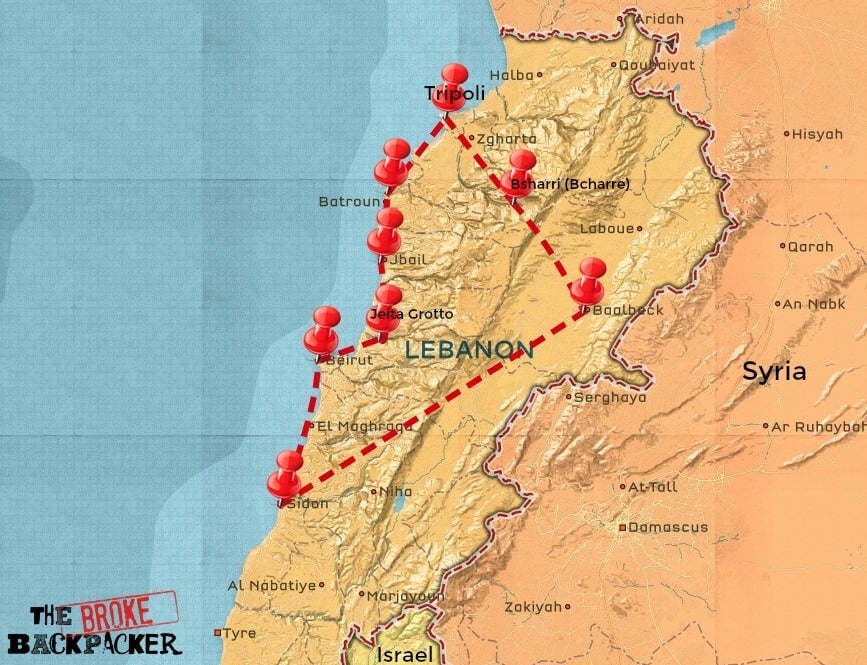
So what is worth seeing in Lebanon with a few extra days? The short answer: LOTS. Tripoli in the north of Lebanon is an interesting city to visit, though I must say that Tripoli is not for everyone…
On one hand, Tripoli is loaded with ancient mosques, an impressive hilltop castle, great food, and a diverse population. On the other, it is a very chaotic city: polluted, noisy, and massive. I personally like discovering chaotic Middle Eastern cities… but in small doses.
The drive from Beirut to Tripoli does not have to be done in one shot. Spend the night in Byblos and/or Batroun and save only one full day for Tripoli.
Rather than head to Tripoli, an alternative option is to spend more time discovering Lebanon’s interior. The Chouf Reserve and Cedars of God are gorgeous and prime destinations for hiking and camping (camping in non-winter months only).
#3 Lebanon 2 Week Itinerary: Cities, Coast, Mountains, and Ruins
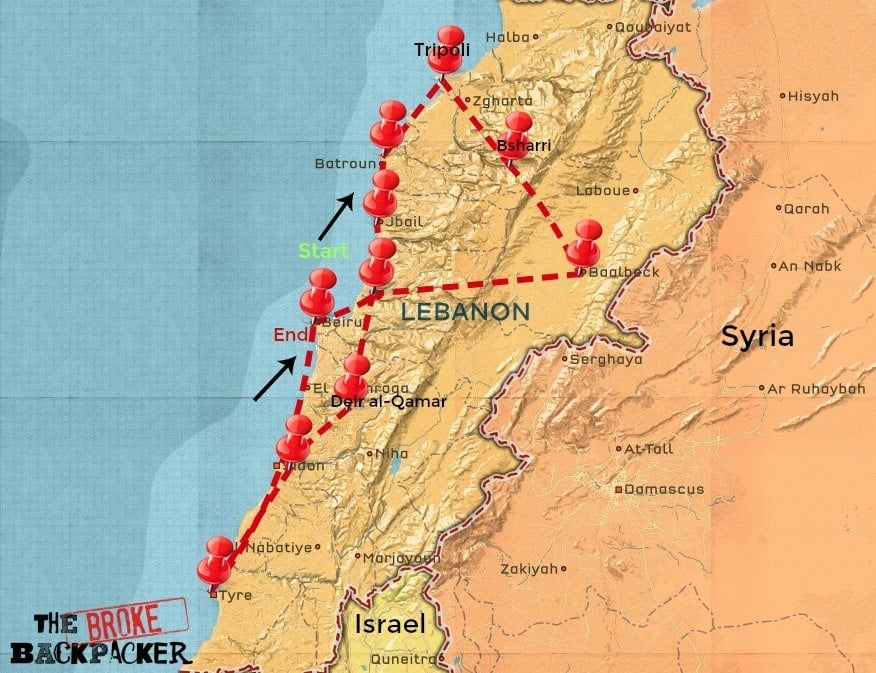
Instead of starting your journey in the south, head north of Beirut. Stop off at Byblos, Batroun, and Tripoli, before making the drive inland to Bcharre. I recommend staying in Bcharre for at least two nights.
In the winter, Bcharre almost looks like a town you might find somewhere in the Alps. There are lots of cool monasteries and hikes to go on in and around Bcharre.
Depending on road conditions, you can access the Bekaa Valley via a mountain road that passes by the Cedars of God reserve. Note: in the winter (or after the first big snow), crossing from Bcharre to the Bekaa Valley is impossible. The road is buried under snow.
Again, depending on road conditions, you can head towards the Baatara Gorge depending on road conditions. Another fine town for a stopover is Deir El Qamar—probably the most beautiful Lebanese town I visited.
You can finish your Lebanese adventure down south in Saida and Tyre before circling back to Beirut.
Want to save money on accommodation?
Enjoy 15% OFF on stays ALL around the world.
From the sea to the mountains, Lebanon is loaded with awesome places to explore. Save for a few pockets near the Syrian and Israeli borders, there really are not many “no go” places in Lebanon.
Beirut is the undisputed social, political, and commercial artery of the country. It’s all happening in Beirut.
It should be known that since the civil war in Lebanon ended (and long before it started as well), the country has been divided (unofficially) into Christian areas and Muslim areas, with crossover from both groups present in many regions as well.
Southern Lebanon and the Bekaa Valley are now Muslim majority, where in places groups like Hezbollah have a die-hard following. Tripoli in the north is also a Muslim majority.
The central hill country overlooking the coast is majority Christian. In fact, since most, if not all, of the Christians formerly living in the south fled during the war and resettled in the central hills and coast, there has been an insane development explosion in this part of the country.
All of that said, the treatment of backpackers does not change in the slightest from one region to another.
Some of the most magical places in Lebanon are products of its rich historical legacy. Its ancient forests and cedar groves, seaside fortresses, archaic churches, mosques, monasteries, and old souks all come together to compliment and highlight the diversity of the country.
Let’s take a look at some of the top places to visit in Lebanon…
Backpacking Beirut
The Lebanese capital of Beirut suffered a HUGE amount of devastation during the Lebanese Civil War and is just now beginning to resemble how it looked pre-war… in places.
As I said, Beirut is Lebanon’s cultural, political, nightlife, and commercial center. Because of that fact, Beirut offers a taste of Middle Eastern-flavored cosmopolitan life. I have heard Beirut referred to as the “Paris of the Middle East.” I dug deep, but nowhere in my imagination could I find the link between the two cities.
That said, I really enjoyed my time in Beirut! Some of the top places to check out in Beirut include:
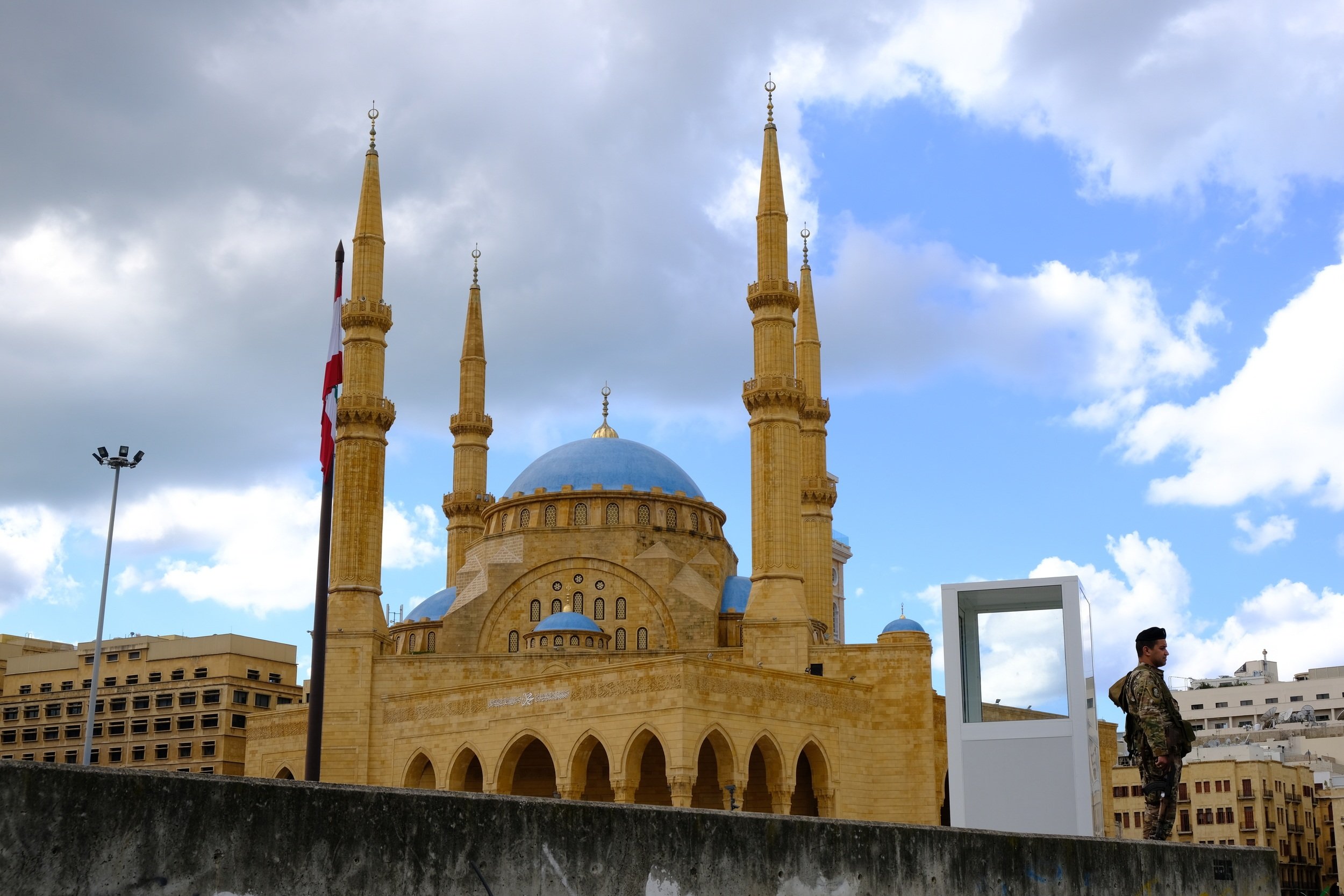
Photo: Chris Lininger
- Hamra neighborhood: Hipster, university-vibes, good live music.
- Mar Michael: Another hipster enclave lined with nice bars, restaurants, and shisha spots.
- Mohammad Al-Amin Mosque: Massive mosque dominating an entire city block. Close to downtown. The army dudes out front told me that non-muslims could enter after prayer time for photo ops.
- Raouche: Rock formation in the sea. You can wander around on the bluffs just opposite it for good views.
- Souk el Tayeb: One of the few organic/local food product markets in Beirut.
- Vieux Quartier de Gemmayzeh: the best place to see typical pre-war Lebanese architecture.
- City Center: Full of boutique shopping and high-end cafes. Not really a backpacker scene but worth a walk through, considering all of the restoration work that has happened here.
- Abandoned building exploration: There are endless dilapidated, war-ravaged buildings still standing in Beirut. Some are quite interesting to explore. Be careful though!
- Old Holiday Inn: Once the largest hotel in Beirut, the Old Holiday Inn became a symbol of the Lebanese Civil War. Its heavily bombed skeleton still stands near downtown Beirut today.
My favorite place to eat meze in Beirut was at Cafe Em Nazieh. Great vibes/food, good shisha, and all around beautiful space to grab a drink and chill.
Backpacking Jounieh
If you are passing through, Jounieh warrants a few hours of your time. Check out the old town streets, shops, and cool architecture of some of the ruins. Jounieh is also famous for being an epic paragliding destination if that is of interest to you.
A few minutes drive from Jounieh will bring you to the town of Harrisa (not the spice FYI). From here, you can catch some pretty stunning views of the sea (if the pollution isn’t too bad) stretching all the way to Beirut and north to the mountains. The Greek Orthodox church in Harrisa has some very impressive mosaic work covering the walls.
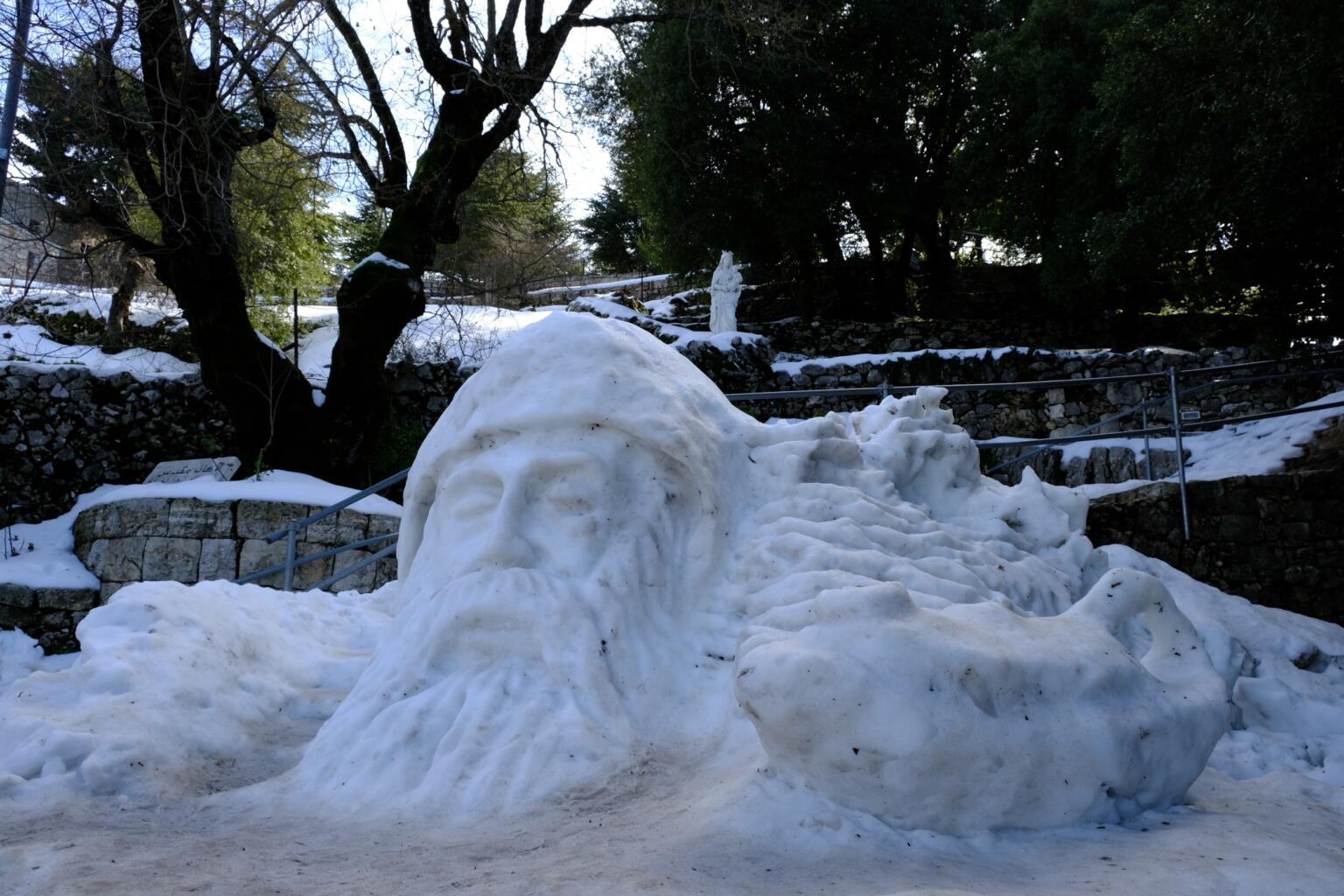
Photo: Chris Lininger
If you have even more time, the trip into the mountains from Harrisa to the Saint Charbel Monastery is well worth it.
Backpacking Byblos/ Jbeil
Byblos (or Jbeil depending on who you ask) is one of the oldest continuously inhabited cities in the world. Archaeologists have found evidence of a permanent human settlement here dating back to 8800 BC!
Byblos has a very attractive, albeit a bit touristy, old town with souks, nice cafes with terraces, and plenty of spots to grab a bite.
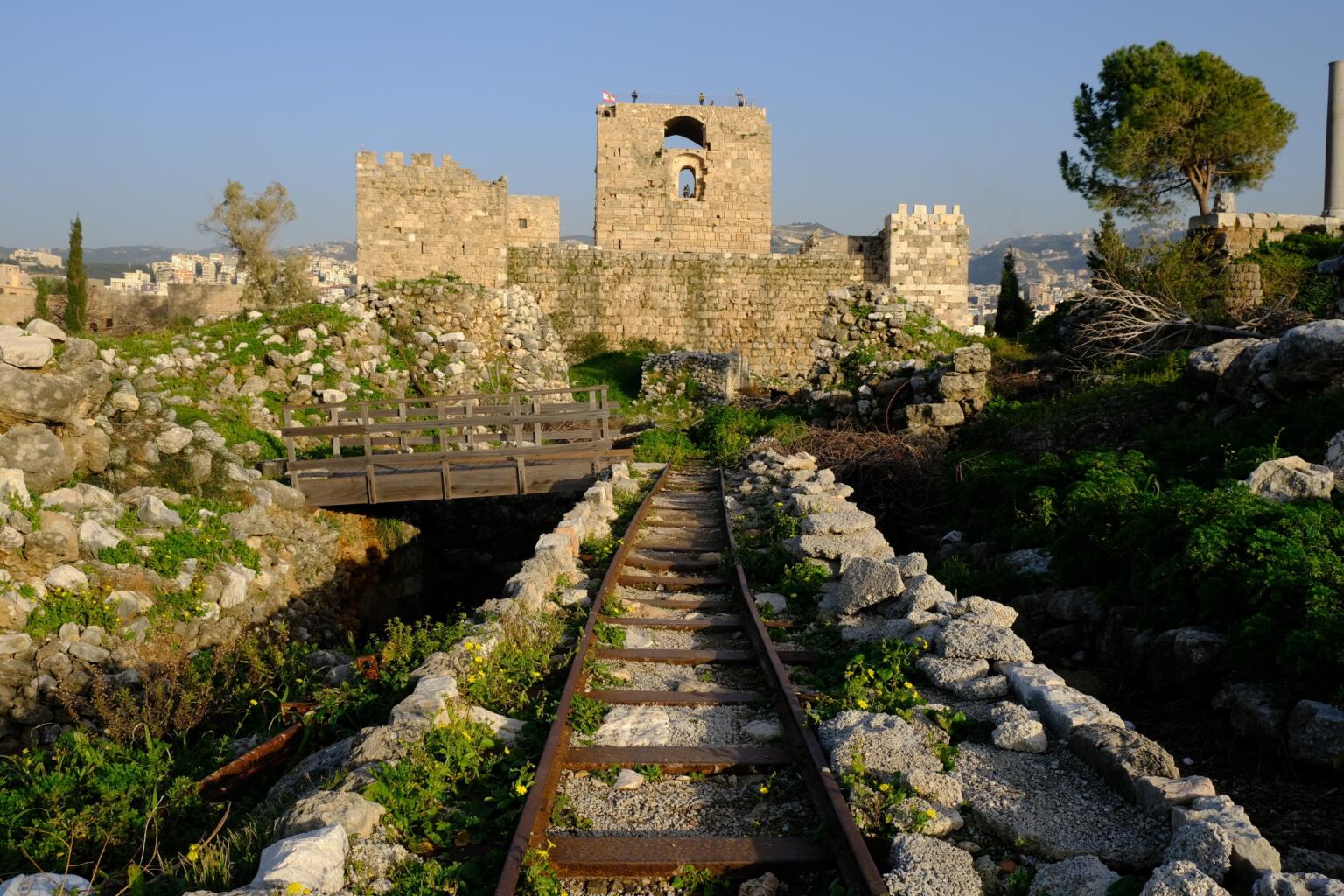
Photo: Chris Lininger
Be sure to check out the Crusaders Castle, built in the 12th century. Entrance to the castle is 8000 LBP. The complex also features Roman columns and Phoenician ruins.
Unlike other historical sites in Lebanon, I was pleased to see a huge team of workers doing restoration on the castle and other sites within the complex. The entrance fees are actually doing what they are supposed to do, hurray! The Rock restaurant is an excellent place to grab a huge meze feast.
Backpacking the Jeita Grotto
A recent contestant to join the “Wonders of the World” list, the Jeita Grotto is the most impressive natural phenomena in Lebanon and perhaps in the entire Middle East.
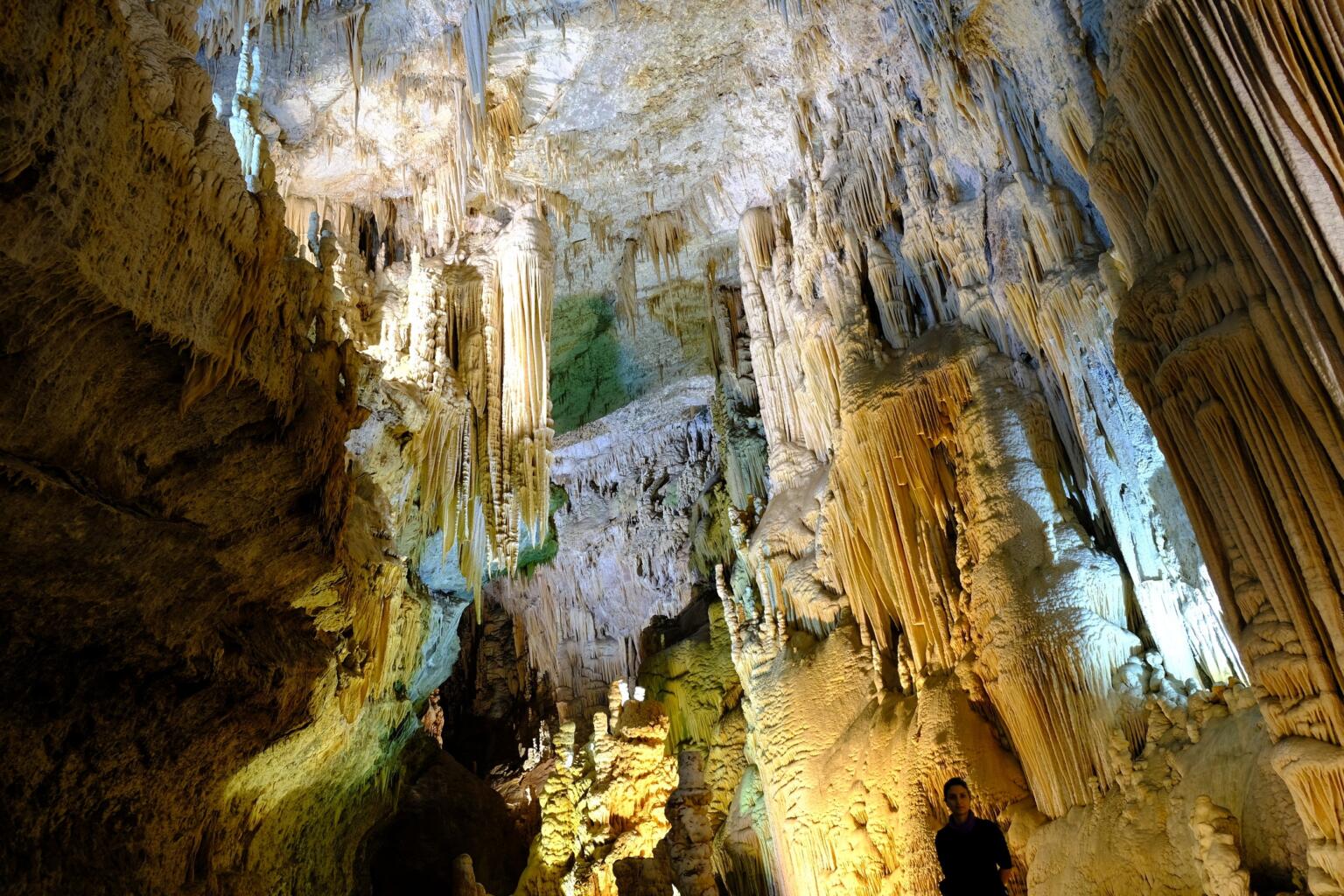
Photo: Chris Lininger
The Jeita Grotto is a system of two separate, but interconnected karstic limestone caves spanning an overall length of nearly 9 kilometers! The caves are situated in the Nahr al-Kalb valley within the locality of Jeita, less than 20 km from Beirut.
Entrance to the Jeita Grotto is $12 USD. Admission includes a cable car ride and a short boat journey within the lower cave section.
Note: in the winter or after periods of heavy rain, the lower grotto may be closed. When it rains heavily or there is lots of snowmelt, the lower cave gets totally flooded and becomes inaccessible.
Honestly, pictures of the Jeita Grotto do not fully prepare you for how spectacular and massive the inside of the cave is. Some of the biggest stalactite formations in the world are found inside the Jeita Grotto.
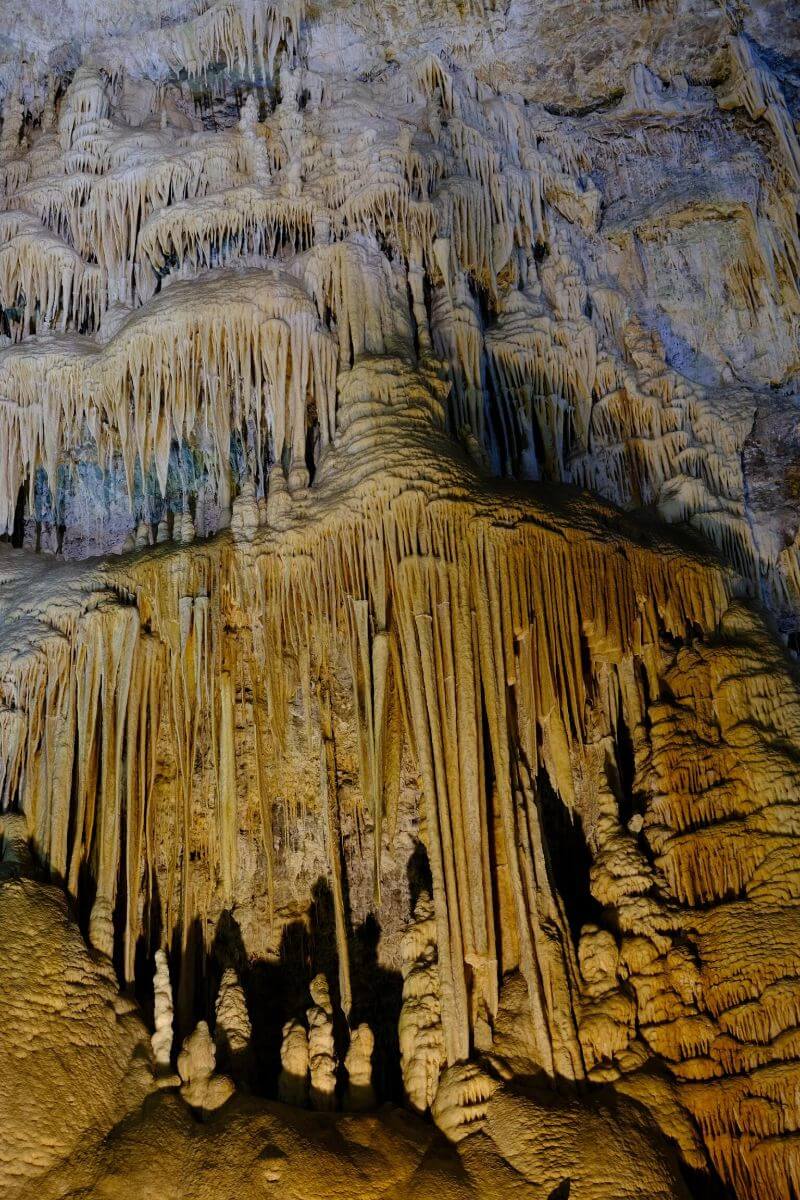
Photo: Chris Lininger
It took millions of years for this cave to form. Obviously, avoid touching the rock, littering, or doing anything that may disrupt the fragile ecosystem of the cave. Photography is forbidden in the cave and this rule is enforced by the dudes stationed every 50 meters on the footpath.
Big thanks to Miss Pierrette and Dr. Haddad for granting special photography access to me for this article.
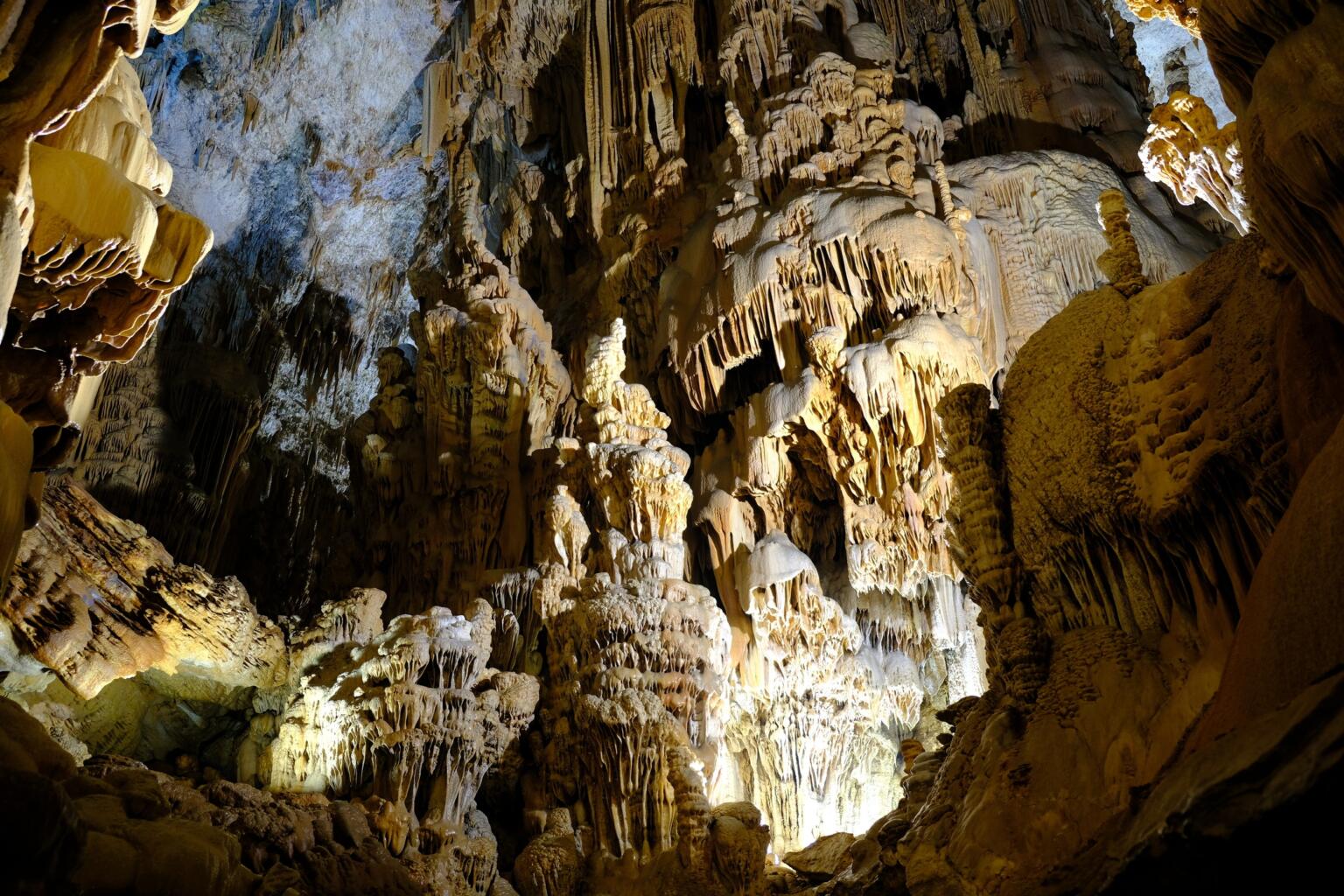
Photo: Chris Lininger
Backpacking Batroun
Batroun is another fine coastal town north of Byblos. I found Batroun to be the most attractive, clean, medium-sized coastal town north of Beirut.
You can dedicate a day to walking around Batroun without boredom. Like Byblos, Batroun is an ancient city that has been occupied for thousands of years by various groups.
The old port area is still an active fishing port where you will find the locals grilling their fresh catch, preparing the nets, and just generally chilling out by their boats when not out at sea.
Located just next to the port is the Saint Georges Cathedral. Be sure to walk out a bit north of the port area to see the old Phonecian sea walls.
Also worth a look is the Diaspora Square which has various buildings paying tribute the Lebanese diaspora living abroad.
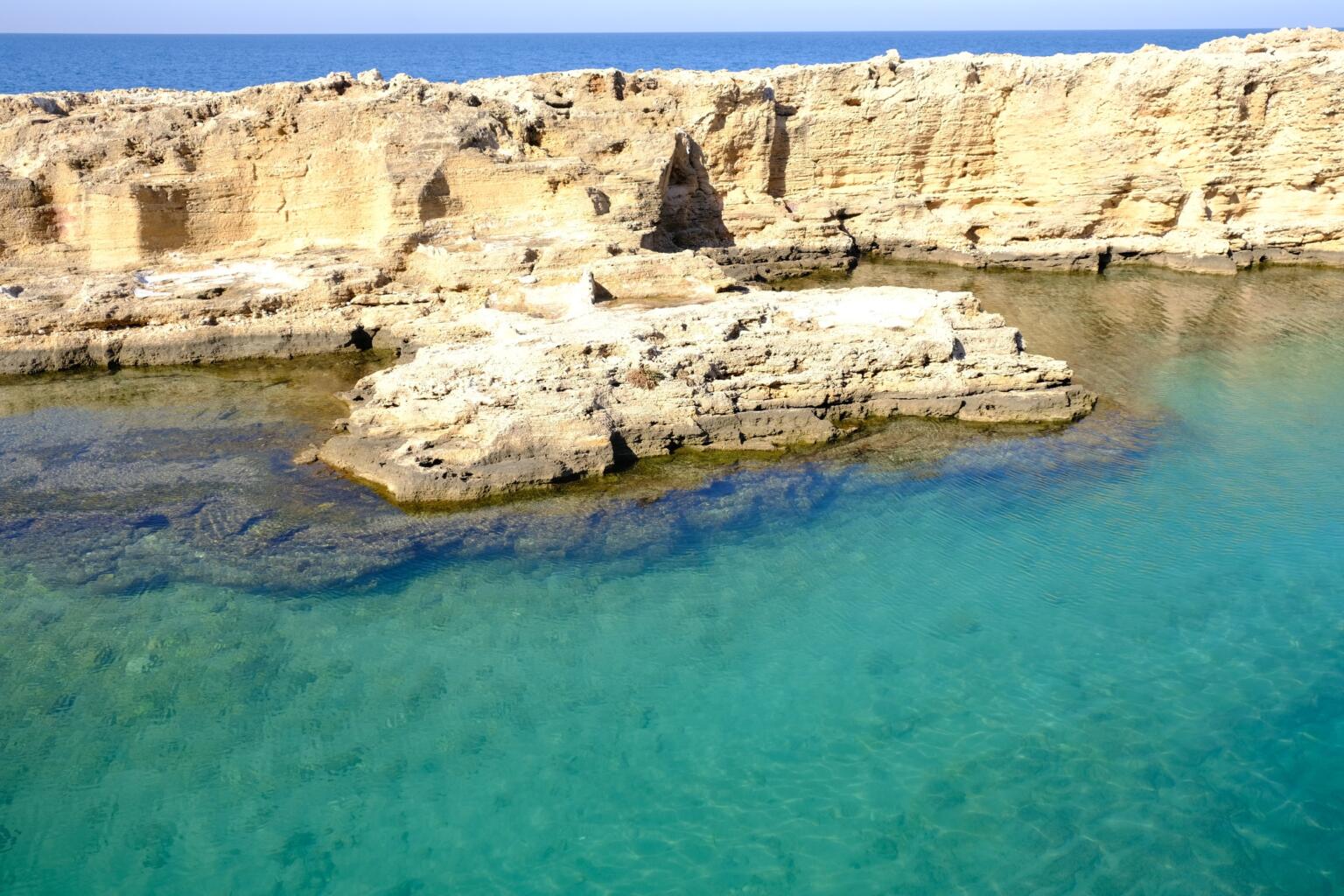
Photo: Chris Lininger
Batroun does have an(if the pollution isn’t too bad) Old Souk area as well, but it is rather small and underwhelming.
Ray’s Cafe is an excellent place to grab lunch or a coffee with sea views. For grilled fish at a decent price, hit up Chez Maggi (roughly 50 meters from Ray’s).
Backpacking Tripoli
Lebanon’s second biggest city could not have more of a different vibe than Beirut. Tripoli is indeed a full-on sensory experience of a different variety.
In my opinion, you can see what Tripoli has to offer in just one day, but if you do find yourself in Lebanon’s north, it would be a shame to miss out on Tripoli.
Though Tripoli might have horrible traffic jams that rival Beirut, a serious pollution problem, dirty streets, and, a large impoverished population, Tripoli also offers amazing street food, a really cool Old Souk area, and plenty of medieval mosques, forts, and churches to dazzle your historical fancy.
While it is true that Tripoli has a reputation for being one of the more dangerous cities in Lebanon, the violence Tripoli has experienced in recent years has died down considerably.
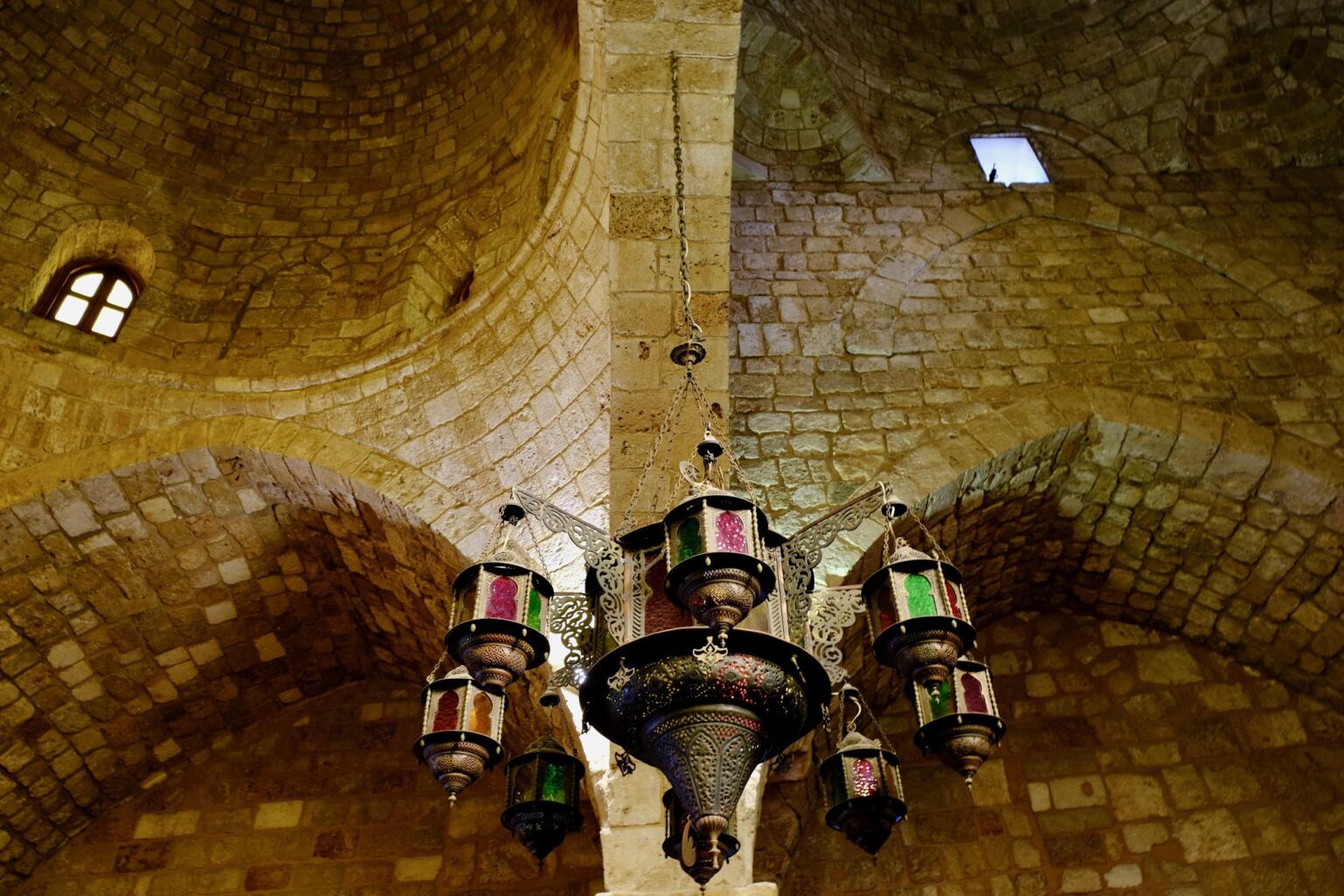
Photo: Chris Lininger
Likewise, the sporadic clashes between rebels and government forces that took place a number of years ago happened well outside of the city center.
If you just stick to the center, the old souk area, and the coast, there is pretty much zero risk of encountering any issues unless you happen to be very unlucky. Certainly, don’t skip Tripoli because you have heard it is unsafe.
Tripoli is massive so taking a taxi is certainly the way to go if you are trying to get across town. A taxi across the city should cost no more than 4000 LBP.
Top Places to Visit in Tripoli:
- Citadel of Raymond de Saint-Gilles/Tripoli Castle: This hilltop fort was finished in 1103 and is in great condition despit the repeated attacks and seizures it has endured.
- Old Souk: One of the biggest and most diverse souks (markets) I visited in Lebanon. You can find literally anything here. Be sure to haggle when buying stuff!
- Taynal Mosque: A beautiful mosque built in 1336. Photography is allowed inside. Remember to always remove your shoes when entering a mosque.
- Mansouri Great Mosque: One of the oldest and most important mosques in Lebanon.
- El Mina: The somewhat unattractive port area.
- Akra Restaurant: Good meze found near the entrance of the Old Souk. The menu is only in Arabic FYI.

Photo: Chris Lininger
Backpacking Akkar
If you like to hike, the natural areas around Akkar are some of the best in the whole north. You can even hike to old forts and water mills located way out in the bush.
Some of the footpaths can be confusing, so it may be worthwhile to “hire” a local kid to show you the way.
Akkar is home to a staggering number of Syrian and Palestinian refugees, so expect to see camps spread throughout the territory.
The Qamouaa Plain is not in Akkar, but rather a few hours drive to the southeast. In the Qamouaa, you can find some equally chill hiking opportunities even in the winter.
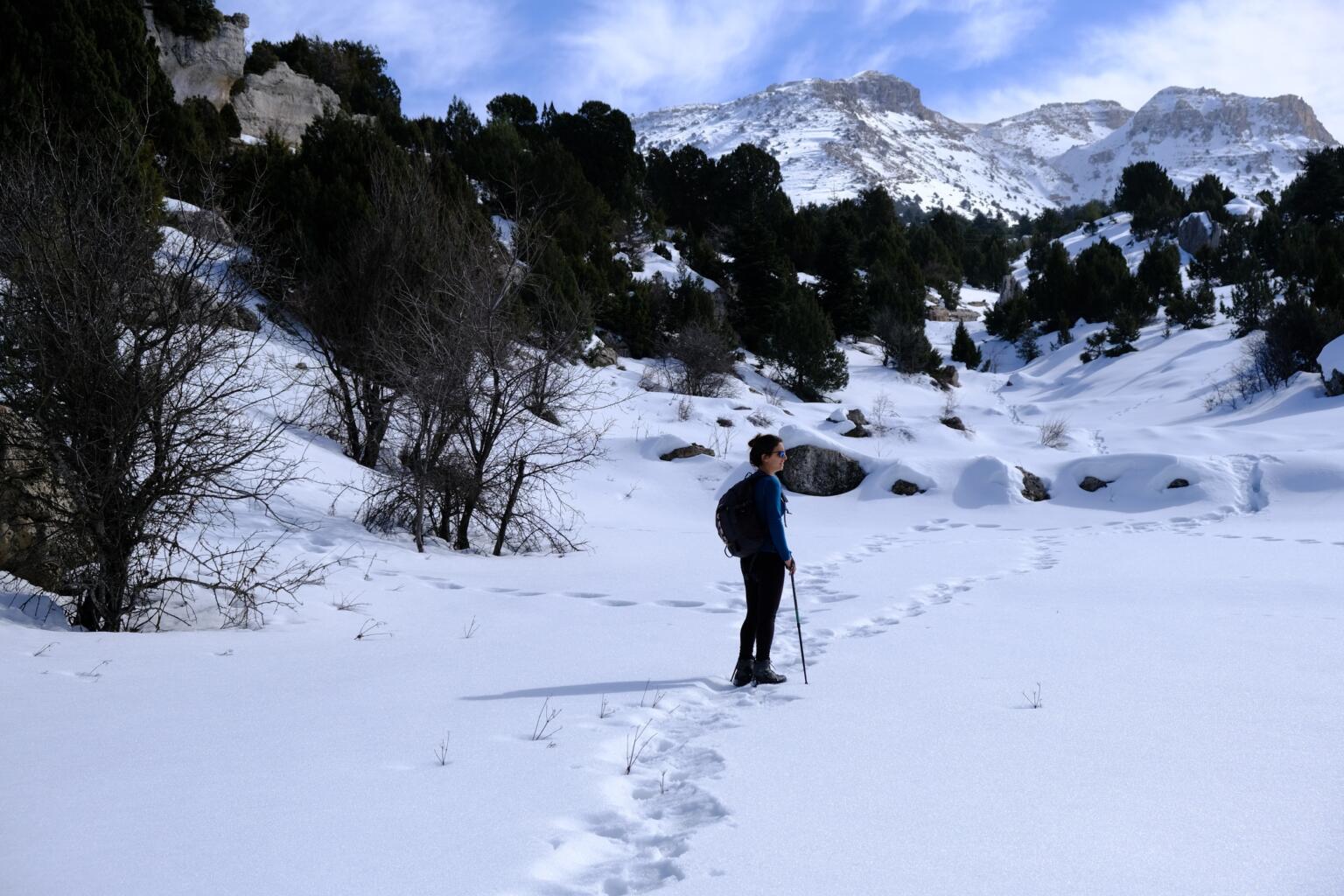
Photo: Chris Lininger
Note: Large amounts of snow can be present in the winter. If planning a trek keep in mind that you will likely encounter snow above 1400 meters.
You can tackle a short hike in the Qamouaa Forest just 10 minutes outside of the settlement of Fnaidek.
Backpacking Bcharre
Bcharre is one of my favorite places in Lebanon for several reasons. For one, the town is located just above the Kadisha Valley—one of the most historically and naturally significant valleys in the country.
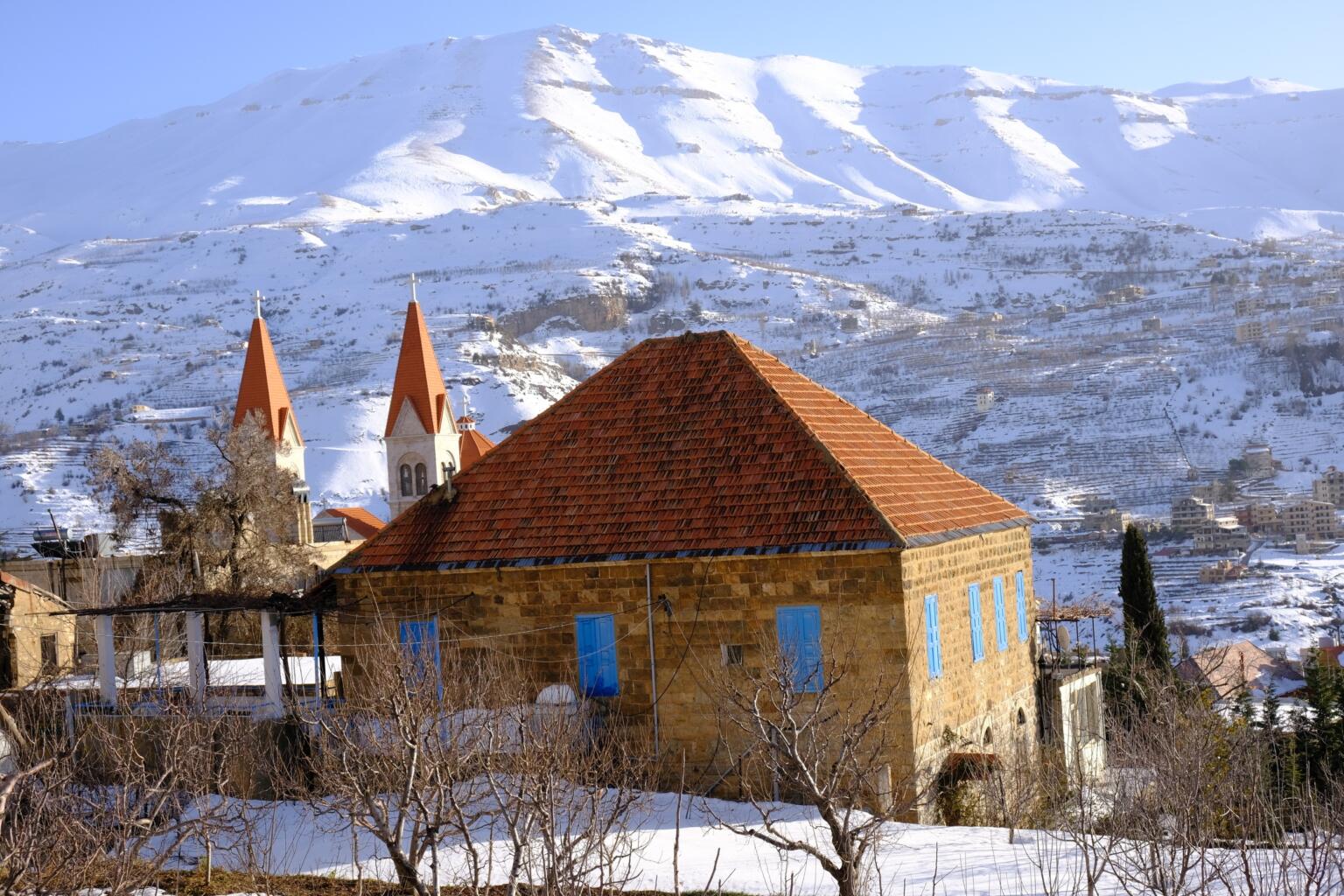
Photo: Chris Lininger
Here you will find monasteries carved out of the rock, pristine olive groves, and part of the Lebanese Mountain Trail footpath.
Likewise, the Cedars of God reserve and ski station is just 15 minutes up the mountain from Bcharre. Even in the winter, you can opt to drive (or hike) to several of the low-lying and super impressive monasteries down in the valley.
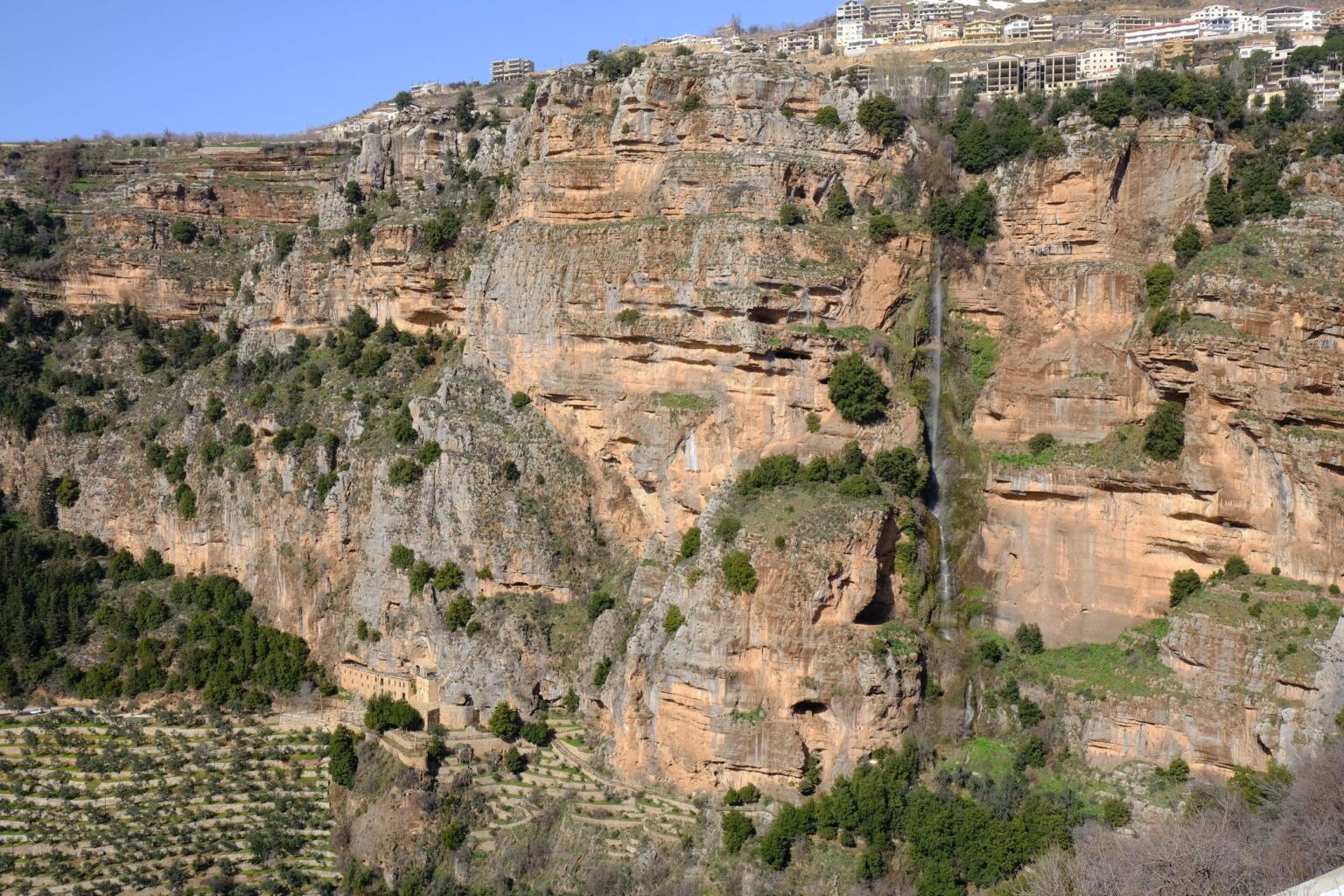
Photo: Chris Lininger
The Deir Mar Antonios Qozhaya Monastery dates back to 1000 ad and is very well maintained. Entrance is free and you can opt to spend the night (for a fee) so should you choose.
Another awesome monastery to visit is the Deir Mar Elisha Monastery. Somehow, its creators dug this beautiful building out of the rock and managed to make it all work. There is also an epic waterfall just a 5 minutes walk down the path from the monastery.
Backpacking the Cedars of God
The Cedars of God are very impressive as they are some of the oldest and largest cedar trees on the planet.
At the same time, when I visited was on a Sunday in January, it was true pandemonium involving thousands of people. It was a horrible experience with people blasting loud music, insane traffic jams, and, locals throwing trash everywhere.
By days end, there was so much trash and debris left by the locals that it looked like the aftermath of a week-long music festival involving hundreds of thousands of people. So sad. Definitely not the peaceful experience I was after.
I am sure this was just a fluke experience, but seriously avoid going to the Cedars of God on the weekends at all cost.
Also, the actual number of cedar trees is very small indeed. Don’t expect to find a massive forest. For that, go to the Chouf.
Note: there is a military base located just next to the cedar reserve and access is limited in places.
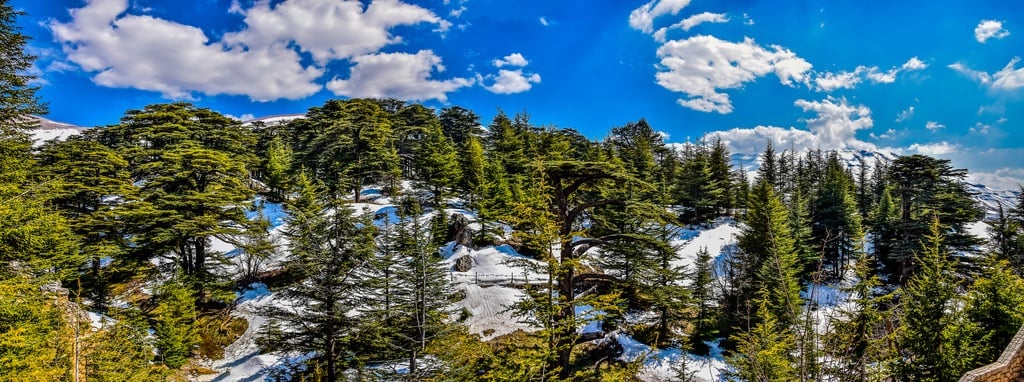
Photo: Paul Saad.
Backpacking Baalbek and the Bekaa Valley
Baalbek is not to be missed under any circumstances. The Bacchus Temple and the surrounding ruins are very, very impressive and worth every bit of the 15,000 LBP ($10) entrance fee.
Nowhere else on earth can you find such large and well preserved Roman ruins. The whole archaeological site is massive and you can easily take 3-4 hours to explore it properly.
Other highlights of Baalbek include a visit to the Sayyida Khawla Mosque. This mosque features some truly extravagant mosaic work and was one of the more impressive mosques I saw in Lebanon.
You need to go through a security control (a dude watching football on his phone with an Ak-47 slung across his lap) in order to enter, but otherwise, it is pretty chill.
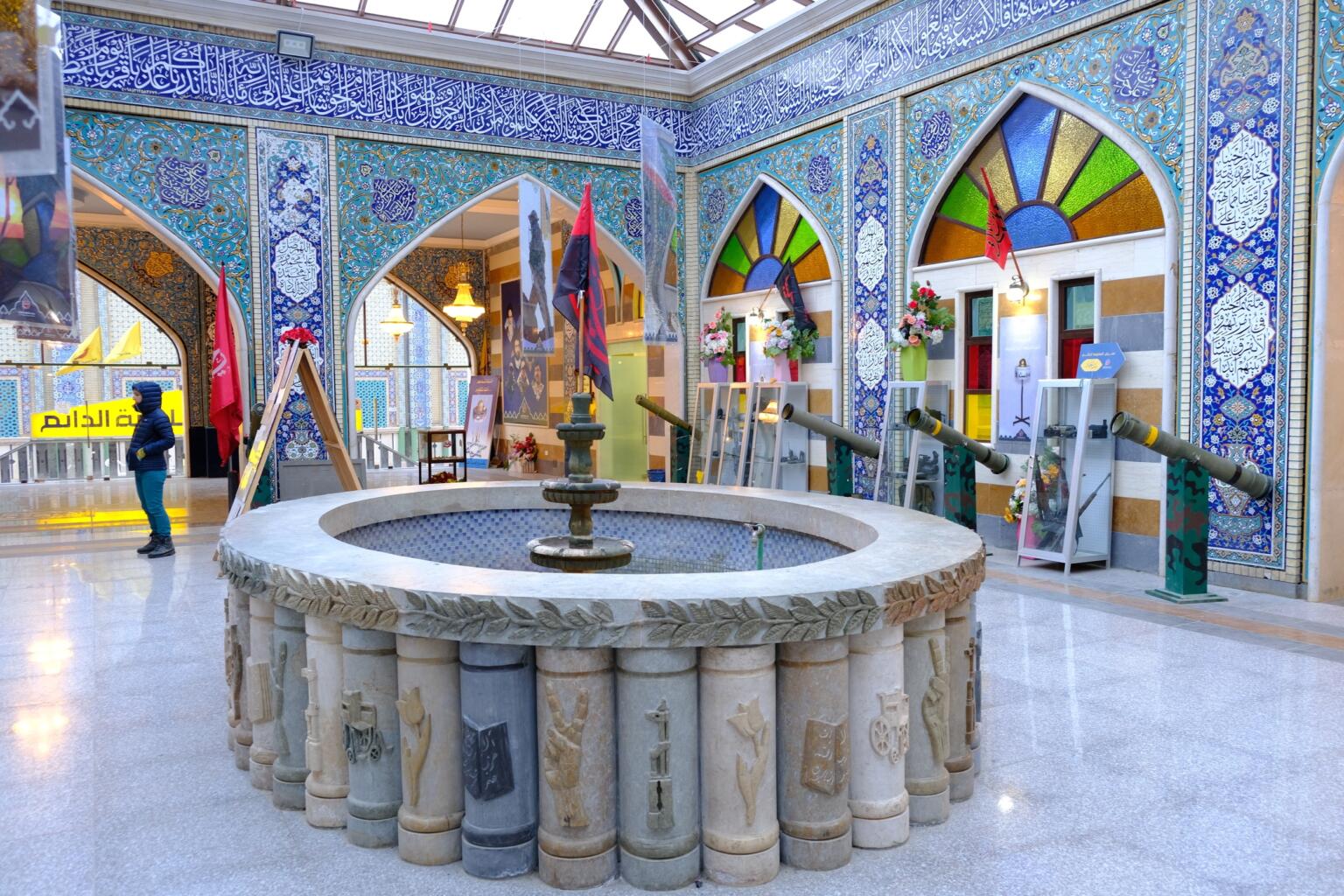
Photo: Chris Lininger
Located on the same property as the mosque is the Islamic Resistance Support Association War Musem (IRSA), Hezbollah’s main fund-raising institution. The museum is a pretty fascinating glimpse into the history and propaganda machine of Hezbollah and its co-conspirators.
The IRSA is a Hezbollah institution established in 1990 to manage and regulate the organization’s fund-raising enterprise. Originally, the institution was subordinate to Bayt al-Mal (Hezbollah’s bank, but IRSA’s subordination has been changed).
According to unconfirmed information, today the IRSA is directly under the control of Hezbollah secretary general Hassan Nasrallah.
The Baalbek Guest House is a great place to spend the night. Includes an awesome full-spread breakfast.
I had a hard time finding a proper grocery store in Baalbek, but there are plenty of cheap falafel/shawarma places on and off the main drag. El Kahyam is a great/cheap falafel spot.
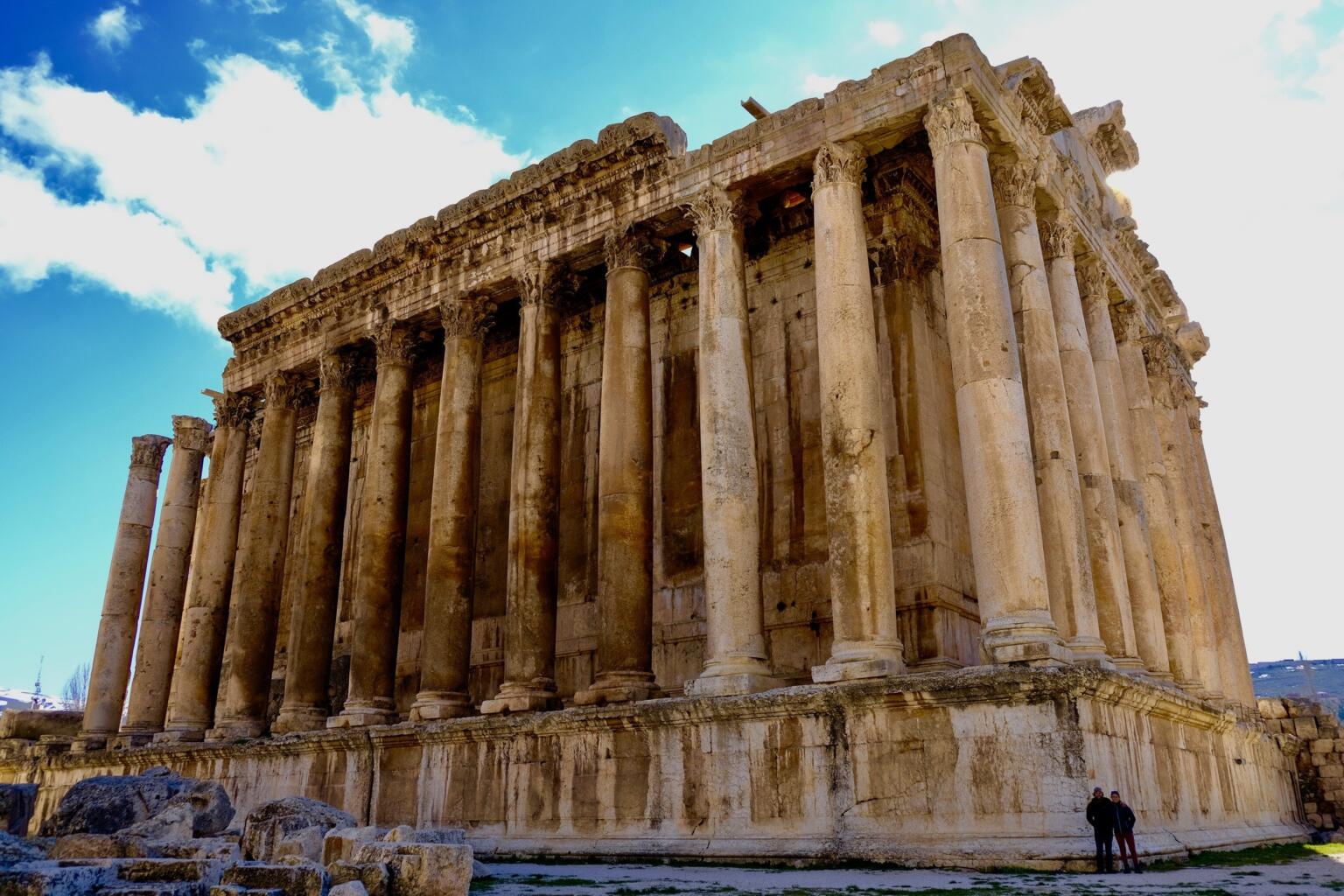
Photo: Chris Lininger
In the Bekaa Valley, there are also massive Syrian and Palestinian refugee camps spread throughout the territory. Apparently, the Lebanese government does give them some assistance in the form of temporary tent housing as well as access to local social services.
Many refugees work in the agriculture sector that dominates the Bekaa. It was a trip seeing these huge tent villages with satellite dishes mounted on top of the tents. Priorities, right?
Backpacking Anjar
In case you didn’t get enough of the awesome ruins at Baalbek, you can head across the valley to Anjar. At Anjar, you can check out an impressive Omoyiad Citadel, which rivals Baalbek in terms of general acreage.
I’ll be honest with you though: after seeing the Bacchus Temple, the ruins at Anjar are just kind of “meh.”
If possible, visit the Anjar ruins first.
Thanks, Bacchus Temple, you have forever made other ruins in the world pale in comparison.
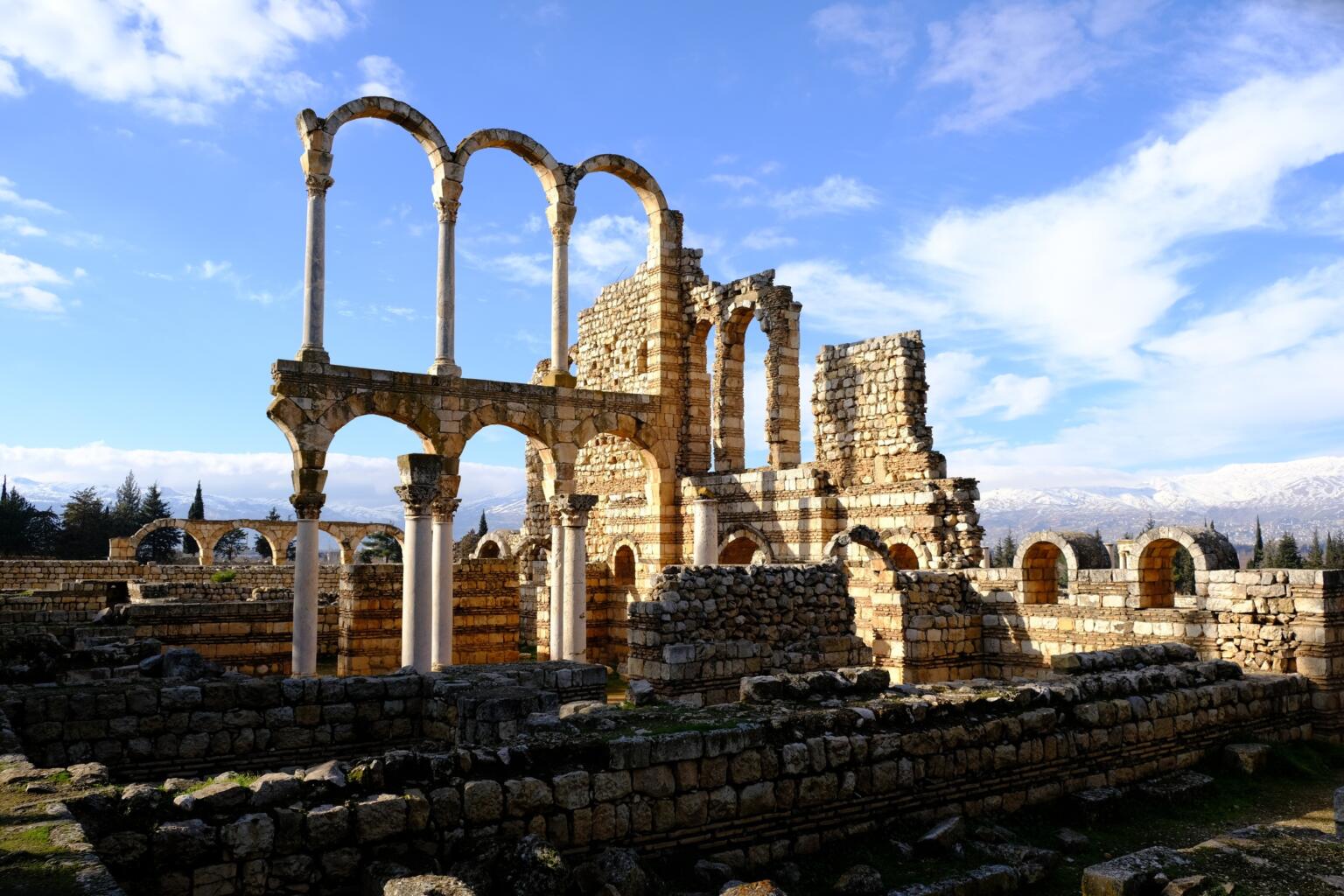
Photo: Chris Lininger
Other than the ruins there is nothing of interest in Anjar, so don’t sleep here. To arrive at Anjar, try to take the back roads if possible as they are dotted with fine pastoral landscapes and vineyards, and far less traffic-ridden than the main road.
Backpacking Ain Dara
For a chill night in a typical Lebanese mountain village, Ain Dara makes for a good stop over. There is nothing particularly riveting about Ain Dara itself but there is plenty of awesome hiking to be found in the nearby Chouf Reserve. A few nice churches, sandwich shops, and several small bakeries rank among the highlights.
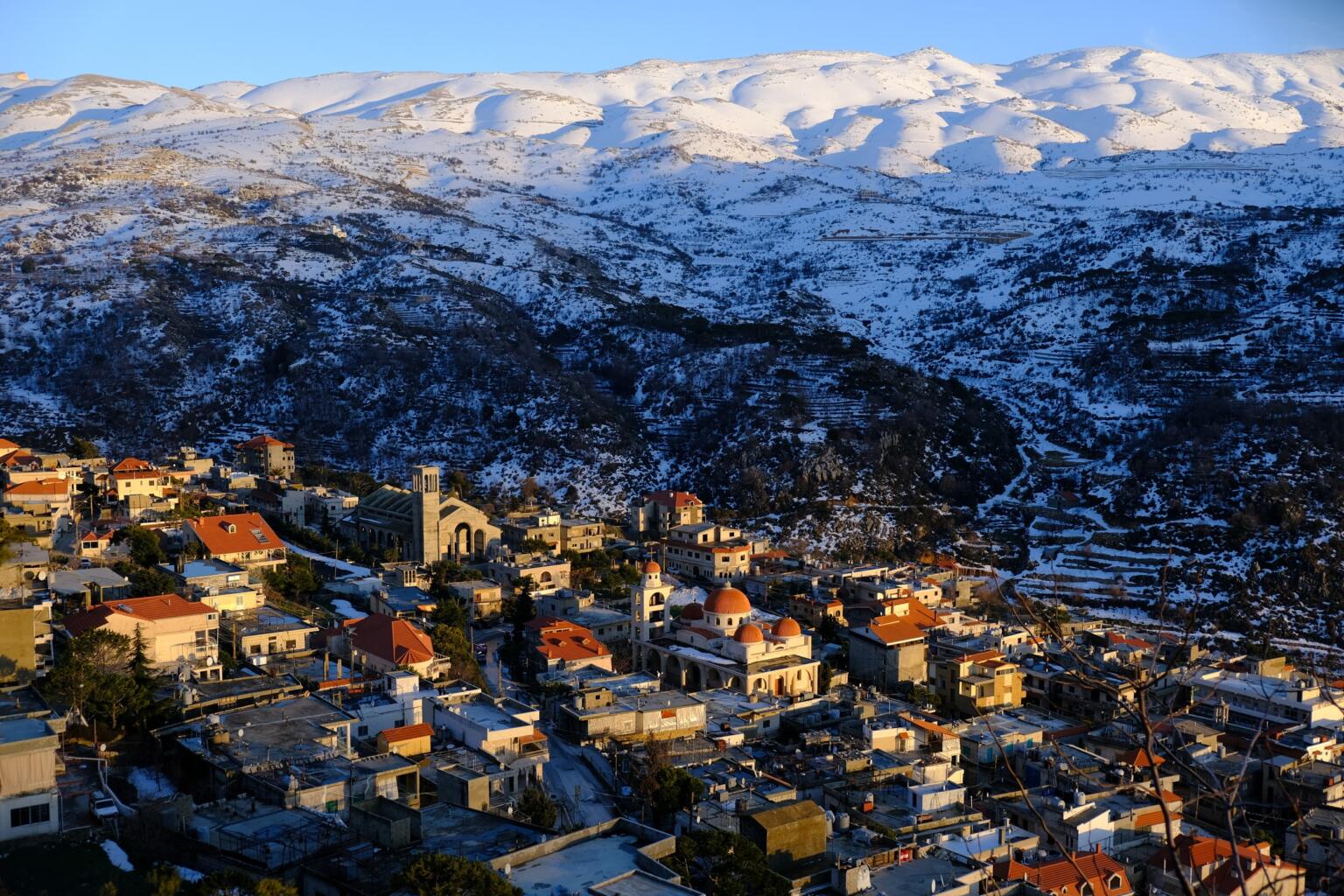
Photo: Chris Lininger
If you are looking for a place to relax, Ain Dara is a good candidate.
Backpacking The Chouf Reserve
Located south-east of Beirut, the Chouf Reserve region comprises a narrow coastal strip notable for the Christian town of Damour, and the valleys and mountains of the western slopes of Jabal Barouk, the name of the local Mount Lebanon massif, on which the largest cedar forests in Lebanon are found.
The Chouf is truly a vast area and is home to several unique animal species including lynx, wolves, porcupines, and wild boar.
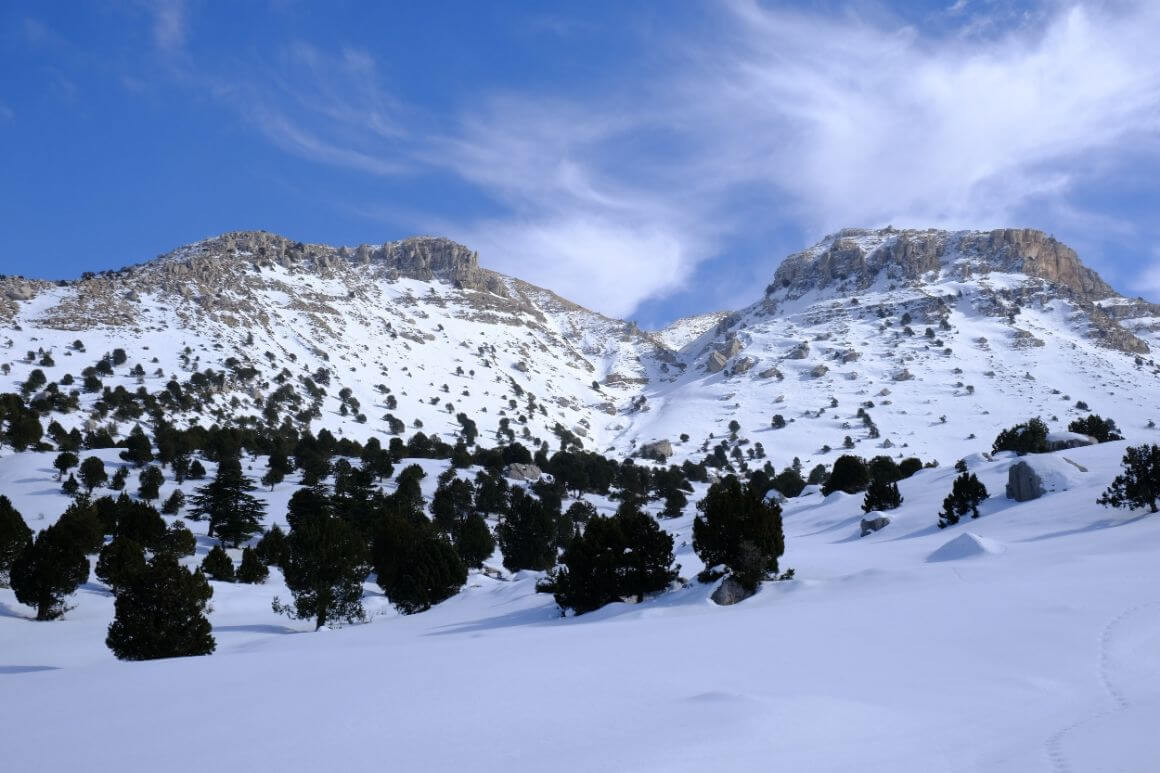
Photo: Chris Lininger
In the summer, the Chouf is perfect for hiking and camping, though the high elevations during the winter are difficult, if not impossible, to access due to heavy snowfall. Accessing the Chouf by car from the Bekaa Valley is only possible when there is not heaps of snow blocking the road.
Backpacking Deir El Qamar
Deir El Qamar is a special place in Lebanon. There are sections of the town with gorgeous stone buildings and well-preserved cobblestone streets.
The main square of the town is dominated by an ancient mosque, which non-muslims can enter (which is true of all mosques in Lebanon FYI).
Nearby is the ultra-quirky, yet impressive Moussa Castle. The Moussa Castle was built by one talented dude over the course of 50+ years. Inside, there are life-sized, mechanized dioramas depicting traditional Lebanese life along with a substantial collection of antique weapons from all over the world.
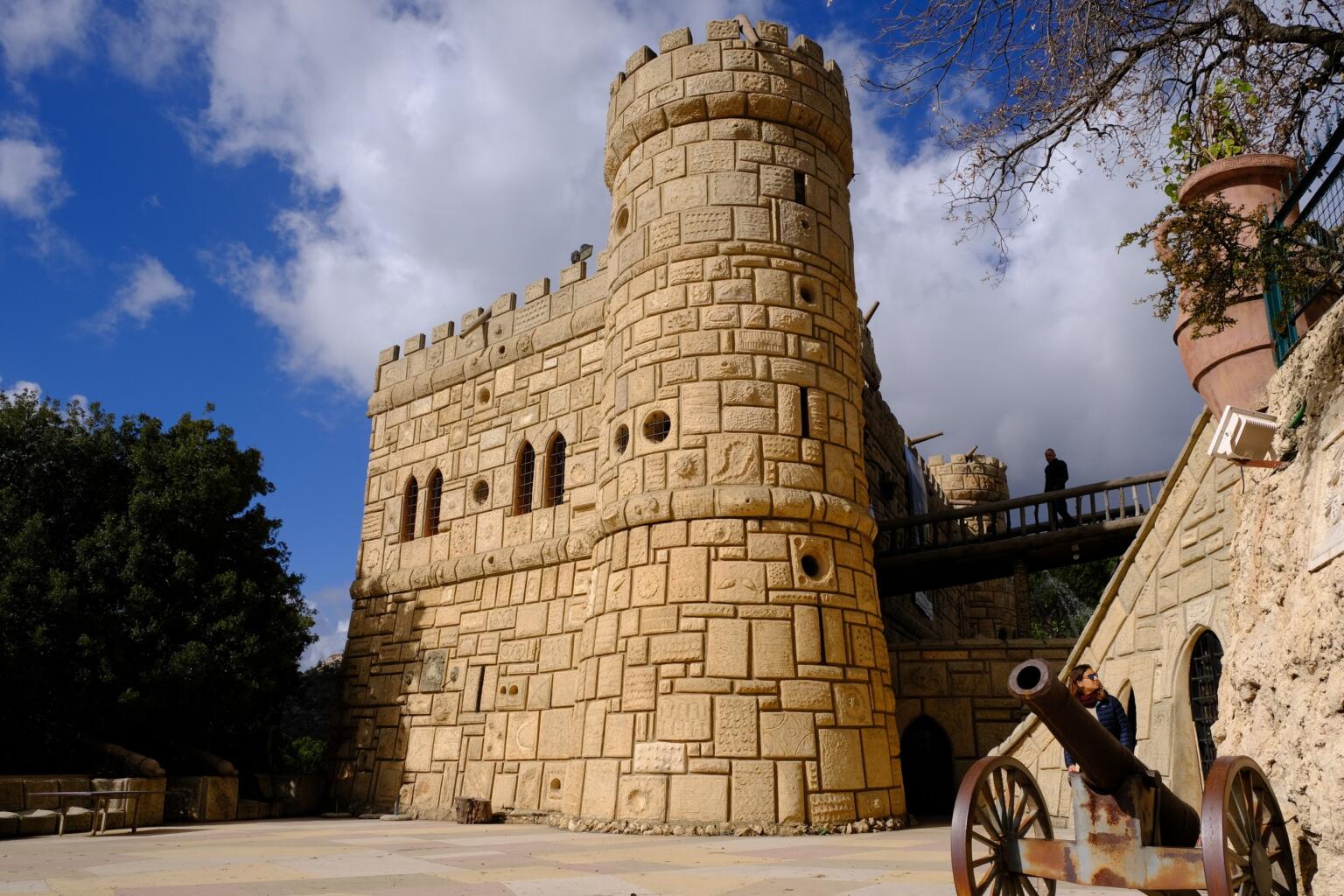
Photo: Chris Lininger
The 15,000 LBP entrance fee to Moussa Castle is overpriced but is worth it considering there isn’t much else going on in the area in terms of attractions.
Once you see the amount of work that went into the building and designing of the castle, the price feels more justified.
Another impressive historical structure in the area is the Beiteddine Palace. Entrance fee to this place is 10,000 LBP and is most definitely overpriced.
If history and architecture are important to you, 10,000 LBP may be a small price to pay, however, I opted not to visit it after learning what the price is.
For a rather indulgent night’s sleep, you can stay at the best place I slept at in Lebanon; at a friend of mine’s Airbnb.
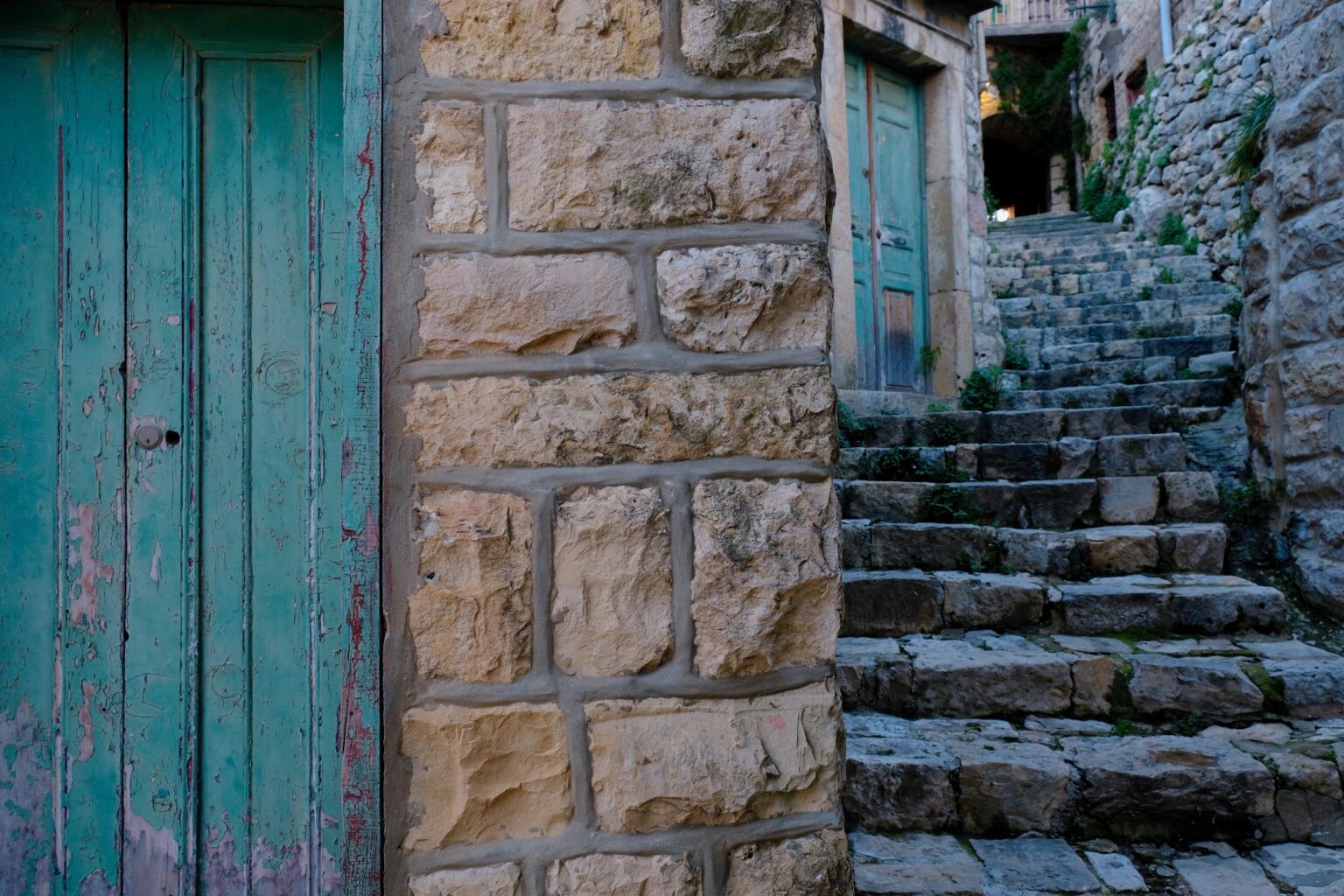
Photo: Chris Lininger
This place is incredibly nice (super luxury for Broke Backpackers), especially if you have been sleeping rough or camping for a few days beforehand (which we were). The extra cash is worth it, if only for one night.
The breakfast was amazing and far too much food for two starving people to consume. Thanks, guys, your place rocks!
Backpacking the Baatara Gorge
Like the Jeita Grotto, the Baatara Gorge is just one of those magical places only found in Lebanon. This is another must-visit spot, no matter the time of year.
The Baatara Gorge sinkhole is a massive waterfall in Tannourine near Balaa. The waterfall drops 255 meters into the Baatara Pothole, a cave of Jurassic limestone located on the Lebanon Mountain Trail. The cave is also known as the Cave of the Three Bridges.
I tried three different times to come here in the winter and failed on the first two attempts due to snow on the road.
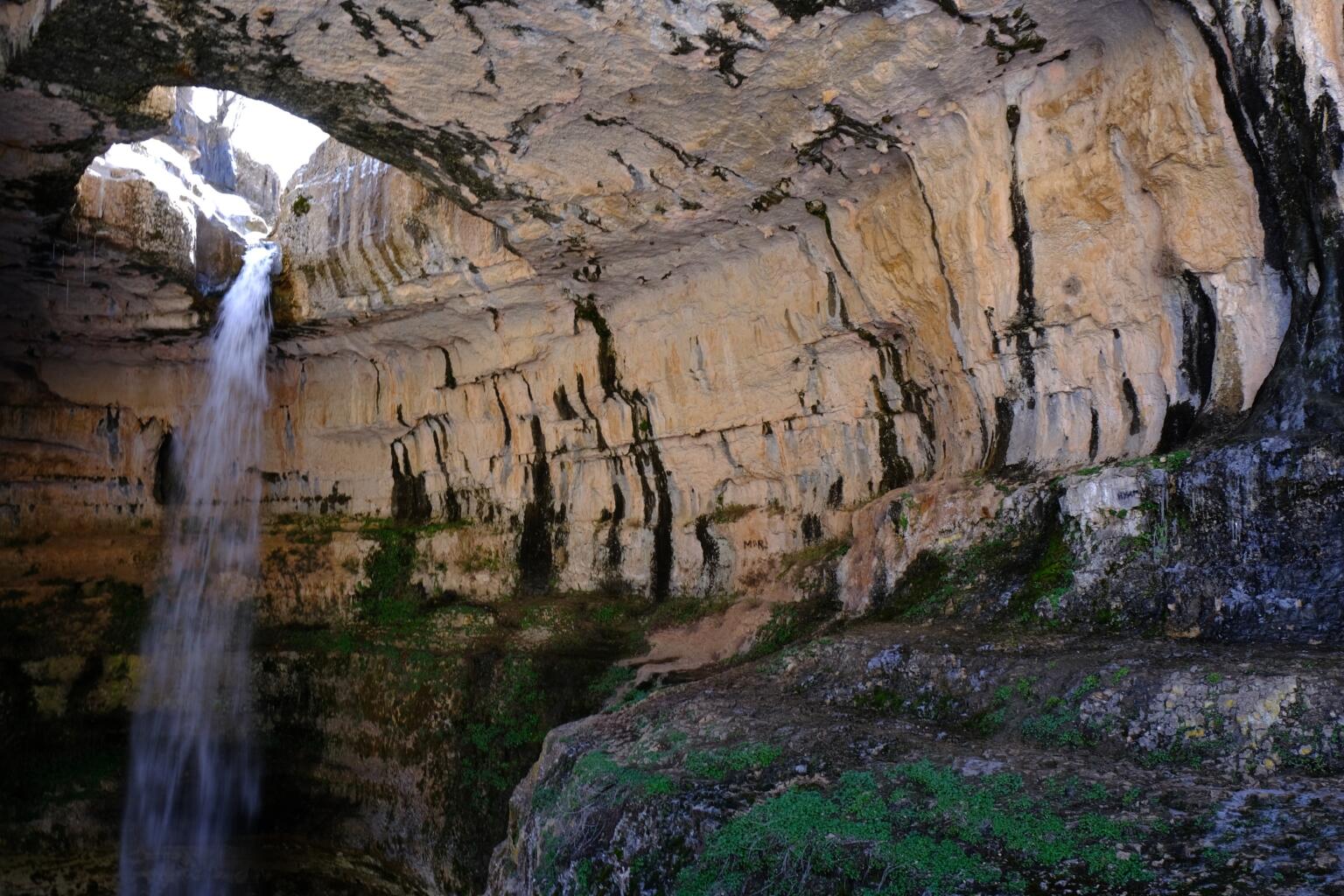
Photo: Chris Lininger
Note: In the winter you CAN’T access Baatara via the Bcharre-Tannourine road OR from any other of the small mountain roads EXCEPT the main road coming from Byblos, which the local government snow plows.
Camping is possible here, though in the summer Baatara can be quite crowded and you wouldn’t likely be able to set up shop until towards the end of the day. I saw people camping here in Janaury, but the night time temps were well below freezing. Summer camping may not be allowed, but I don’t know for sure.
How Not to Die at the Baatara Gorge
If you plan to go down to the man sinkhole/waterfall area be very, very careful. In the winter, the whole natural bridge is completely frozen with ice and the whole path down to it was also covered in snow and/or ice.
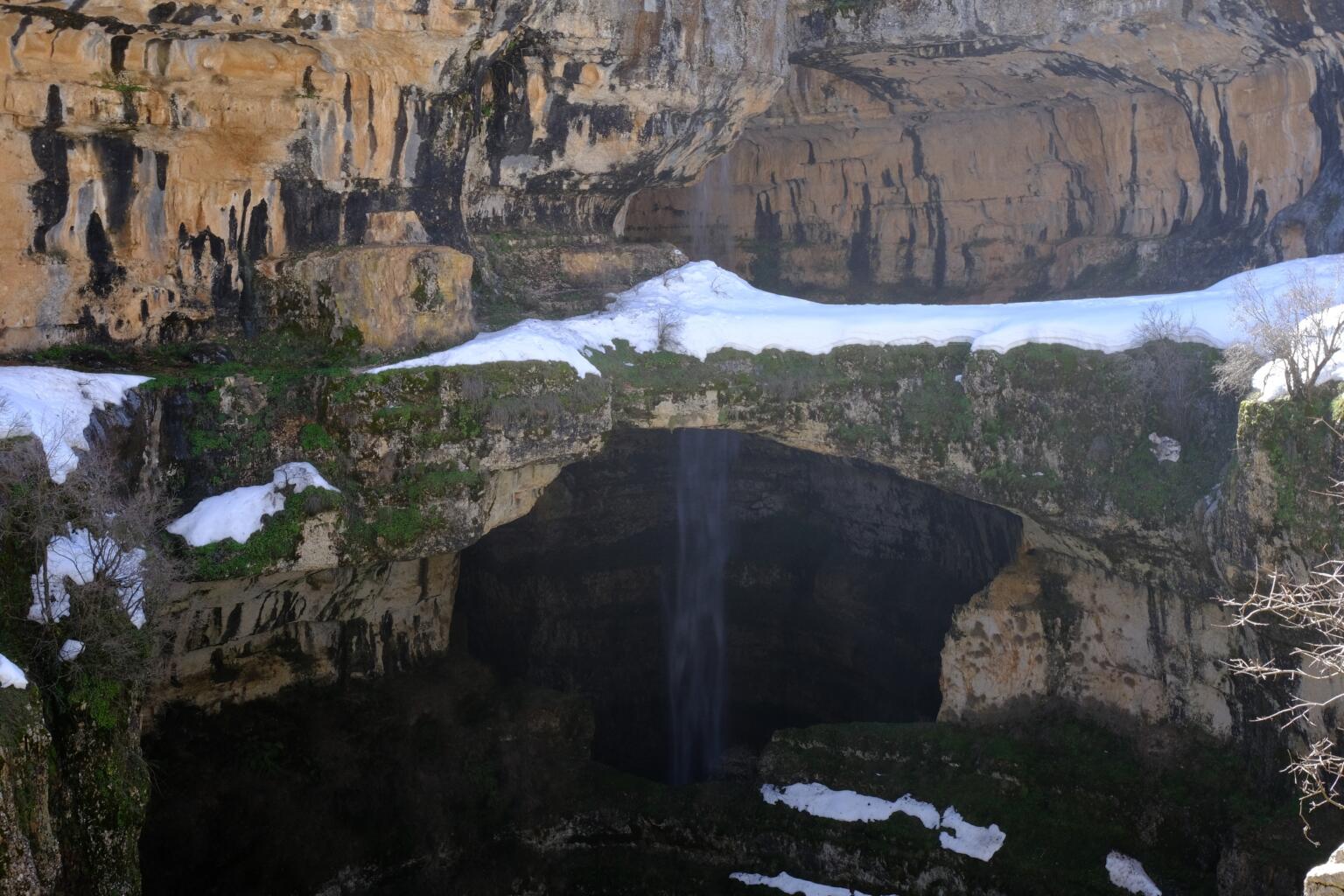
Photo: Chris Lininger
Once on the natural bridge, there is only a 2-meter width of standing space (on ice) and a 250-meter drop on either side. If you slip and fall off, you will most certainly die. Again this was totally iced over when I was on it, so please don’t do anything stupid or make any sudden movements while on the bridge at any time of the year. Use microspikes, trekking poles, and even crawl if you have to.
In the summertime, walking on the natural bridge is probably not as dangerous, but in the winter/when ice is present, you need to be fully focused and on high alert when you are anywhere near the edge of the sinkhole so that you can avoid a pointless and premature death. No photograph is ever worth dying for. Don’t be the next selfie-taking news headline.
Backpacking Saida/Sidon
Once back in southern Lebanon, be prepared to eat very well! The food in Saida is unreal. Wandering around the Old Souk, there are endless delicious looking pastries, street food options, and fresh fruit and veggie vendors.
The kneffe in Saida is on another level (an amazing warm, cheesy desert). Saida is probably my favorite big city in Lebanon. It’s got lots going for it: historical sites, awesome food, fun markets, nice locals, and some of the best (and cleanest) beaches in Lebanon are not too far away.
If you have the time, plan to stay in Saida for at least a couple of days.
Top Things to do in Saidia:
- Old Souk: One of the best souks I visited in Lebanon for sure.
- Soap Museum: Saida has been ground zero for soap manufacturing since forever. The soap museum is an interesting place to learn about the history and process of soap making here.
- Saida Castle on the Sea: Just what it sounds like. Entrance fee: 8,000 LBP.
- St. Nicolas Church: Plenty of cool mosaics and interior decor.
- Al-Omari Mosque: One of the oldest and most important Mosques in southern Lebanon.
- Falafel Akawai: Amazing falafel sandwiches for $2. Located in the Old Souk.
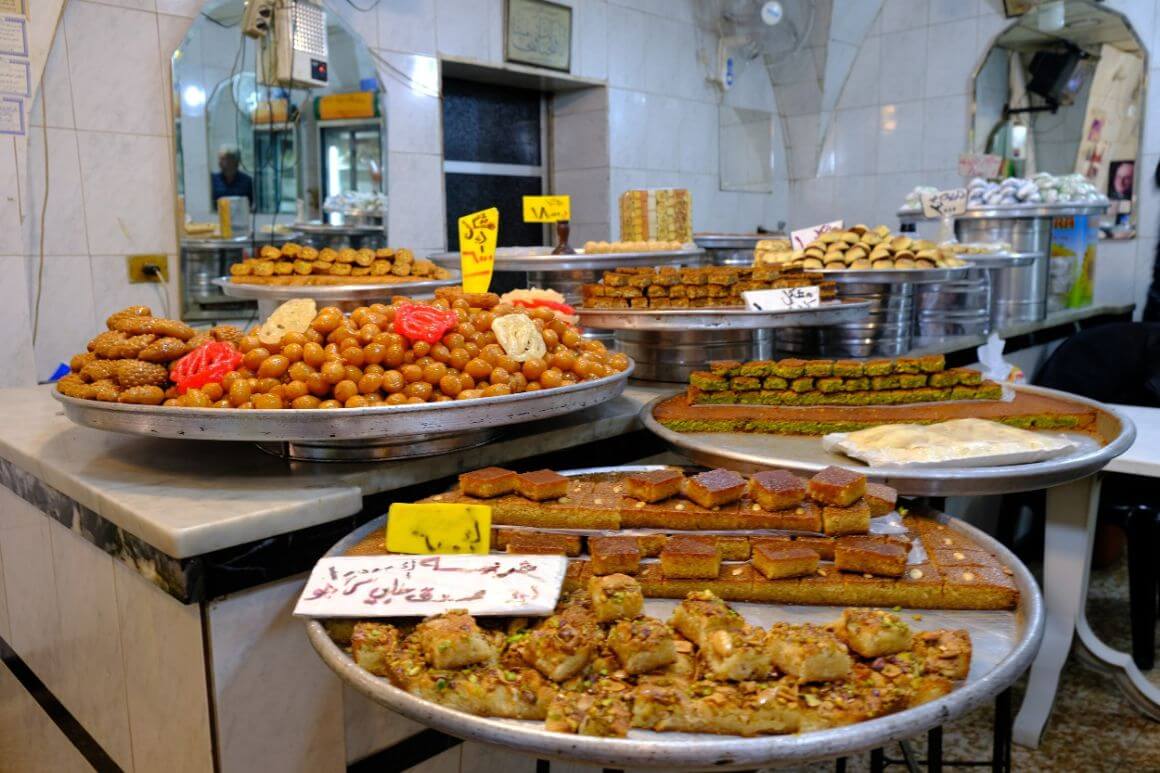
Photo: Chris Lininger
Backpacking Tyre/Sour
Just 45 minutes south of Saida is the coastal city of Tyre. Tyre is a short drive from the inaccessible border with Israel, so yeah, this is basically the end of the line geographically for most backpackers in southern Lebanon.
Tyre is also worth spending a few nights in. Like Saida, Tyre has a cool Old Souk (alright, most places in Lebanon have awesome Old Souks!). The Souk is divided into different sections based on what the merchants are selling (fish, veggies, meat, street food, clothes, etc).
The UNESCO World Heritage site known as the Old Egyptian Port (entrance 6000 LBP) is worth a visit. It’s a shame that the sea just in front of the site is horribly polluted with plastic shit and rubbish.
The Hara Neighborhood located by the fishing port is the best area in town to sleep. The streets are clean and have been restored with great skill following the end of the war. Grab a drink at the bar by the lighthouse for sunset.
On the opposite side of town, the seafront promenade “main drag” is the city’s main vein for shisha bars, cafes, restaurants and general nightlife happenings.
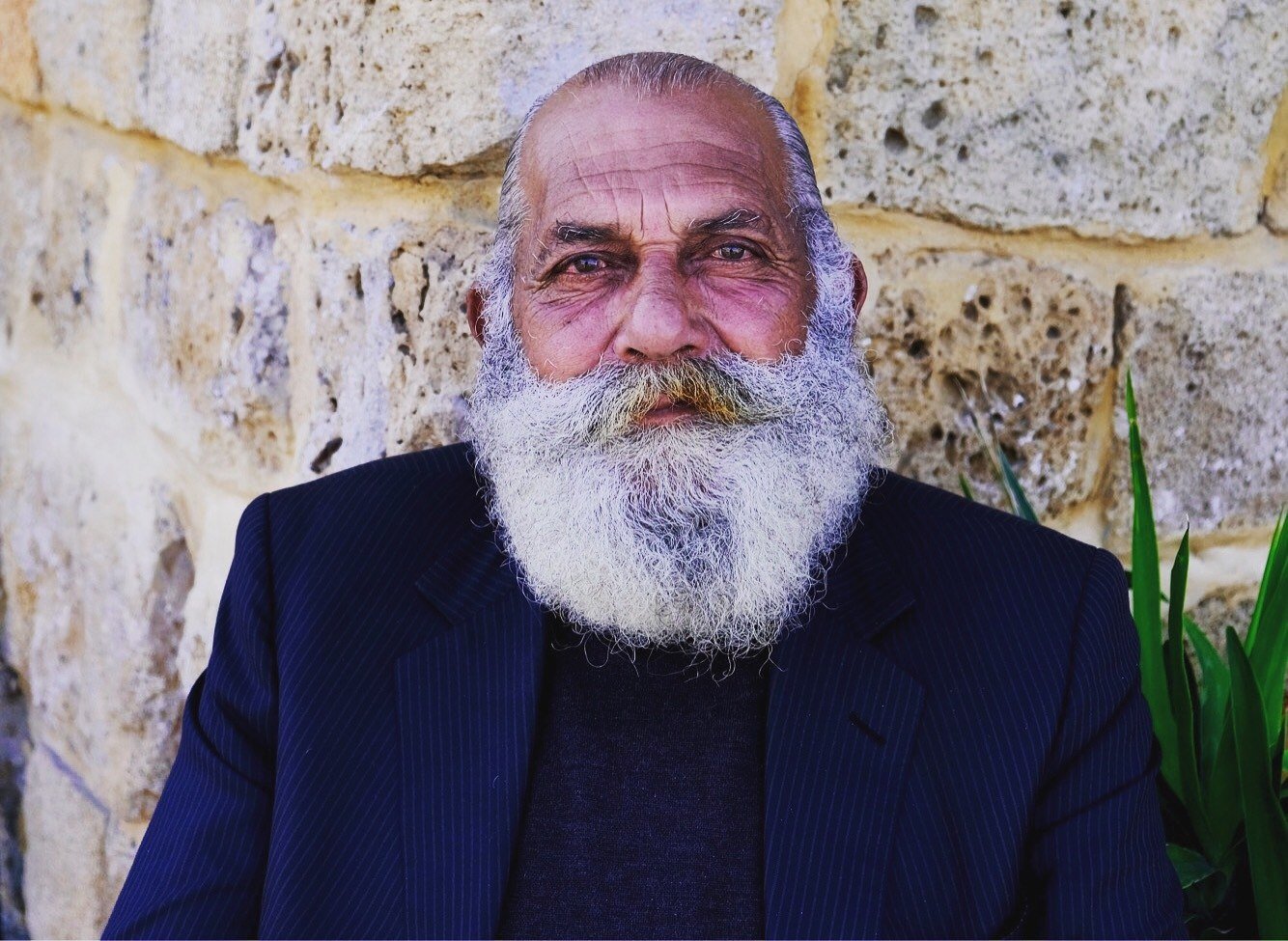
Photo: Chris Lininger
Over the last 50 years, Tyre has suffered terribly from one conflict after another. At the present moment, Tyre is peaceful, but its residents are all too aware of how close Israel is, and because of the tensions between the two countries, the potential conflict is just something that the residents must live with.
Hezbollah flags and propaganda posters are everywhere in Tyre, but again Hezbollah and its supporters could not care less about giving a backpacker a hard time.
Tyre is 100% safe. Just don’t go talking about how great Israel is and you will be fine (this is true whenever you are in Lebanon. Don’t say the “I” word.
Getting off the Beaten Track in Lebanon
The fact is that most of Lebanon is off the beaten path for travelers. I saw almost no other backpackers/tourists over the course of the near month I spent in Lebanon.
Apart from the famous sites like Baalbek, the Jeita Grotto, and parts of Beirut, the rest of Lebanon is not visited by foreigners in heavy numbers.
Lebanon is indeed one of the least-touristy countries I have ever been to. Only Pakistan has felt more off the beaten track as a whole then Lebanon.
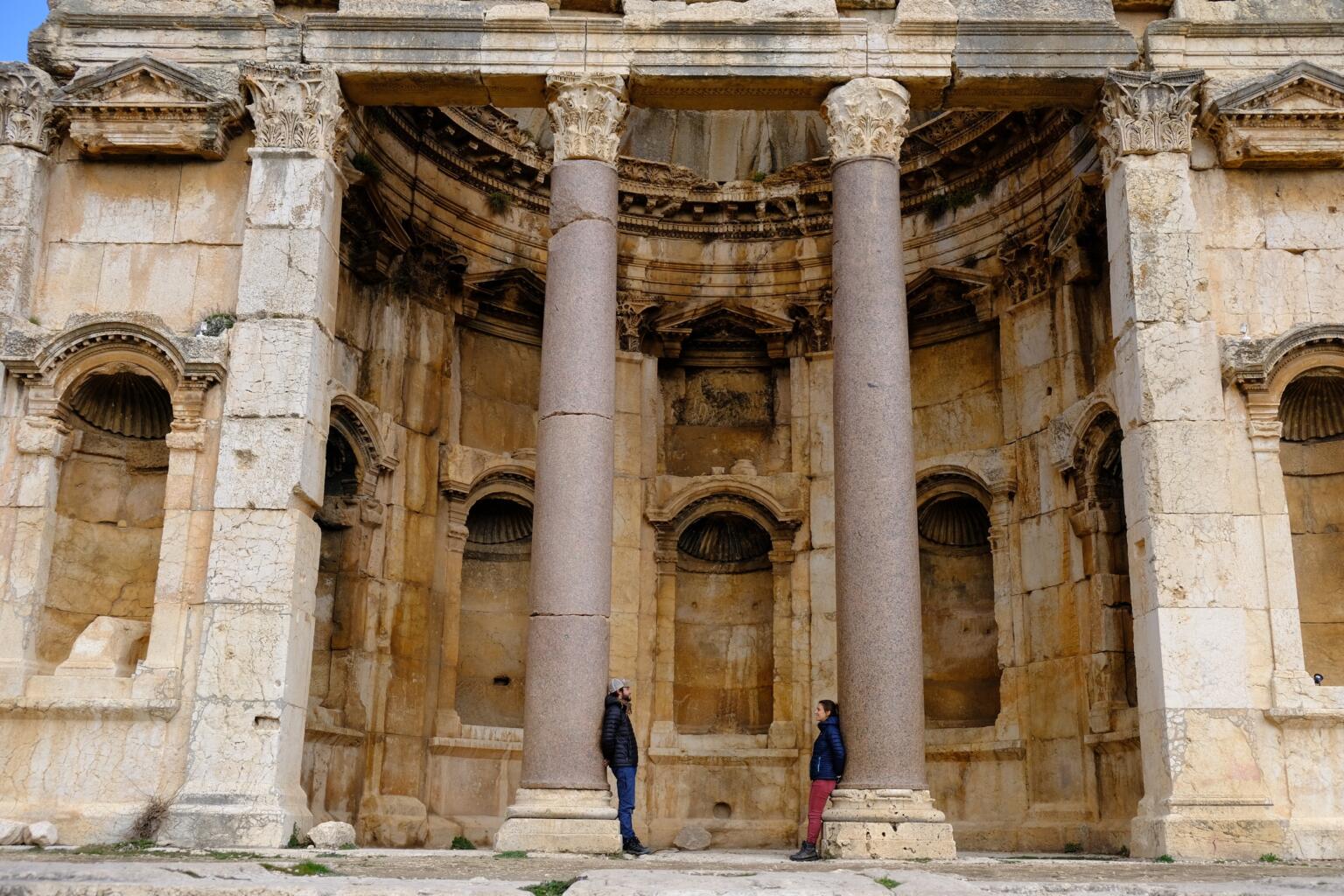
Photo: Chris Lininger
As soon as you set foot out of Beirut or the other above mentioned sites, you are not bound to see many other foreigners, which leaves the door to discovery and exploration wide open.
One absolute gem of an unorthodox adventure, is Mt Mleeta Resistance Memorial otherwise known as “Hezbollah Land”. Situated on Lebanon’s Southern border with Israel, it is the former battle front from Hezbollah’s war with the occupying Israeli army which has been turned into an open air museum. The museum is operated by serving Hezbollah soldiers making it a controversial, but fascinating experience.
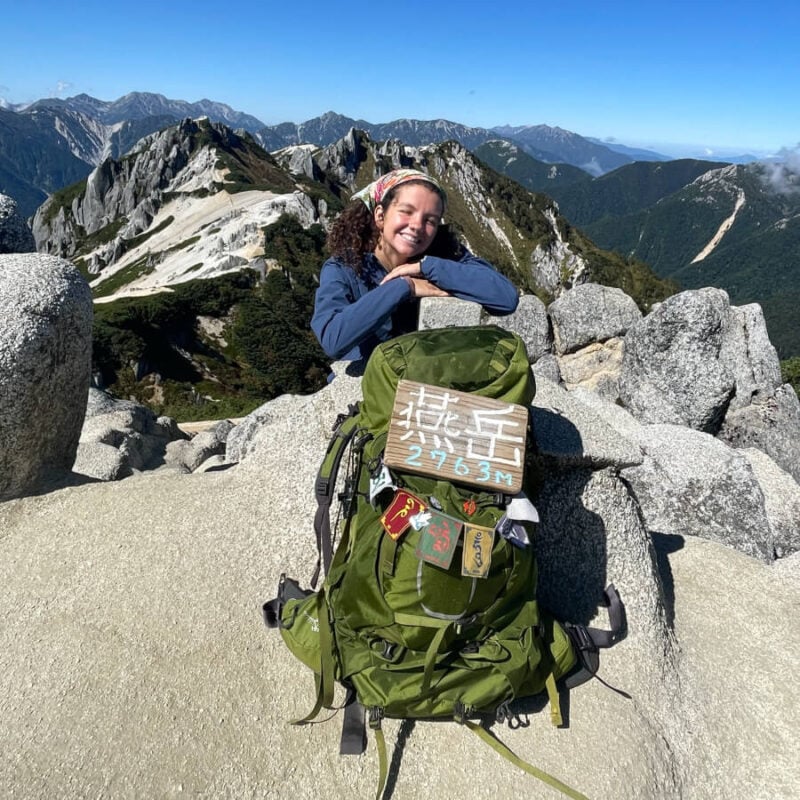
We’ve tested countless backpacks over the years, but there’s one that has always been the best and remains the best buy for adventurers: the broke backpacker-approved Osprey Aether and Ariel series.
Want more deetz on why these packs are so damn perfect? Then read our comprehensive review for the inside scoop!
View on Osprey View on REITop Things to Do in Lebanon
Below I have listed the 10 best things to do in Lebanon.
1. Explore the Jeita Grotto
There is a reason that the Jeita Grotto was a nominee to join the “7 wonders of the world” list. This place is total magic and is not be missed!
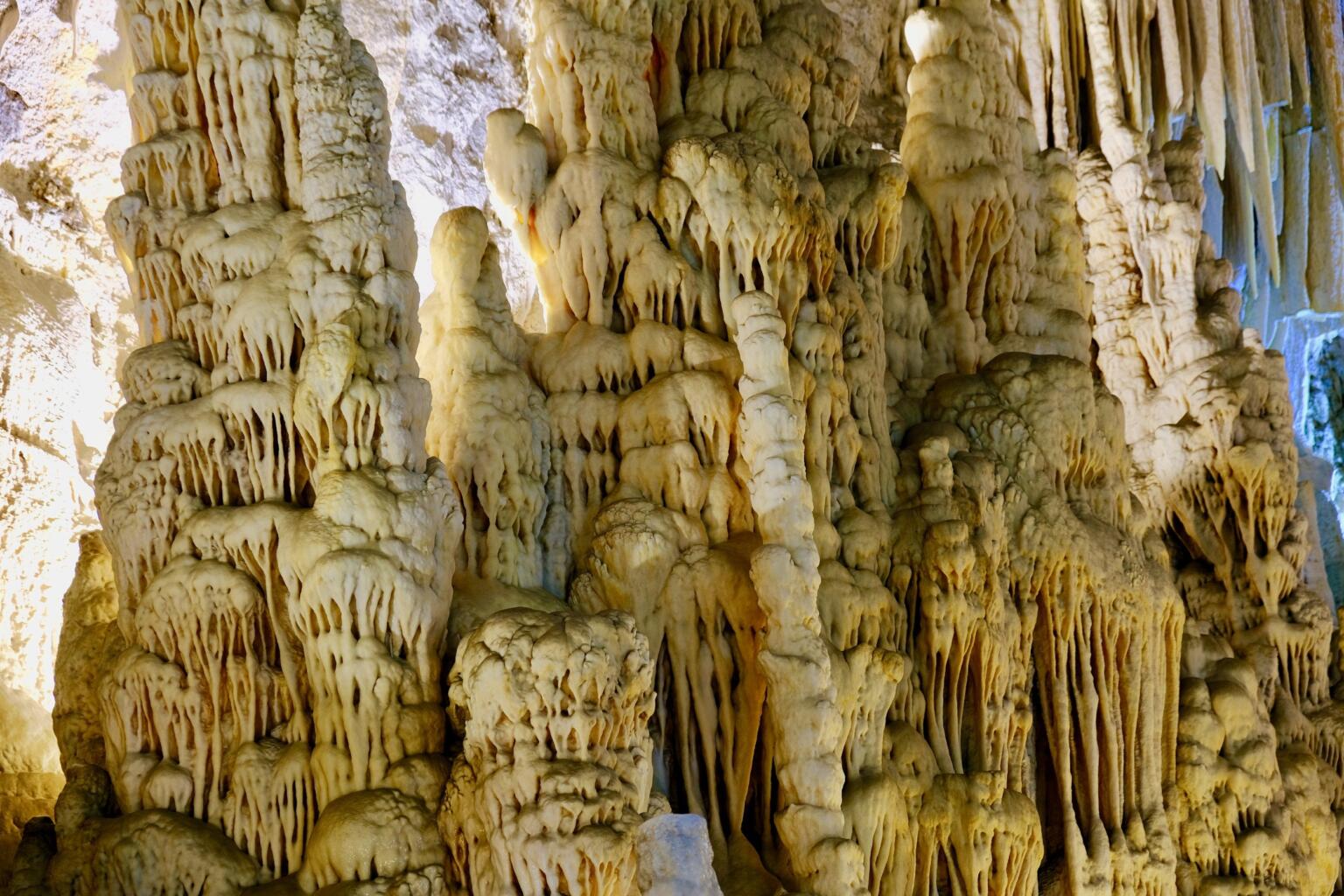
Photo: Chris Lininger
2. Get Lost in the Old Souks
Oddly enough, Beirut does not have a massive regional souk. In just about every other city though, you can wind you way through ancient market streets and small forgotten allies to discover the true sights, smells, and tastes of modern Lebanon.
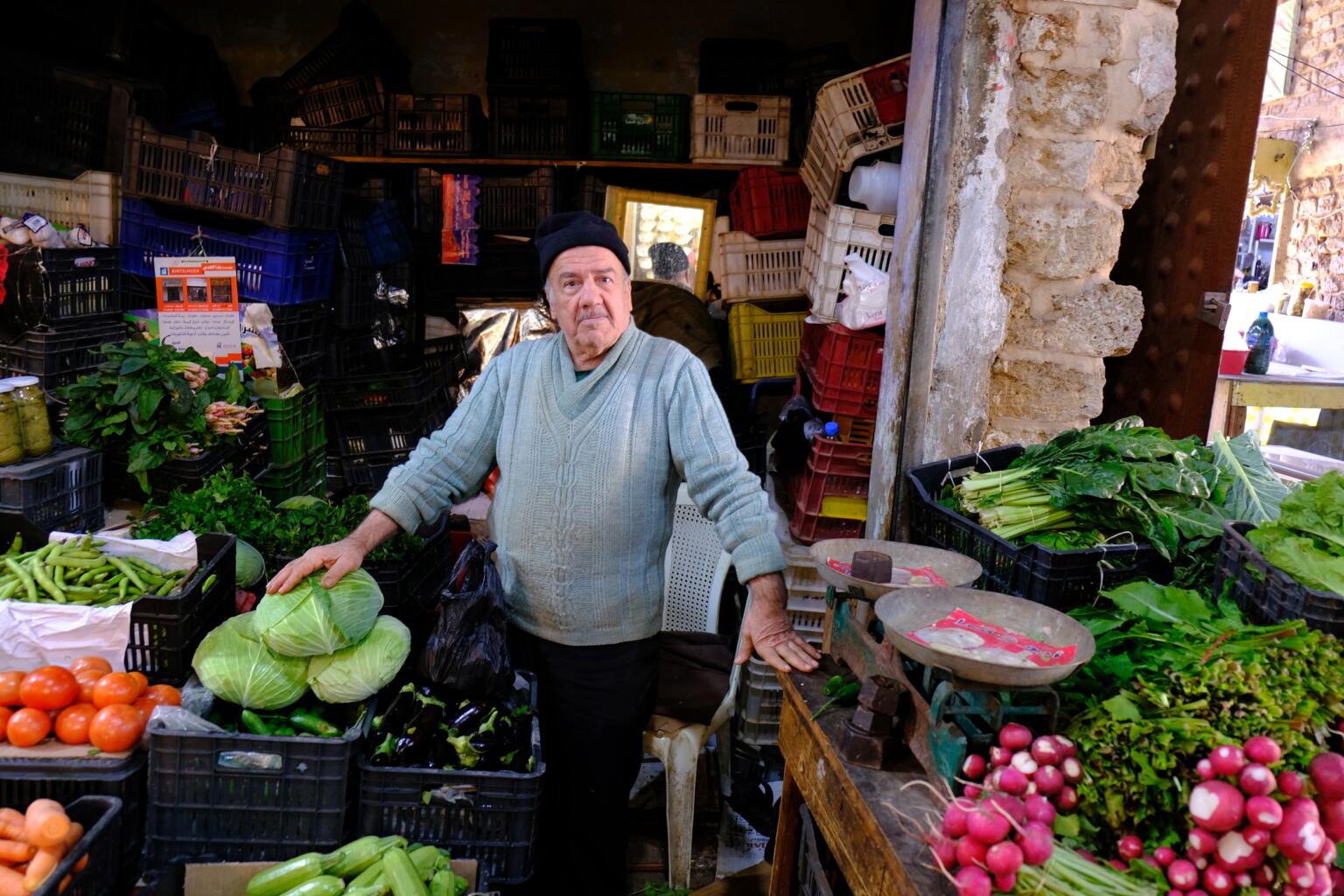
Photo: Chris Lininger
3. Stay in a Monastery
Lebanon is home to some truly incredible monasteries in the mountains, some of which you can spend the night at!
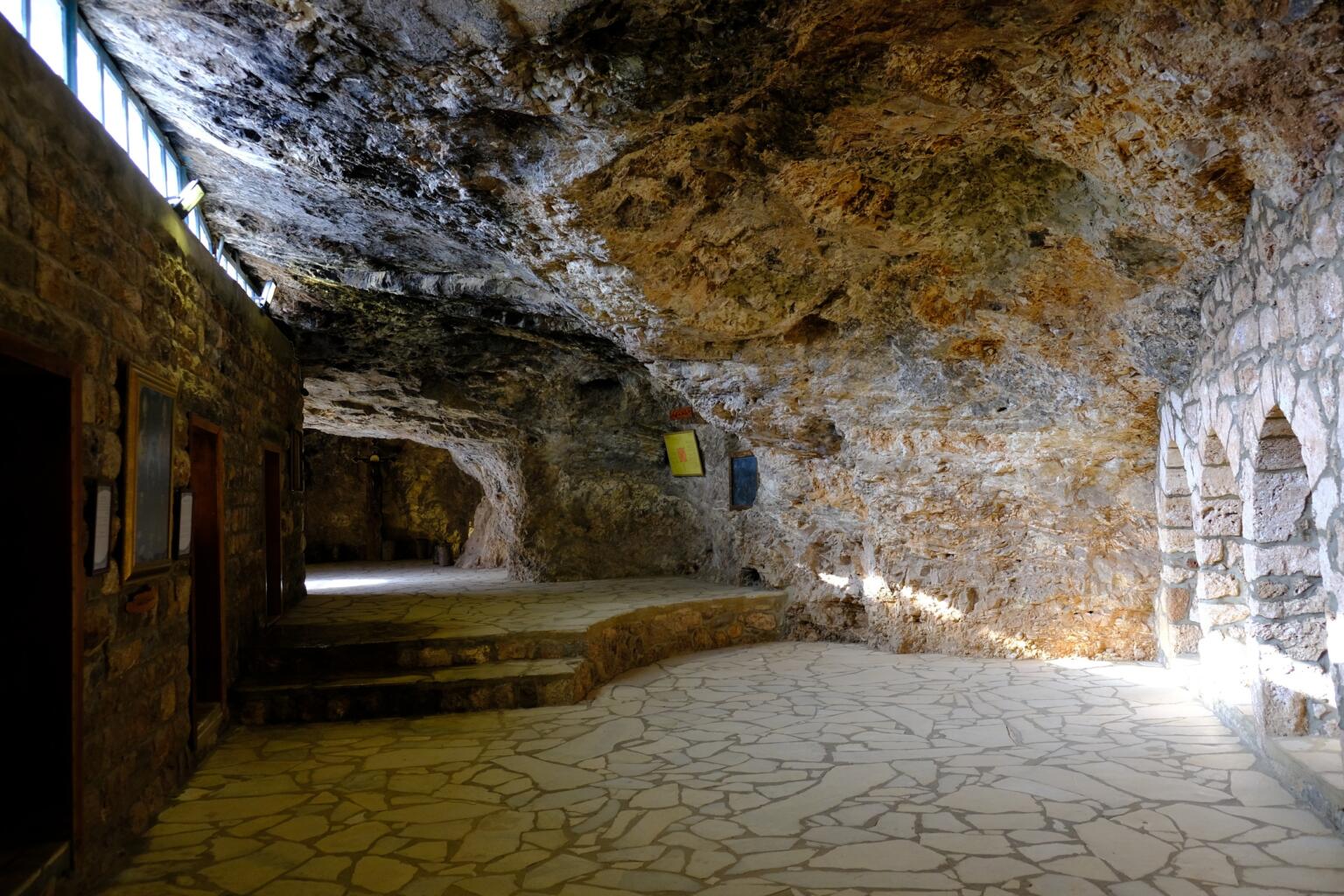
Photo: Chris Lininger
4. Eat Meze
Meze is a broad term for all of the amazing small/side dishes found in Lebanese cuisine. Meze can just be the appetizers, or it can easily turn into a huge spread for an entire meal. Hummus, baba ganoush, fatoush, grape leaves, labneh, spicy potatoes are all amazing meze dishes.
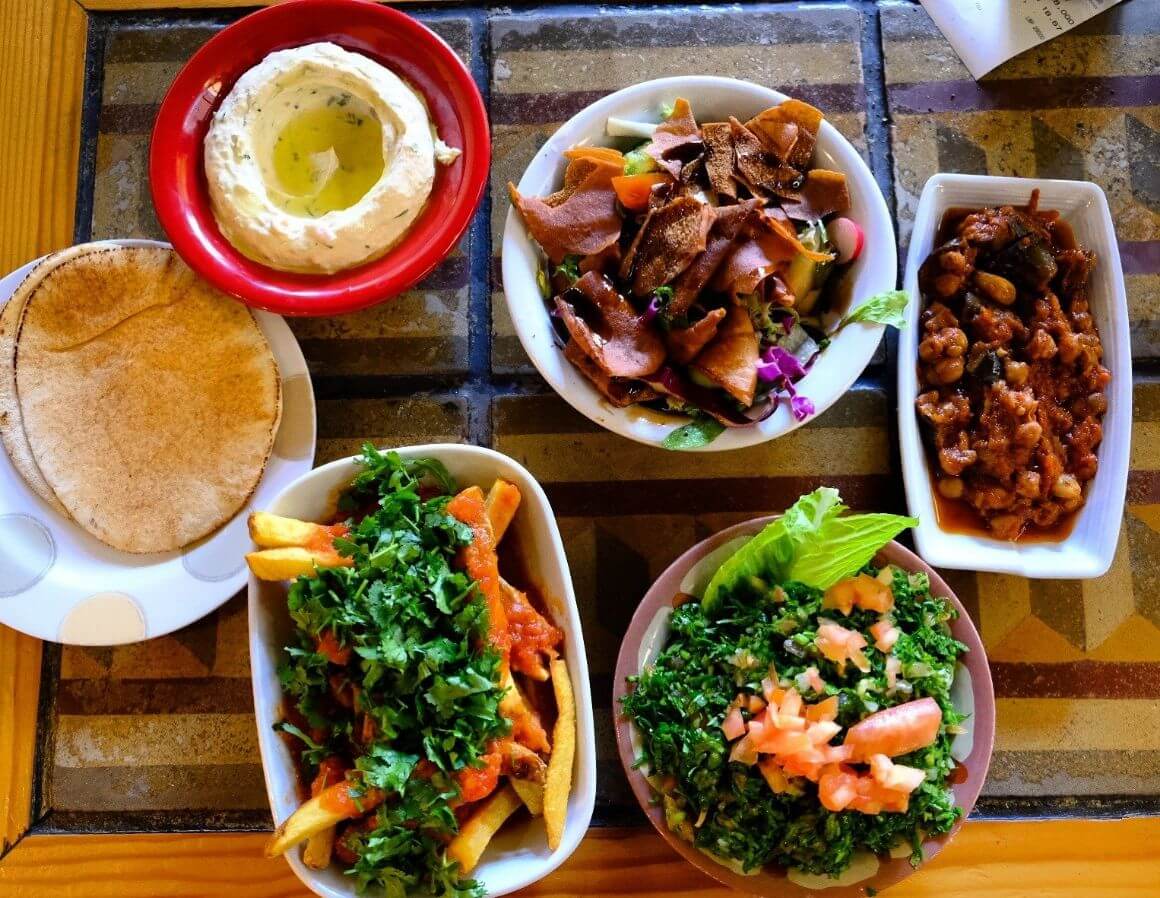
Photo: Chris Lininger
5. Visit the Mosques and Churches
Just about everywhere you go in Lebanon, you will find a beautiful mosque, a church, or both. Architecture, age, and interior design vary across the board and visiting these religious buildings offers a deeper insight into one of the major realities of Lebanese life: religion.
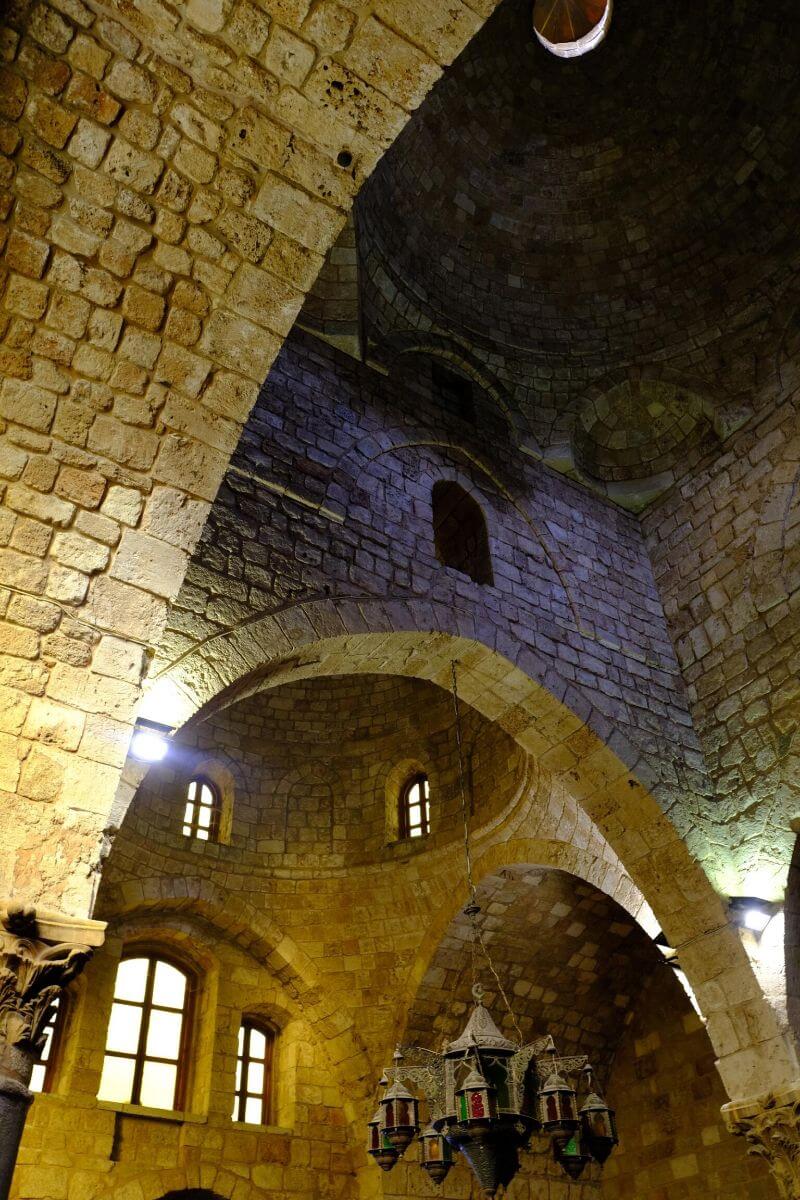
Photo: Chris Lininger
6. Experience the Bacchus Temple at Baalbek.
As far as ruins go, the Bacchus Temple at Baalbek is the most impressive man-made structure from history that I have ever seen. Also, not to be missed!
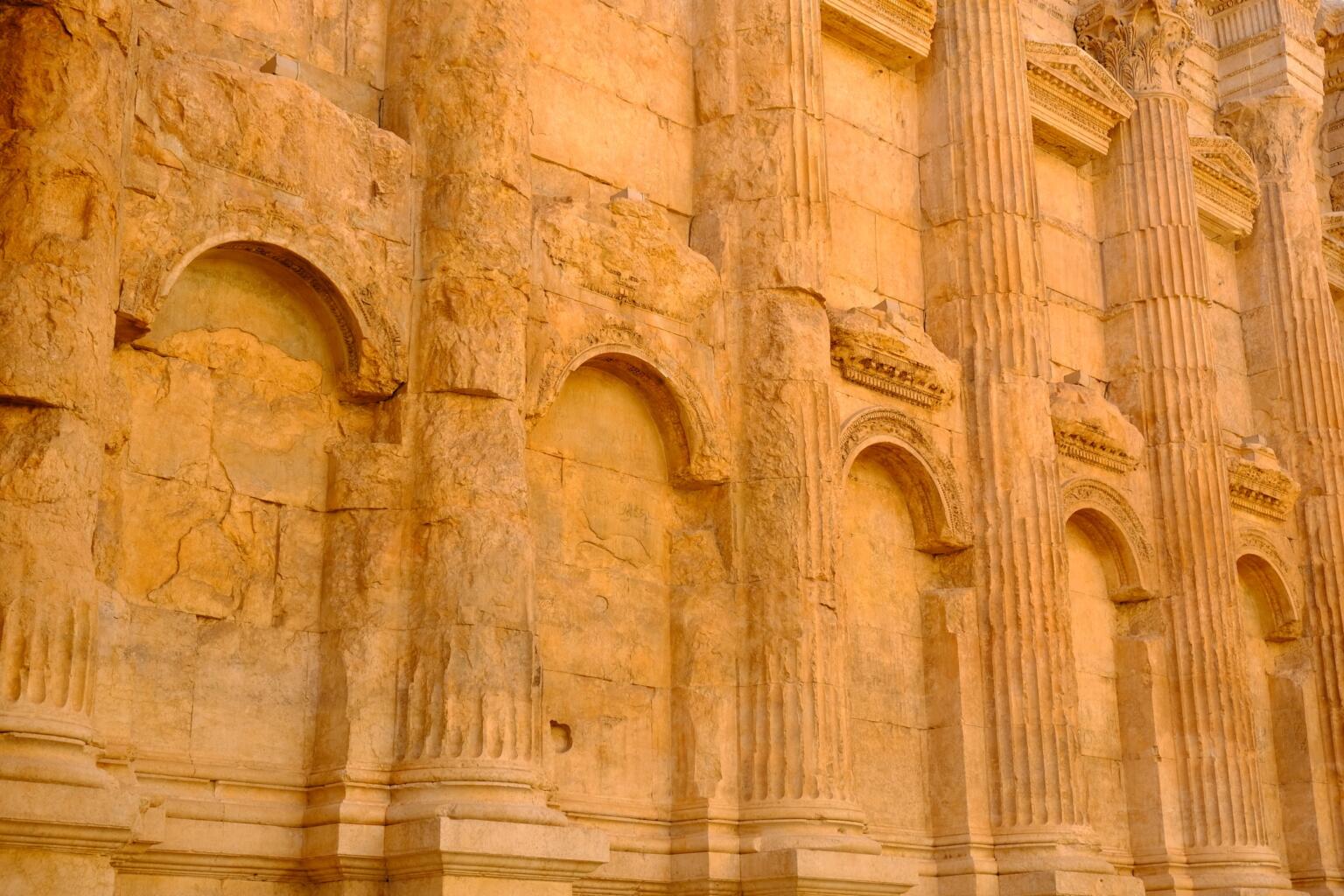
Photo: Chris Lininger
7. Be Wowed at the Baatara Gorge Waterfall
Lebanon’s second most famous natural attraction is equally as mind blowing as the Jeita Grotto, but in a totally different way.
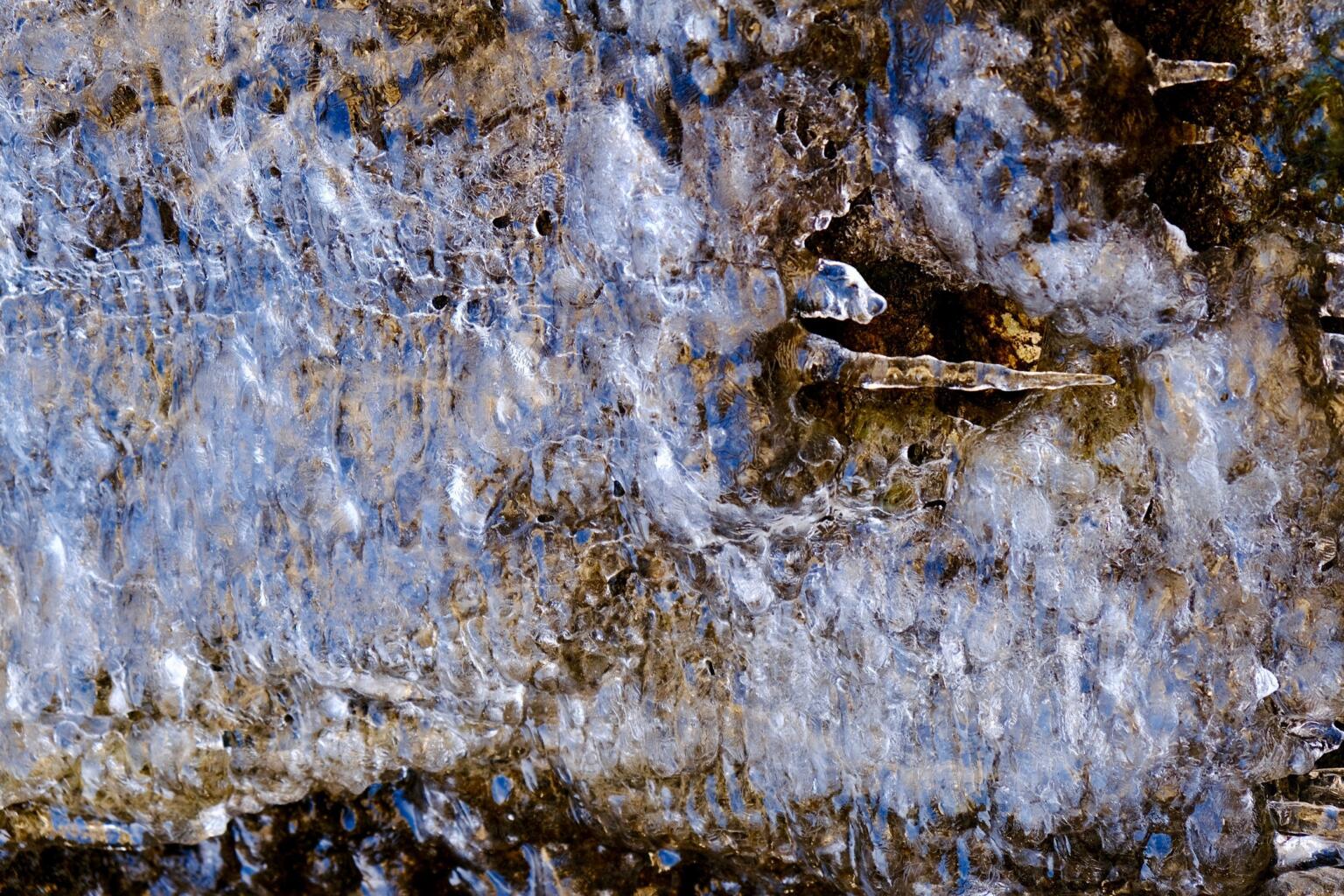
Photo: Chris Lininger
8. See the Ancient Trees at the Cedars of God Reserve
Whilst my own experience at the Cedars of God was far from a positive one, the trees here are incredible and if you get to see them on a day where hordes of people are not present, I am certain you will thoroughly enjoy yourself.
9. Go for a Hike in the Kadisha Valley
Monasteries, forts, waterfalls, and miles of hiking trail make the legendary Kadisha Valley one of the most compelling areas in all of Lebanon.
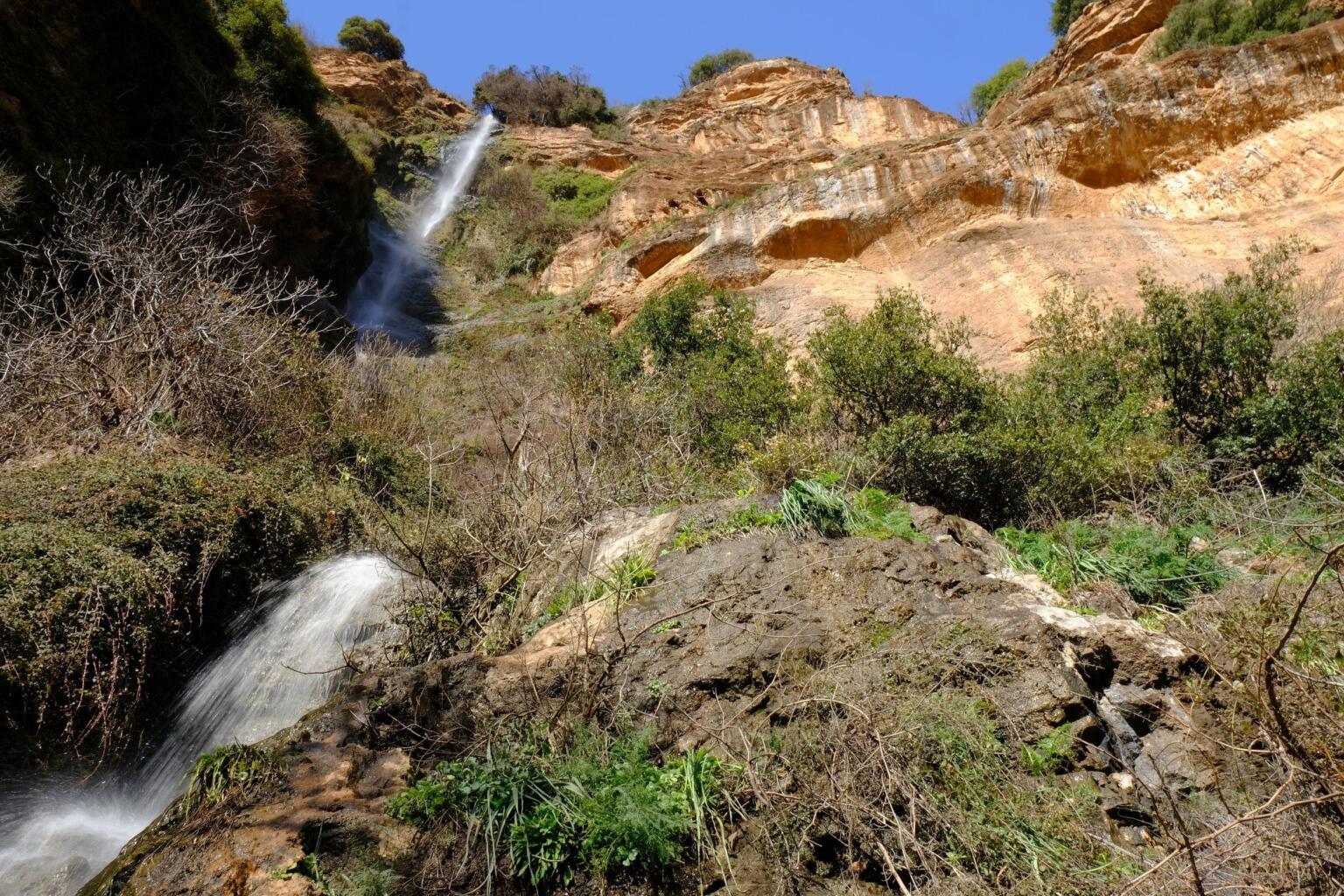
Photo: Chris Lininger
10. Try Arak
Arak is a popular liquor throughout the Middle East. It is an especially important beverage in Lebanon. I was told that if you eat any sketchy street meat, a couple of shots of Arak will all but guarantee that you won’t get sick as the parasites cannot survive a good Arak bath in your stomach.
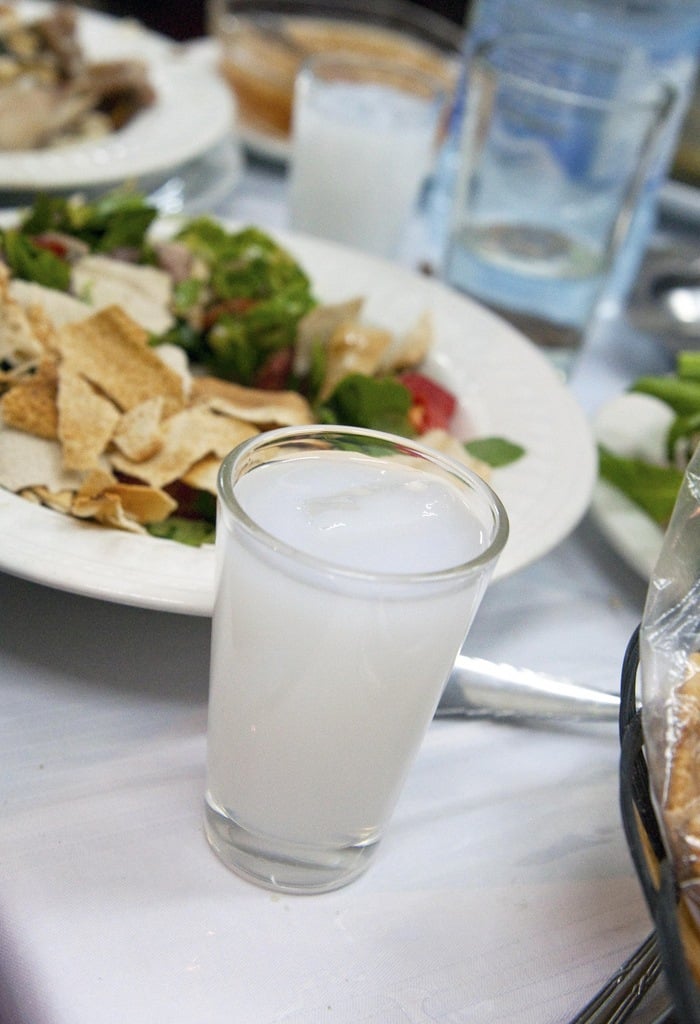
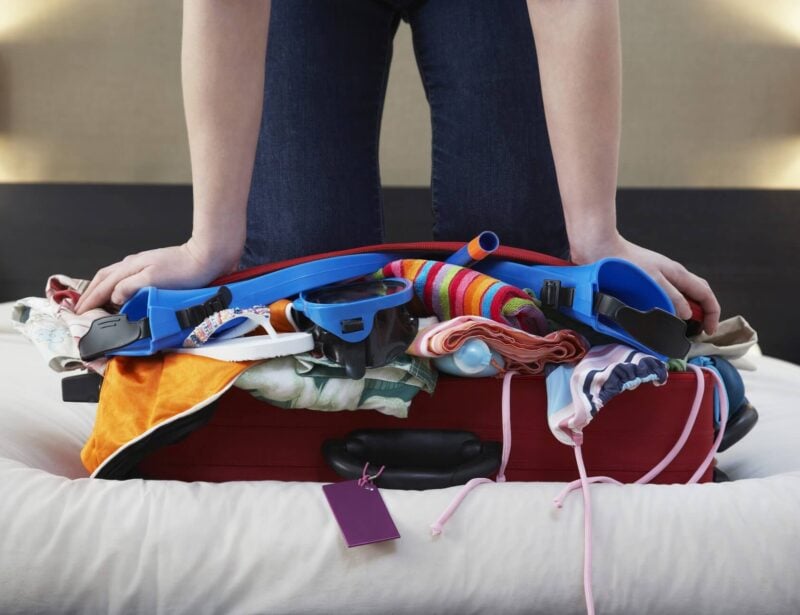
Wanna know how to pack like a pro? Well for a start you need the right gear….
These are packing cubes for the globetrotters and compression sacks for the real adventurers – these babies are a traveller’s best kept secret. They organise yo’ packing and minimise volume too so you can pack MORE.
Or, y’know… you can stick to just chucking it all in your backpack…
Get Yours Here Read Our ReviewBackpacker Accommodation in Lebanon
Finding cheap backpacker accommodation in Lebanon is not without its challenges. Save for Beirut, there are virtually no hostels to be found anywhere in the country!
Lebanon is just not set up to facilitate a backpacker scene as of yet, and the lack of hostels reflect that. That said, you do have some options. Just don’t expect to find $10 dorm beds anywhere in Lebanon.
Your best bet for finding cheap accommodation is to book midrange hotels and cheap Airbnb apartments.
Whilst not dirt cheap, you can find some decent places in the $35 – 50 per night range. If you go for an ultra-budget hotel, it is likely to be a shit hole in an unfavorable area, so unless absolutely necessary, avoid staying at the bottom of the barrel hotels.
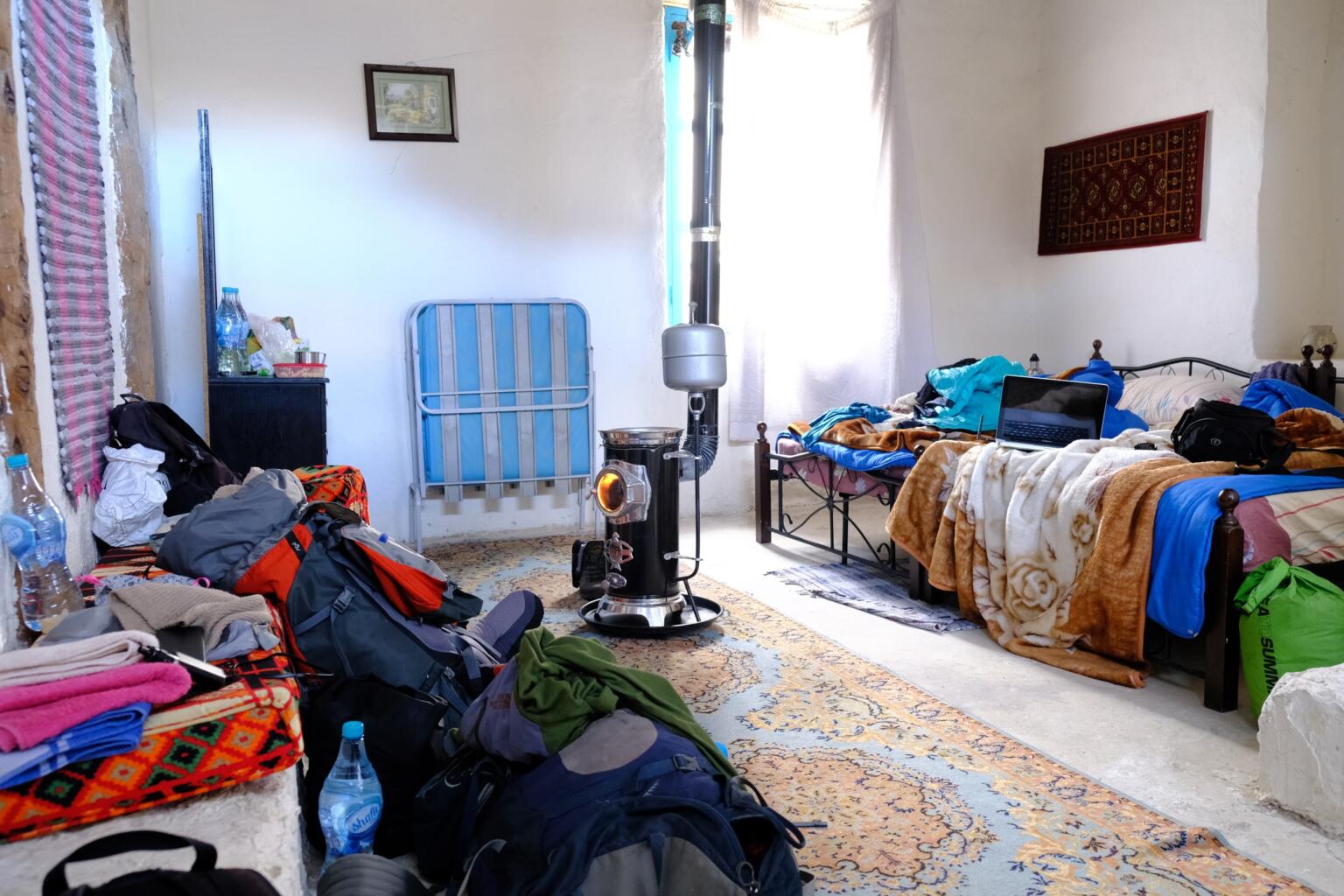
Photo: Chris Lininger
Camping (in the mountains) and Couchsurfing are also legitimate options in Lebanon.
Th Best Places To Stay in Lebanon
| City | Hostel | Why we Like it?! |
|---|---|---|
| Beirut | Saifi Urban Gardens | Located in one of the best areas of the city. Awesome atmosphere, close to everything. |
| Jounieh | Luxor Hotel | Friendly staff, comfortable rooms with an amazing view!! |
Yeah… as you can see the hostel options are seriously lacking in Lebanon.
Lebanon Travel Costs
One of the most important questions any backpacker should be asking is, “is Lebanon expensive?” The short answer is that it is neither cheap nor crazy expensive. If there were a number of backpacker hostels scattered throughout the country, then yes, Lebanon would indeed be a cheap country to travel in.
Because there are in fact barely any budget hostels in Lebanon, it is hard to travel in Lebanon on a total shoe string budget.
Not including a rental car, one can travel in Lebanon on $40 – 60 per day and be comfortable and happy. If you have another person to split the hotel room costs, your costs will be in the $40 – 60 range easily.
Food in Lebanon is worth spending money on and generally isn’t insanely expensive either.
One can eat very well for under $10/day if you stick to street food like kebab type sandwiches and manouche (like a breakfast pizza covered in either Zaatar spices or Labneh). For $20/day you can seriously eat like a king (meat dishes tend to be a little pricey though).
Entrance fees to major attractions range from around $5 USD to $15 USD depending on what the attraction is.
Groceries from a super market or small shop are reasonable and one can easily cook an excellent meal for $5 -10 worth of store bought ingredients.
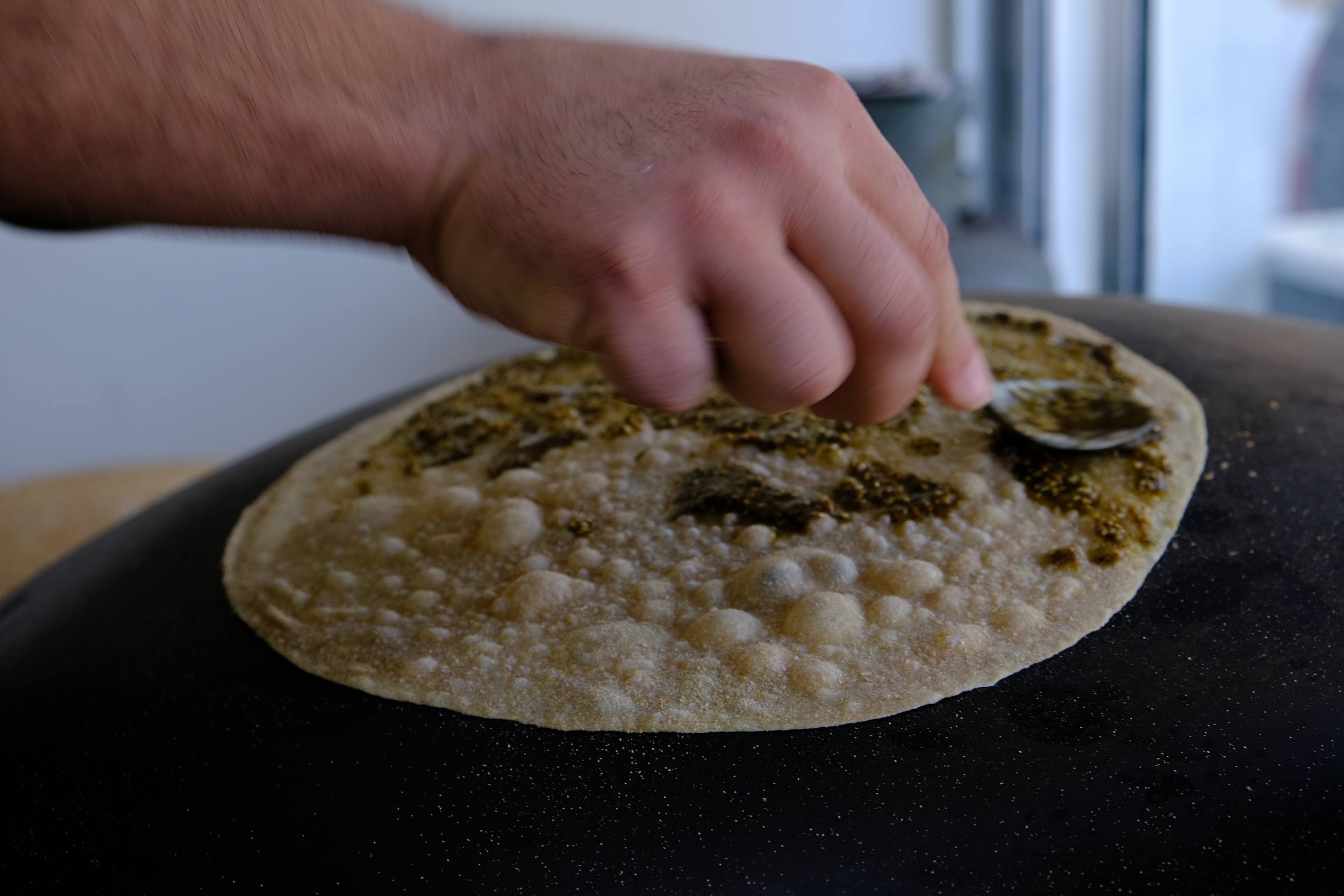
Photo: Chris Lininger
I recommend Couchsurfing as much as you possibly can. The more you Couchsurf and hitchhike, the more money you can spend on wine, good hummus, and activities like paragliding. Pure and simple.
As I mentioned before (and will again), having a good tent and sleeping bag are crucial to budget backpacking. Both will save you a ton of money on accommodation. Whilst backpacking in a hostel-less country like Lebanon, having the right gear and ability to camp out (when possible) is very important to keep costs to an absolute minimum.
Below is a list of what you can expect to spend on a daily basis (excluding car hire) whilst backpacking Lebanon.
Lebanon Daily Budget
| Expense | Broke Backpacker | Frugal Traveler | Creature of Comfort |
|---|---|---|---|
| Accommodation | $10 | $18 | $50 |
| Food | $10 | $16 | $25 |
| Transport | $3 | $5 | $15 |
| Nightlife | $12 | $18 | $50 |
| Activities | $10 | $20 | $30 |
| TOTAL | $45 | $77 | $170 |
Money in Lebanon
Fun fact: Lebanon has two currencies. That’s right!
Lebanon’s two currencies are the Lebanese Pound (LBP) and the US Dollar (USD).
Both currencies are widely accepted everywhere in Lebanon. If you pay with USD you will likely get your change in LBP.
Find out how much your money is worth today by using the up-to-date converter below.
Paying with USD for things like hotel rooms and entrance fees to attractions is the way to go if you have the USD on you. Likewise, you don’t really need to have US dollars in Lebanon. I think the locals are now starting to trust their own currency because I rarely saw Lebanese people pay for anything using USD.
I recommend carrying cash on you as credit cards are not always accepted. All of the day to day transactions are done in cash, not with cards.
Also, I has some trouble with the ATM machines not accepting my foreign bank card. Make sure that when you head into the mountains, you have plenty of cash because the ATM machines are few and far between!
Tip: Find out whether or not your bank in your home country has fee-free international withdrawal. If so, activate it for your trip or for whenever you travel abroad. Once I discovered my bank card had that option, I saved a huge amount in ATM fees! When traveling to Lebanon on a budget, every dollar counts right?
Travel Tips – Backpacking Lebanon on a Budget
Camp: With plenty of stunning mountains and forests to explore, camping saves you money and can help you get off of the beaten path on an epic adventure.
Cook your own food: Travel with a portable backpacking stove or stay at a hostel with a fully-equipped kitchen. Cooking your own food to save some serious cash whilst backpacking across Lebanon. Make sure you buy camping gas BEFORE leaving Beirut as they don’t see it anywhere else in the country. The Decathlon store north of Beirut is where to find gas. Call first to make sure they have the kind you need in stock.
Why You Should Travel to Lebanon with a Water Bottle
Plastic washes up on even the most pristine beaches… so do your part and keep the Big Blue beautiful
You aren’t going to save the world overnight, but you might as well be part of the solution and not the problem. When you travel to some of the world’s most remote places, you come to realise the full extent of the plastic problem. And I hope you become more inspired to continue being a responsible traveller.
Plus, now you won’t be buying overpriced bottles of water from the supermarkets either! Travel with a filtered water bottle instead and never waste a cent nor a turtle’s life again.
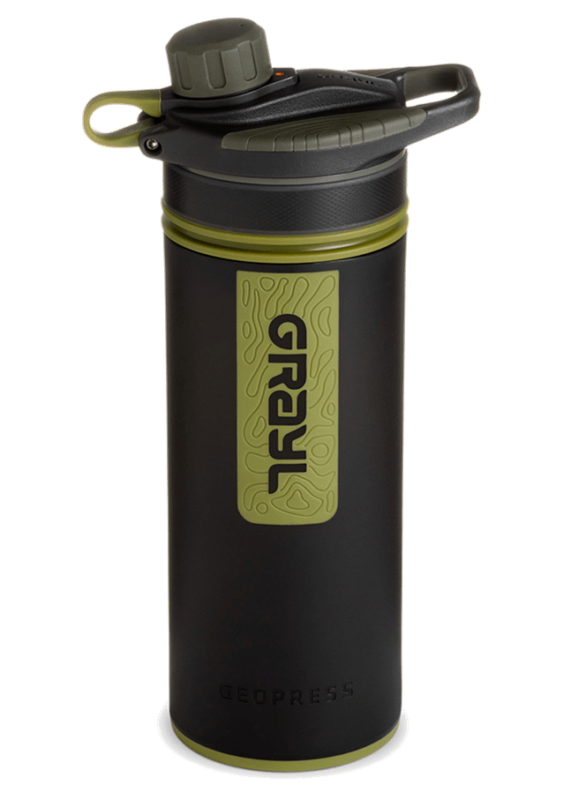
Drink water from ANYWHERE. The Grayl Geopress is the worlds leading filtered water bottle protecting you from all manner of waterborne nasties.
Single-use plastic bottles are a MASSIVE threat to marine life. Be a part of the solution and travel with a filter water bottle. Save money and the environment!
We’ve tested the Geopress rigorously from the icy heights of Pakistan to the tropical jungles of Bali, and can confirm: it’s the best water bottle you’ll ever buy!
View on REI Read the ReviewBest Time to Travel to Lebanon
I traveled to Lebanon during the entire month of January. For some things, the weather was perfect. The coast was absolutely beautiful and to be honest, I can’t imagine what the absolute toxic air of the coastal highway would be like in the summer heat.
For winter travel in the mountains, most of the time the roads were fine, and other times they were not. Whilst true that seeing the Lebanese mountains when they are covered in snow is magical, the snow also presents a number of other challenges.
Hiking options at high altitude are pretty much zero unless you have snow shoes and all the right gear. Likewise, many of the small roads are closed and impassable in the winter.
From what locals told me, late Spring and October are the absolute best times to visit Lebanon. Certainly, if you plan to do some hiking, the fall time is best.
Summers in Lebanon are just too hot, and the air too polluted (at least by the sea) for it to be enjoyable for most people.
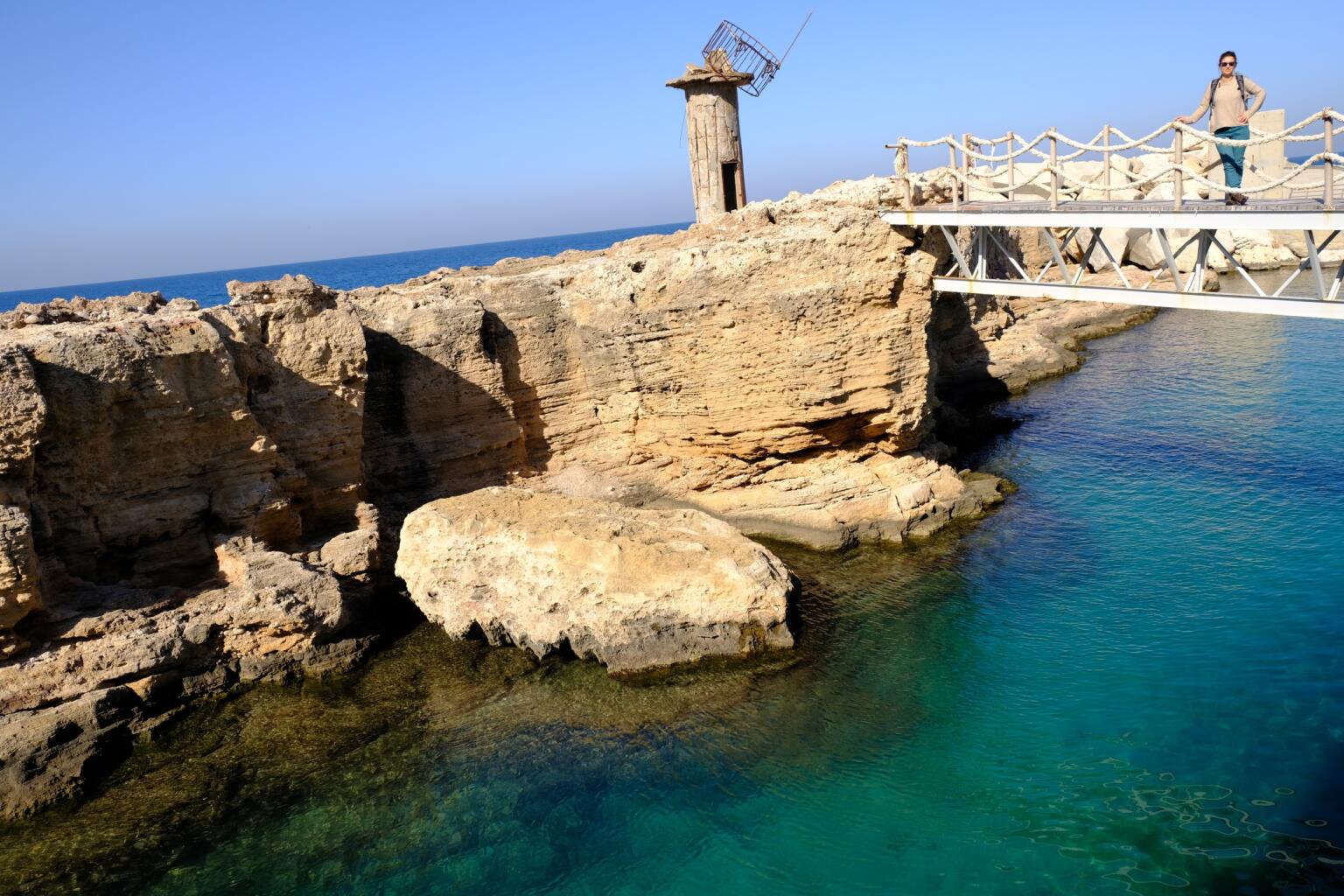
Photo: Chris Lininger
Winter is also fantastic, save for the few inconveniences mentioned above.
Be sure to pack warm stuff for the winter months! If you bring the right gear, like a solid rain jacket, a warm down jacket, and a badass sleeping bag, the cold nights in the mountains won’t really affect you. Check out my list of the 7 best jackets to take traveling here.
Festivals in Lebanon
The Lebanese love to have a good time (don’t we all?). Here are a few Lebanese festivals to look for:
Hippodrome Vinifest, October: 4-day wine festival is organized at the Hippodrome with all kinds of wine tasting activities, food stands and music entertainment.
Jounieh International Summer Festival, June/July: A 10-day international festival that is organized in Jounieh, providing outdoor shows, food and music… and lots of fireworks.
Byblos International Festival, July/August: A fun music/culture festival held in a beautiful setting overlooking the Byblos harbor and ruins.
Baalbek International Festival, July/August: Ever wanted to go to a festival held amongst epic Roman ruins? This is your chance.
Zouk Mikael International Music Festival, July: An annual one-week international music festival held in the vicinity of the Roman amphitheater just opposite the Old Souq.
What to Pack for Lebanon
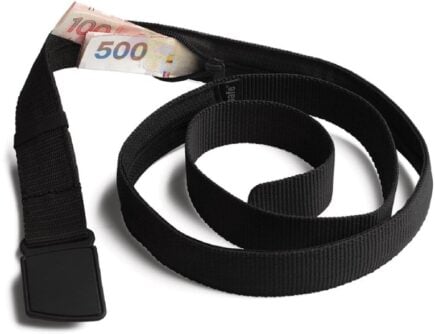
Travel Security Belt
This is a regular looking belt with a concealed pocket on the inside – you can hide up to twenty notes inside and wear it through airport scanners without it setting them off.
Microfiber Towel
Hostel towels are scummy and take forever to dry. Microfibre towels dry quickly, are compact, lightweight, and can be used as a blanket or yoga mat if need be.
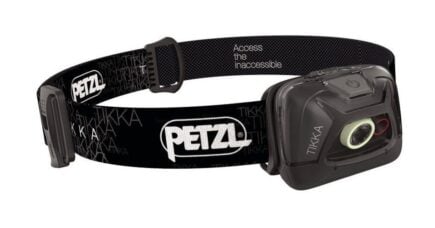
Petzl Actik Core Headlamp
A decent head torch could save your life. If you want to explore caves, unlit temples, or simply find your way to the bathroom during a blackout, a headtorch is a must.
‘Monopoly Deal’
Forget about Poker! Monopoly Deal is the single best travel card game that we have ever played. Works with 2-5 players and guarantees happy days.
Hanging Laundry Bag
Trust us, this is an absolute game changer. Super compact, a hanging mesh laundry bag stops your dirty clothes from stinking, you don’t know how much you need one of these… so just get it, thank us later.
Staying Safe in Lebanon
A quick Google search may reveal that Lebanon is not safe to travel to. That is utter bullshit. The security situation in Lebanon remains more or less stable and you can go to 95% of the places in the country without worrying about safety. You can read all our reasons why Lebanon is safe along with some tips and tricks, or read the summary below.
Backpackers should avoid traveling to remote north eastern areas just opposite the Syrian border. There is nothing worth seeing here anyway.
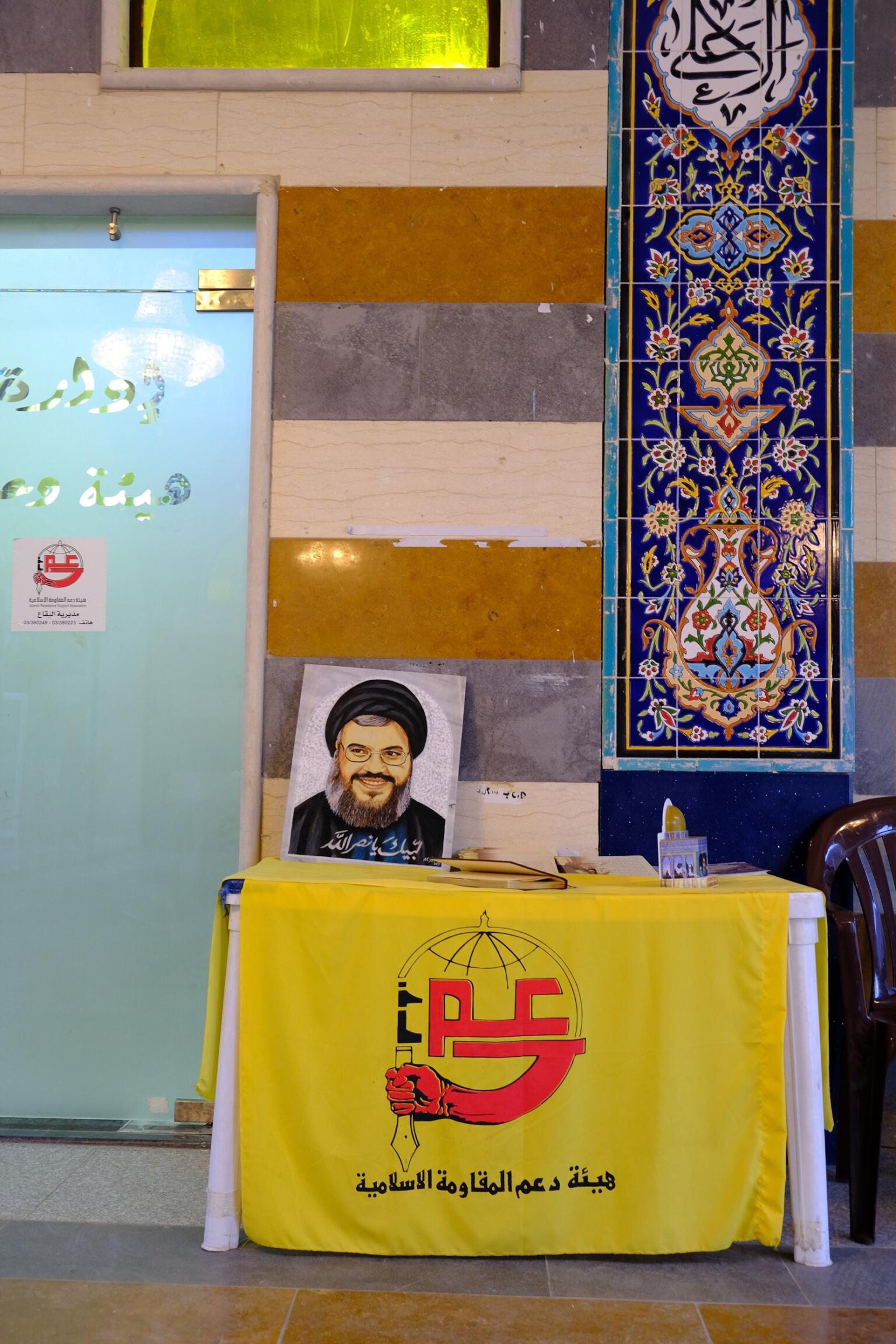
Photo: Chris Lininger
Likewise, trying to go too close to Israel border is just stupid. For one, the Lebanese soldiers won’t let you through without a special permit, and if you do get through and try to carry on into Israel, you will be arrested, shot, or both.
Beirut has a mixed reputation on safety. Around the city center, Hamra, and Mar Michael areas, it is totally safe, even late at night. I would however caution against aimlessly walking around in a part of town you do not know (especially not drunk or loaded with cash). There is a lot of poverty in Lebanon and sometimes desperate circumstances lead to desperate actions (like robbing foreigners).
In the Bekaa Valley and in southern Lebanon, Hezbollah is active and their support is substantial. Again, this doesn’t really change anything for us backpackers, but just so that you are aware. Don’t go around talking about how great the USA and Israel are and you should be just fine.
I would also avoid expressing your political opinion, your religious opinion, or talking about the civil war with people you have just met.
Many Lebanese people opened up to me about their experience with the war and about the religious tensions in Lebanon, but only after spending significant time with them first. Certainly, don’t push the subject. Be respectful and try to imagine how things must of been in Lebanon while the war raged for more than 15 years.
You will see that all over Lebanon the army has set up check points. These checkpoint are nothing to be worried about. Just be prepared for a heavy military presence every where you go in the country.
Check out Backpacker Safety 101 for tips and tricks to stay safe whilst backpacking.
Pick yourself up a backpacker security belt to keep your cash safe on the road.
I strongly recommend traveling with a headlamp whilst in Lebanon (or anywhere really – every backpacker should have a good headtorch!). Check out my post for a breakdown of the best value headlamps to take backpacking.
Sex, Drugs and Rock ‘n’ Roll in Lebanon
The Lebanese sure as hell love to party. In terms of alcohol use, Lebanon might just be the most tolerant and liberal muslim majority country in the Middle East. Beer, wine, arak, whiskey… you name it, it’s here.
Beirut has a pumping nightlife scene that has made it famous around the world. Alcohol, binge coffee drinking, and sheesha smoking: those are the three main vices in terms of substances in Lebanon. If you are looking to party, Beirut is the place.
Also, Lebanon is producing some of the tastiest wine I have ever tried, and if you have a chance go wine tasting in the Bekaa!
I am sure that there is weed/hash around too, I just never came across it. Lebanon does have some pretty serious drug laws though, so if you do go in search of something to smoke, be very careful how and where you go about getting it.
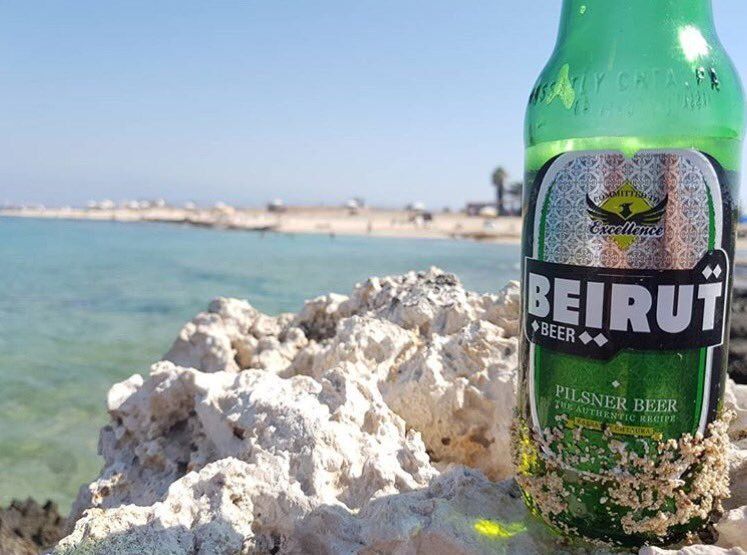
Photo: @beirutbeer.
My advice? If you happen to make friends with some young Lebanese dudes just ask them.
As a whole, Lebanese society is not nearly as conservative as other Muslim majority countries. If you are a woman walking down the street without your hair covered, nobody will even look twice at you, even if you are in a Muslim part of town.
Be aware that if you venture into smaller villages that are of Muslim majority, it won’t always be possible to find booze at the local grocery shops.
Travel Insurance for Lebanon
ALWAYS sort out your backpacker insurance before your trip. There’s plenty to choose from in that department, but a good place to start is Safety Wing.
They offer month-to-month payments, no lock-in contracts, and require absolutely no itineraries: that’s the exact kind of insurance long-term travellers and digital nomads need.
SafetyWing is cheap, easy, and admin-free: just sign up lickety-split so you can get back to it!
Click the button below to learn more about SafetyWing’s setup or read our insider review for the full tasty scoop.
How To Get Into Lebanon
Below I share the practical information needed for arriving into the country and traveling around Lebanon.
Entry Requirements for Lebanon
Since the borders are effectively sealed via Syria (for foreigners) or Israel (for everyone without a special permit) you will almost certainly arrive into Lebanon by air.
For citizens of the USA, the UK, most of Europe, Canada, Australia, New Zealand, China, Japan, and most South American countries (many others too) you do NOT need to apply for a visa in advance.
Tourist visas are granted for 30 days on arrival at the airport in Beirut. You can apply for a 3 month extension for your visa while in the country if you want more time. Just don’t overstay your visa as the Lebanese government takes that shit very seriously.
Note on previous Israel/Palestine visits: If the Lebanese customs people/army ask you if you have ever been to Israel or Palestine, the answer must always be NO, even if you were just there last week or more than 10 years ago. It doesn’t matter.
If you tell the Lebanese customs officers that you have indeed been to Israel OR Palestine (you can’t really do one without the other), then you will most certainly not be allowed to enter Lebanon. If you for some reason have an Israeli stamp in your passport, you will not be allowed to enter into Lebanon.
Luckily, Israel knows this and stopped stamping passports years ago.
![]() Visiting Lebanon soon? Don’t risk having to sit on the floor or change your itinerary because you missed the last ticket at the station! Find the best transport, best time and the best fare with 12Go. And why not use what you’ve saved to treat yourself to a cerveza helada on arrival?
Visiting Lebanon soon? Don’t risk having to sit on the floor or change your itinerary because you missed the last ticket at the station! Find the best transport, best time and the best fare with 12Go. And why not use what you’ve saved to treat yourself to a cerveza helada on arrival?
It only takes 2 minutes! Book your transport on 12Go now and guarantee your seat easily.
How to Get Around Lebanon
As you should know by now Lebanon is a small country. It doesn’t take long (in theory) to get from one end to the other.
For backpackers traveling on a shoestring budget, you can opt to take the public bus, which can certainly take you anywhere up and down the coast. Using public transport in the mountains can be a far more complicated affair however.
Traveling by Bus in Lebanon
Be sure, the public bus system in Lebanon is probably the most confusing system I have ever encountered, short of trying to catch a ride in an unmarked collectivo in Guatemala City.
The buses are not always marked and when they are marked there are marked in Arabic, which doesn’t help most backpackers. Furthermore, there are no stops or central bus stations. The buses stop when people flag them down or need to get off and there is not much more to it than that.
Still, if you are determined and willing to engage the locals, you can get by. I found the Lebanese very well meaning and helpful and somehow I got everywhere I needed to get!
When not walking in the cities, you can opt to either hail a shared taxi or use Uber. Hitchhiking is an option too. More on hitchhiking in Lebanon later in the post.
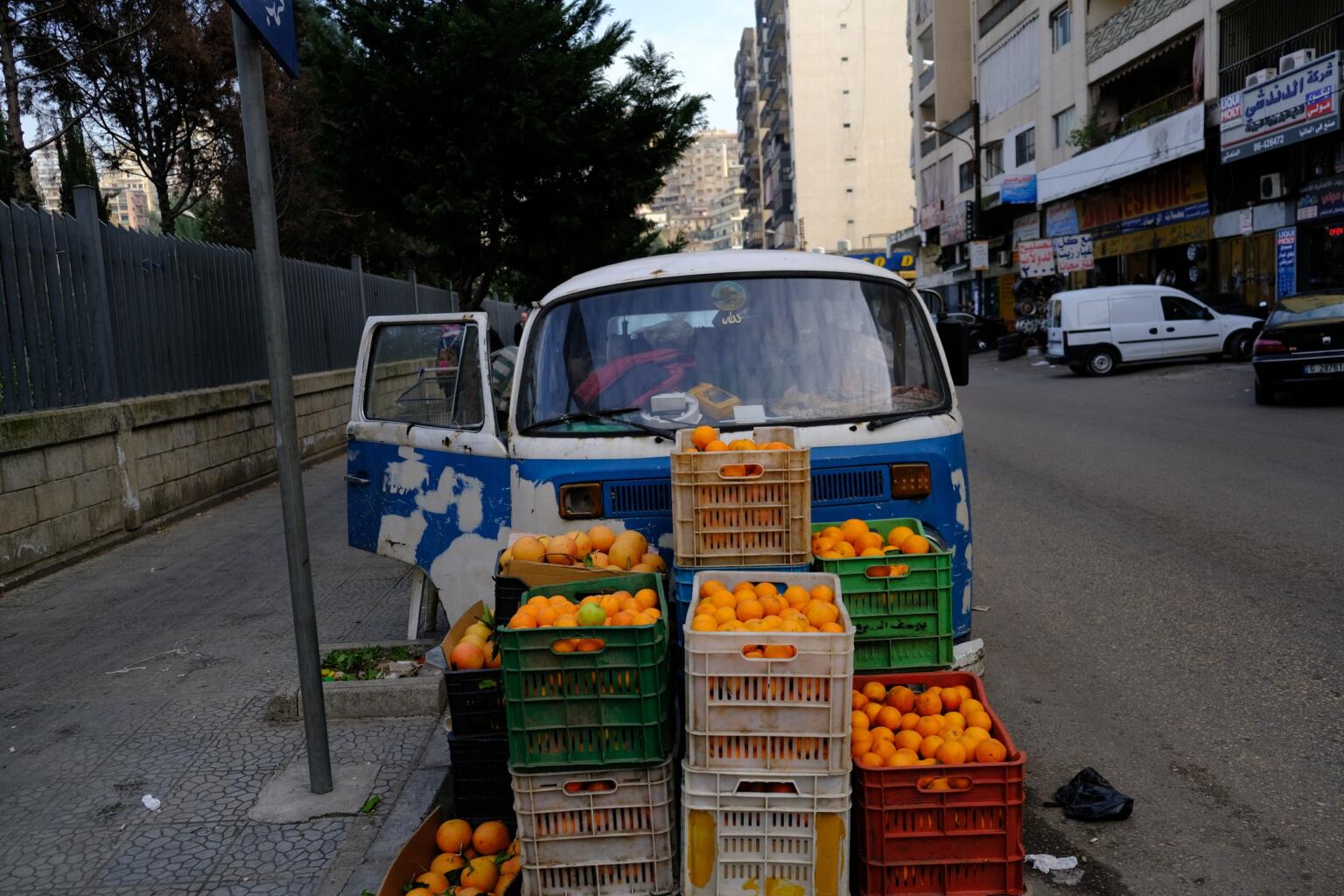
Photo: Chris Lininger
Fun fact: One thing that blew me away about the cars in Lebanon are the sheer number of old Volkswagen buses/vans there are. Literally, everywhere you go in Lebanon you see a old Volks vans from the 1970’s, some in decent condition, others not so much. I love these vans, so it was great to see.
Traveling to Lebanon by yourself? Check out this detailed guide from our friend and fellow travel blogger Anna Everwhere on traveling to Lebanon solo.
Renting a Car in Lebanon
As I mentioned above, renting a car is definitely the way to go. I rented a car for two weeks in Lebanon and I ended up paying about $17 USD a day, plus the petrol. I did not take insurance and the asshole at the rental car company place charged me $70 for a scratch that was already there before I rented the car.
You can sort your car rental in just a few minutes. Booking in advance is the best way to ensure you score the lowest price and your choice of vehicle. Often, you can find the best car rental prices when you pick up the rental from the airport. Make sure you cover your rental car with a RentalCover.com policy. It covers your car against any common damages such as tires, windscreens, theft, and more at a fraction of the price you would pay at the rental desk.
Be aware, the Lebanese drive like fucking maniacs. Lanes, right away concepts, turn signals, stop lights, blind curves… all of those things mean nothing to the average Lebanese driver.
When driving in Lebanon, you need to seriously assume/pretend like everyone around you is drunk, blind, and may turn into you at any moment because that is exactly what it feels like to be surrounded by Lebanese drivers on the highway.
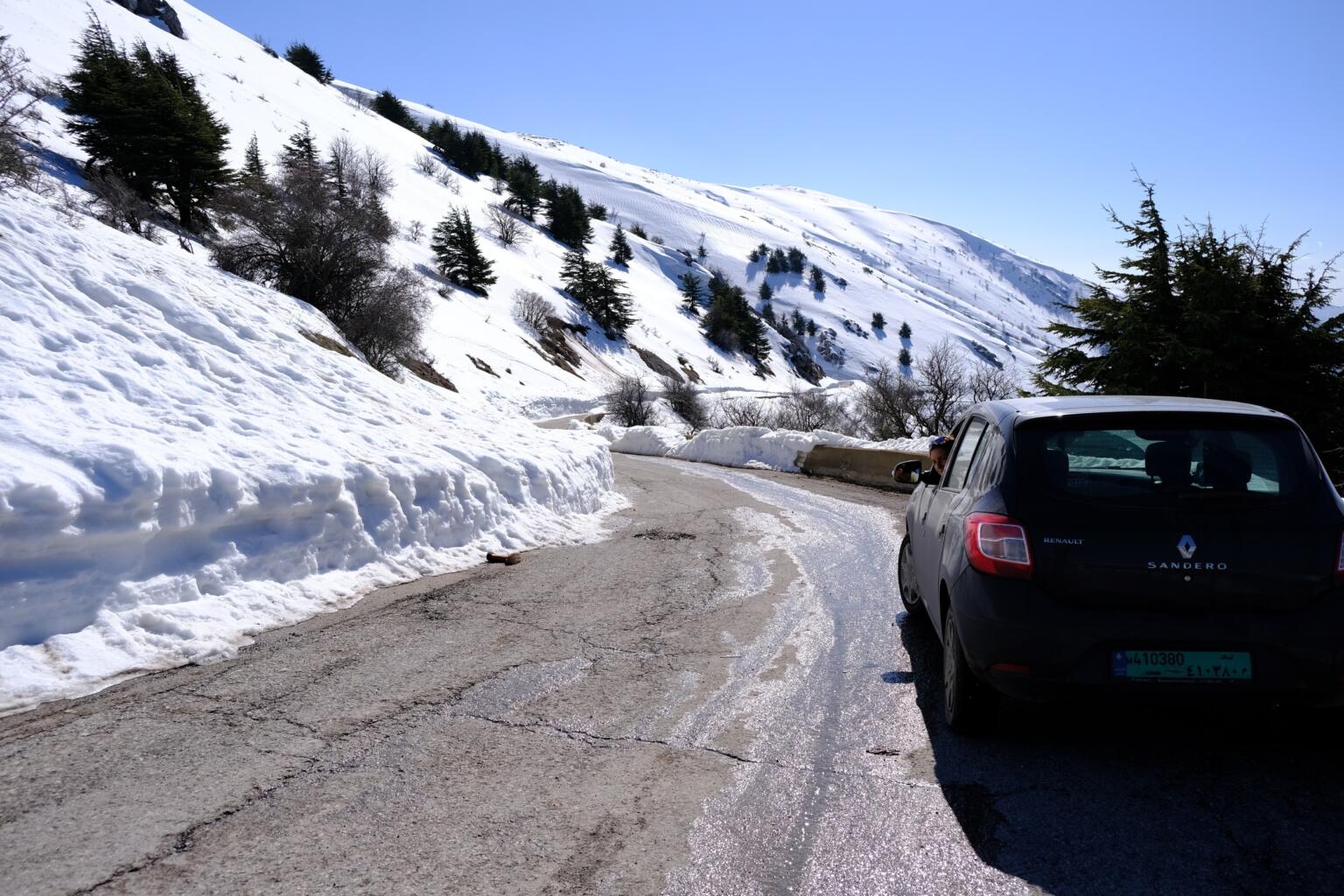
Photo: Chris Lininger
Onwards Travel from Lebanon
Overland onward travel options out of Lebanon are limited, if not impossible. It may be possible to cross the border from Lebanon into Syria, but 1.) you will most definitely need to have already gotten your visa in advance and 2.) the army in both Lebanon and Syria may well stop you for ages and ask you a million and one questions about why you are coming to Syria.
If any of you have any recent information on the Lebanese-Syrian border crossing for foreigners, please leave a comment below!
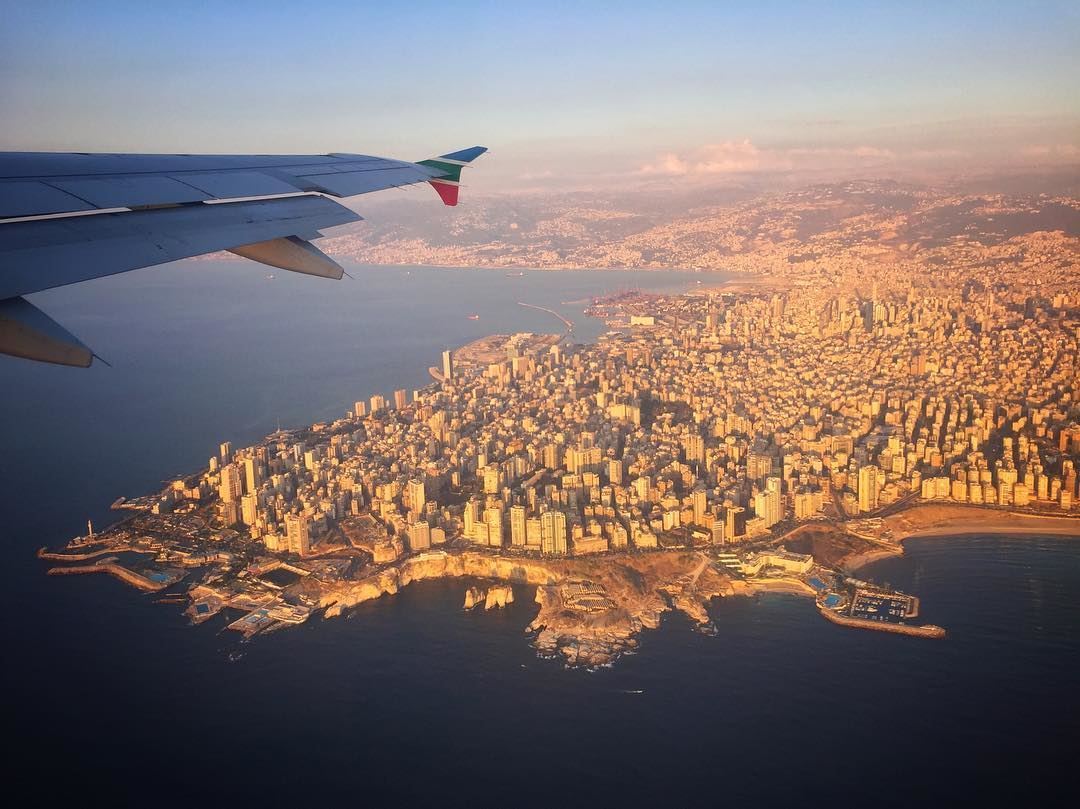
Photo: Lebanon in a picture.
Your best (and likely only) bet for onward travel out of Lebanon is by air from Beirut.
The ferry running from Lebanon to Cyprus seems to have stopped running a number of years ago and I have found no evidence to the contrary. Apparently, when the sea is calm, you can take a ferry from Lebanon to Turkey and then get to Cyprus by ferry from there.
Working in Lebanon
Lebanon is in severe economic doldrums. Living costs are high and jobs sparse. It isn’t exactly a beacon for ex-pat workers, in fact, there is a serious exodus going on as young Lebanese look elsewhere for a more prosperous life.

A new country, a new contract, a new piece of plastic – booooring. Instead, buy an eSIM!
Jetpac eSIMs work just like an app: you download it, pick your plan, and BOOM! You’re connected the minute you land. It’s that easy.
Read about how e-Sims work or click below to see one of the top eSIM providers on the market and ditch the plastic.
Grab an eSIM!Work Visa’s For Lebanon
Getting a work visa for Lebanon is not exactly straightforward. Technically, foreigners can only fill job vacancies that cannot be filled by a Lebanese worker although a healthy bribe culture means that the rule is not always enforced.
Nevertheless, there is some bureaucracy to deal with before a work visa can be awarded.
Teaching English in Lebanon
Many Lebanese people can speak surprisingly good English… and you know what? The demand for Lebanese wanting to learn English is growing every year (sorry Frenchies).
Candidates with Bachelor Degrees are preferred but this is not actually a mandatory requirement. The average pay range is $900 – $1500 per month which is just about enough to etch a living.
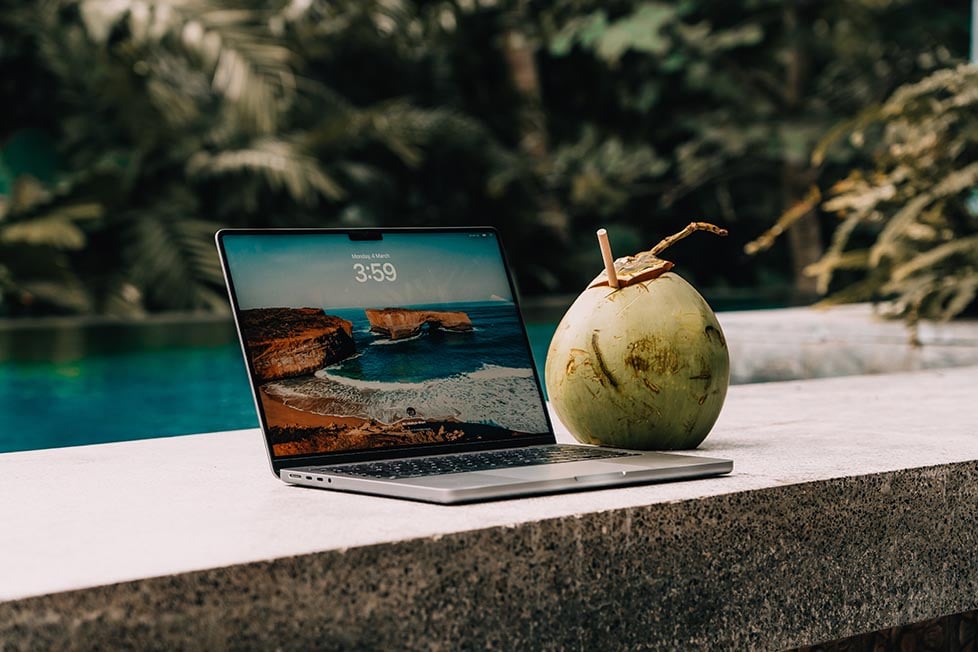
Image: Nic Hilditch-Short
Volunteer in Lebanon
Lebanon is not a suitable destination for backpacker volunteers. Whilst there are many worthy projects, the political situation in the country makes it very unwise. If you really want to volunteer in Lebanon, then seek out a proper NGO or Humanitarian Project that has the relevant clearance to operate in the country.
What to Eat in Lebanon
Lebanese food is simply incredible. There are so many options and tasty things to try that if you love to eat, you are coming to the right country! Below I have listed a few of my favorite Lebanese dishes:
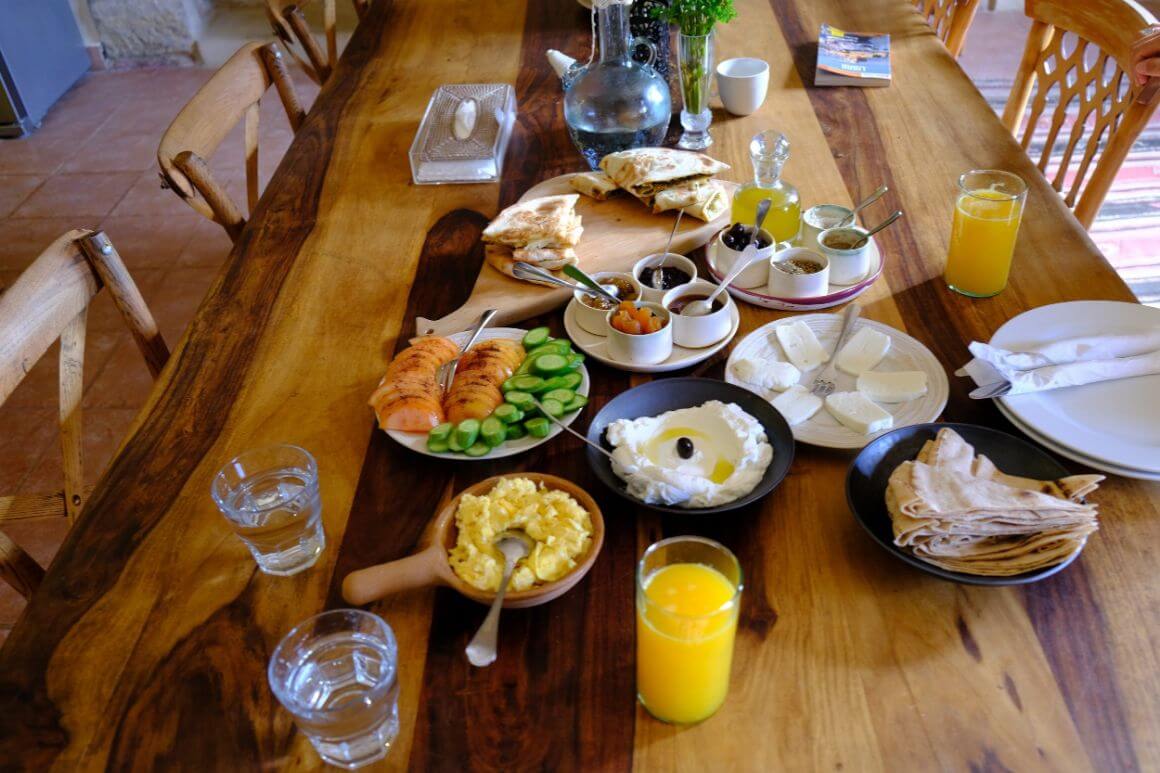
Photo: Chris Lininger
Hummus: A chickpea based dip/spread made with olive oil, salt, and tahini paste.
Foul: A breakfast food usually served hot. Made with a fava bean base, raw onions, and olive oil.
Manousche: Another common breakfast food (it’s good anytime, really). It’s kind of like a pizza, but usually topped with the famous Lebanese spice, Zaatar.
Mutabal: The same thing as Baba Ghanouj. A delicious dip made with smoked eggplant.
Kefta: Oblong shaped meatballs filled with parsley and spices.
Kibbeh: Can take many forms, but is usually a flat ground-beef and bulgur grain dish seasoned with spices and topped with pine nuts. Must have with yogurt!
Fatoush: A classic Lebanese salad topped with fried bits of Lebanese bread and many vegetables like tomatoes and sweet peppers.
Fried Fish: When you are in southern Lebanon, the fish is excellent!
Shawarma: The classic Middle Eastern street food sandwich filled with shawarma meat (can be chicken, lamb, or beef), sauce, and pickled veggies.
Labneh: A slightly sour, young cheese-yogurt hybrid that is delicious on everything
Tabolueh: A world-famous cold salad made with bulgur, tomatoes, and a ton of parsley, lemon juice, salt, and onions.
Lebanese Pastries: I could write an entire article on all of the different Lebanese pasty concoctions. There is an endless variety. Try to sample a different one every day. In Saida, go for the kneffe.
Lebanese Culture
The Lebanese people are a true pleasure to get to know. We experienced countless acts of hospitality and kindness from the people we met.
From taxi drivers and fish vendors to bar staff and Airbnb hosts…the Lebanese people are some of the most genuine, kind-hearted, and generous people I have ever met whilst traveling or not.
One thing is certain, if you end up becoming friends with any Lebanese people, you will certainly not starve. The Lebanese love language is certainly food, and I swear I gained 10 pounds whilst backpacking in Lebanon just from constantly being offered delicious food.
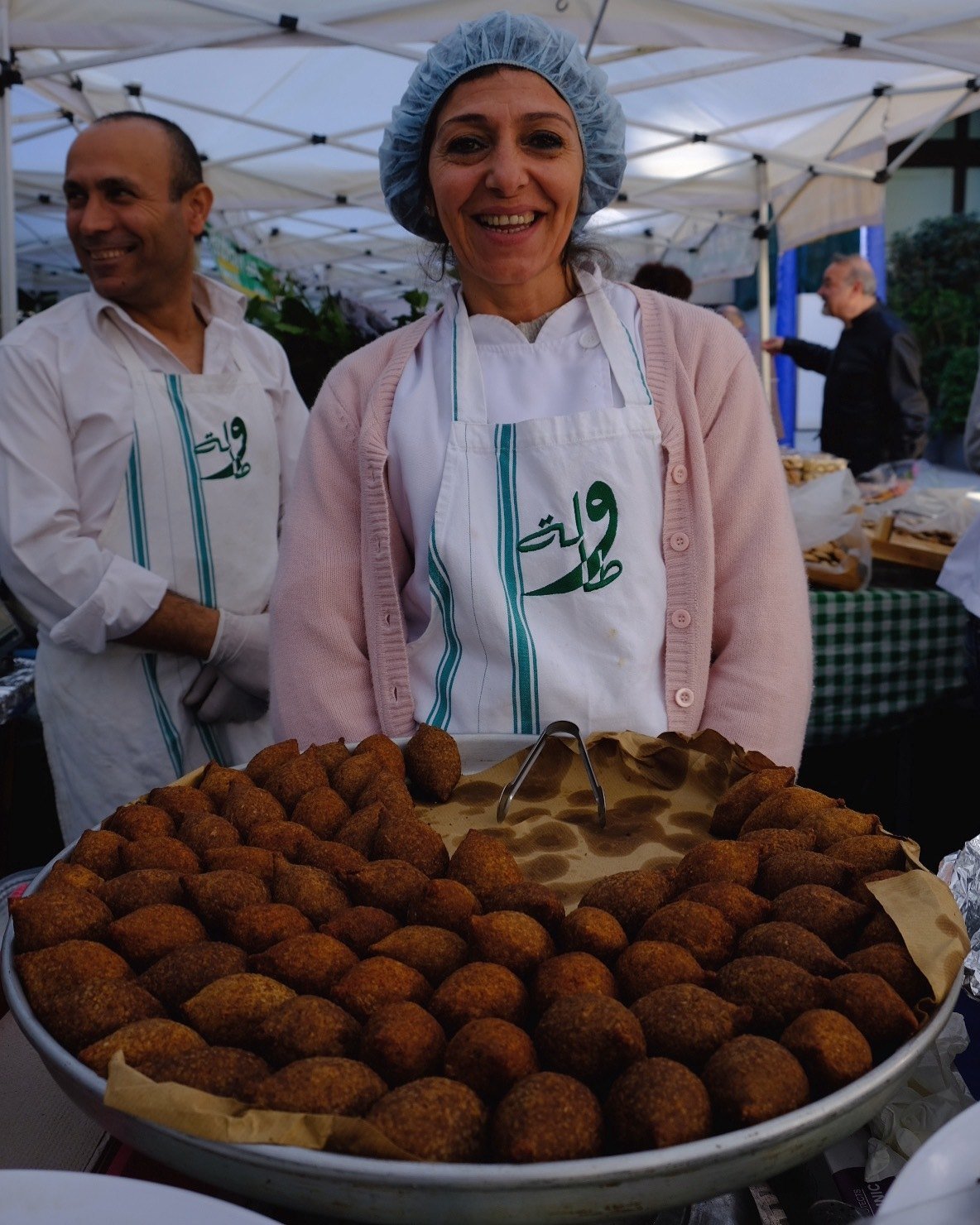
Photo: Chris Lininger
Ironically, a majority of the Lebanese population is still likely to be very traumatized from the shit they endured during the war years. However they cope with these traumas, it certainly does not manifest in a negative light in the way they interact with foreigners.
Special thanks to all of the amazing people who showed us so much love in Lebanon, especially the Kobrossi family.
Internet in Lebanon
From what I had read online before I came to Lebanon, I was confident that I could pick up a SIM card for my phone for “just a couple of bucks.” WRONG! If you have also read similar information on other blogs regarding cheap SIM cards in Lebanon, forget it.
It just is not true at all. Apparently, there is some monopoly/government corruption thing going on with the cell phone companies because SIM cards and data are fucking expensive.
After going to (seriously) 10 phone shops in Beirut and haggling when it wasn’t appropriate to haggle, I was able to get a SIM card good for one month loaded with 5 GB of data on it for $45 USD.
You CAN find cheaper options than that, but often they only include 1 GB or less and the SIM card will still cost you $25 easy.
The two main cell phone companies in Lebanon are Touch and Alfa. Both cost pretty much the same. I had Alfa and it worked well throughout the country.
Travel Phrases for Backpacking Lebanon
The official language of Lebanon is Arabic and knowing a few words of it will certainly help you over the course of your backpacking journey. Amazingly (but not so surprisingly), many Lebanese people are fluent in English, French, or both. I met dozens of trilingual Lebanese folks.
For the most part, you can get by on English or French, and any Arabic you learn will only be a bonus. Plus, the locals will greatly appreciate your effort to learn.
Here are a few useful Arabic travel phrases to get you started:
Note: Arabic does not use the same alphabet as English, so these translations are transliterations of how the word would look if written using the English alphabet.
Books to Read whilst Backpacking Lebanon
Here are a few of my favorite books set in Lebanon:
From Beirut to Jerusalem: One of the most thought-provoking books ever written about the Middle East, From Beirut to Jerusalem remains vital to our understanding of this complex and volatile region of the world.
A House of Many Mansions: In the light of modern scholarship, a famous Lebanese writer and scholar examines the historical myths on which his country’s warring communities have based their conflicting visions of the Lebanese nation.
Pity the Nation: An Abduction of Lebanon: With the Israeli-Palestinian crisis reaching wartime levels, where is the latest confrontation between these two old foes leading? Robert Fisk’s explosive Pity the Nation recounts Sharon and Arafat’s first deadly encounter in Lebanon in the early 1980s and explains why the Israel–Palestine relationship seems so intractable.
Hezbollah: The Global Footprint of Lebanon’s Party of God: Hezbollah: The Global Footprint of Lebanon’s Party of God is the first thorough examination of Hezbollah’s covert activities beyond Lebanon’s borders, including its financial and logistical support networks and its criminal and terrorist operations worldwide.
Lonely Planet Middle East: Always good to have a Lonely Planet on hand (though this guide is best!), especially if you are planning to go to multiple countries in the Middle East.
A Brief History of Lebanon
Since Lebanon is one of the oldest continuously inhabited places in the Middle East, giving a brief history is not a easy task. Basically, for the last few thousand years, the territory now known as Lebanon has been ruled and/or conquered by the Phoenicians, Egyptians, Romans, Arabs, Christians, Mamluks, and the Ottomans, among others.
In 1975, when the Lebanese civil war broke out, the country was forever changed by the conflict.
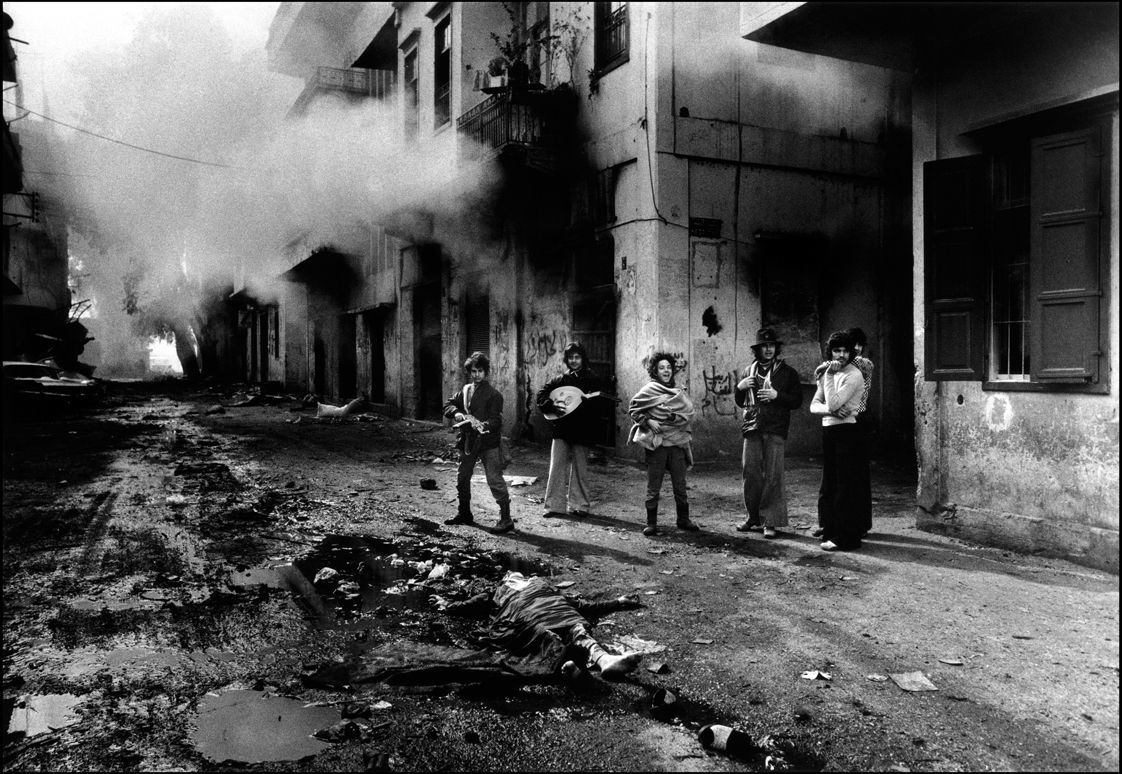
Photo: Don McCullin
The Lebanese Civil War and its Aftermath
In all, it is estimated that more than 100,000 were killed, and another 100,000 handicapped by injuries, during Lebanon’s 16-year war. Up to one-fifth of the pre-war resident population, or about 900,000 people, were displaced from their homes, of whom perhaps a quarter of a million emigrated permanently. Thousands of people lost limbs during many stages of planting of land-mines.
The War can be divided broadly into several periods: The initial outbreak in the mid-1970s, the Syrian and then Israeli intervention of the late 1970s, escalation of the PLO-Israeli conflict in the early 1980s, the 1982 Israeli invasion, a brief period of multinational involvement, and finally resolution which took the form of Syrian occupation.
In May 1991, the militias (with the important exception of Hezbollah) were dissolved, and the Lebanese Armed Forces began to slowly rebuild themselves as Lebanon’s only major non-sectarian institution.
Some violence still occurred. In late December 1991, a car bomb (estimated to carry 100 kg (220 lb) of TNT) exploded in the Muslim neighborhood of Basta.
At least thirty people were killed, and 120 wounded, including former Prime Minister Shafik Wazzan, who was riding in a bulletproof car. It was the deadliest car bombing in Lebanon since June 18, 1985, when an explosion in the northern Lebanese port of Tripoli killed sixty people and wounded 110.
The last of the Westerners kidnapped by Hezbollah during the mid-1980s were released in May 1992.
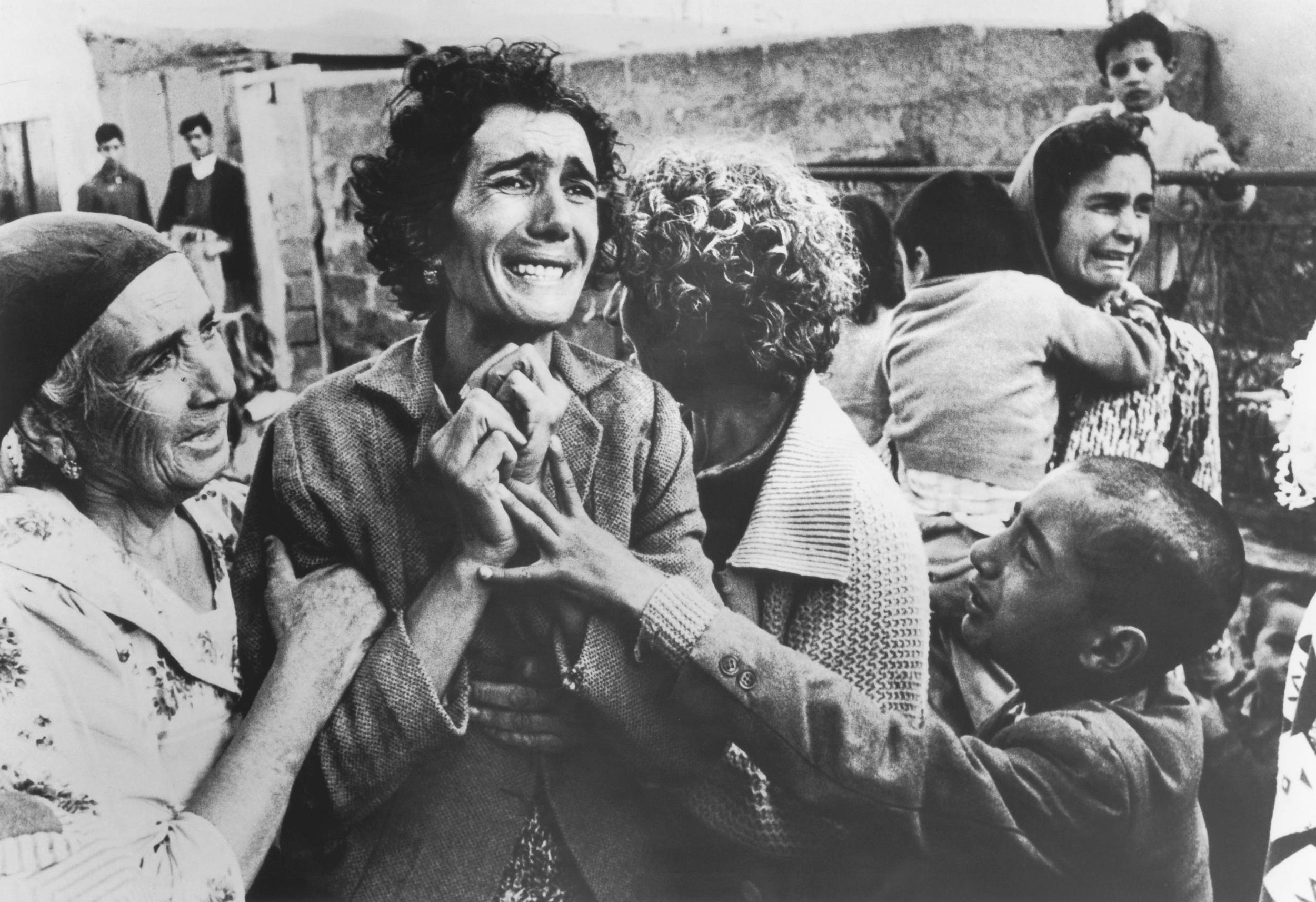
Photo: Don McCullin
Lebanon in the Present Moment
Lebanon and its population are still recovering from the civil war. Evidence of bombed out, destroyed buildings are still standing all over Beirut as a daily reminder to the people living there just how fucked things got in the not so distant past.
That said, Lebanon has not surrendered in defeat to the wounds and trauma of war. Lebanon is a country on the move and the people I spoke to expressed a deep love and optimism for the future of their country.
The fact remains that Lebanon is still a deeply divided country, though at least for the present moment the majority of Lebanese citizens are finding ways to look past their ideological differences and co-exist with one another, which is very good to see indeed.
I guarantee you that most of the Lebanese people do not want another war and will do everything in their power to avoid one.
The backpacker scene in Lebanon will develop as more and more keen travelers find their way to this magical land, which will be great for the economy and well as for the general public confidence that will get a boost when locals see foreigners coming to enjoy their country.
Some Unique Experiences in Lebanon
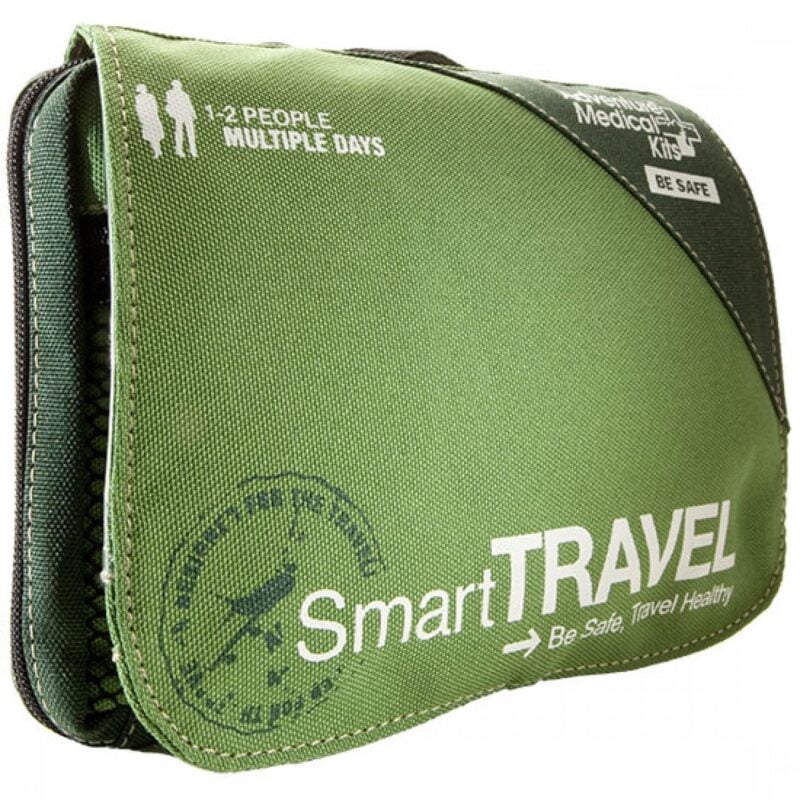
Things go wrong on the road ALL THE TIME. Be prepared for what life throws at you.
Buy an AMK Travel Medical Kit before you head out on your next adventure – don’t be daft!
Buy on REITrekking in Lebanon
Lebanon’s mountains are full of awesome hiking trails. Hiking is not a super popular past time in Lebanon, but slowly people are getting stoked on it. The people behind the Lebanese Mountain Trail (LMT) have done heaps in promoting hiking and trekking in the country.
When the mountains are covered in several feet of snow, the options are endless. Here are a few of the best hikes in Lebanon.
Lebanese Mountain Trail: The LMT is a 470 km (292 mi.) foot path traversing the breadth of Lebanon from north to South. The trail is made up of 27 different sections and takes roughly one month to complete end to end. If you have the time and motivation, this is an ultra rewarding way to see Lebanon. Most people start the thru hike in late spring.
Al Ammouaa Forest: For a chill and non-crowded place to enjoy the mountains, the Ammouaa Forest Reserve in north east Lebanon is a great spot. We did an awesome 3 hour hike out here and did not see another person (also we were trekking in 3 feet of powder and my feet nearly fell off due to cold).
Kadisha Valley: One of my favorite sections of the LMT runs through the Kadisha Valley. Here you have ancient olive groves, monasteries, rivers, and waterfalls.
The Chouf Reserve: Lebanon’s biggest forest reserve is the best place to surround yourself with ancient cedars and escape the crowds. Ok, sometimes it can be busy here, but most of the time (especially once you leave the road), it is just you and the trees.
Horsh Ehden Nature Reserve: Another very low-key spot not too far from Bcharre. The lower elevations are hikable in the winter.
Adonis Valley: One of the best places to see a large lake in Lebanon (Lake Chouwen).
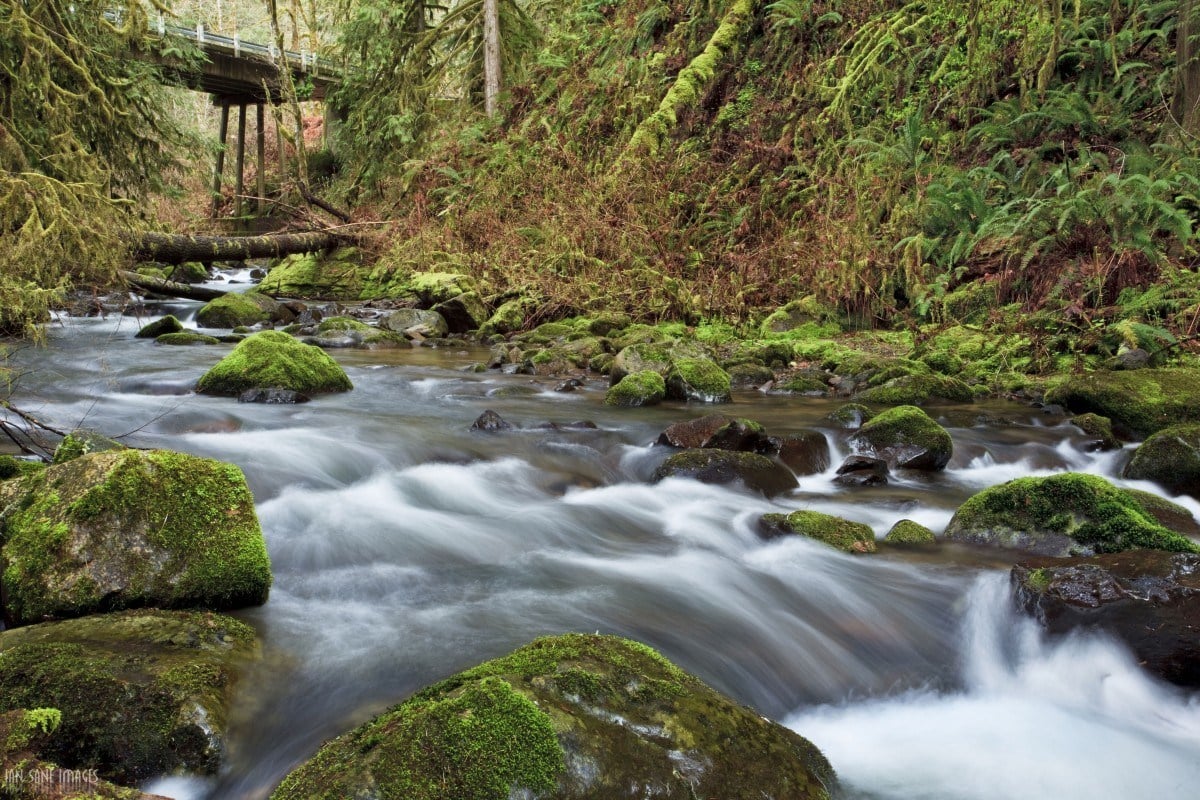
Scuba Diving in Lebanon
In the summer when it is too hot to do anything else, why not go for a scuba dive? Prospective divers can find dive shops in Beirut, Saida, Byblos, Batroun, Jounieh, and Tripoli, to name a few. There are a handful of interesting dive sites to be found up and down Lebanon’s coast.
Aub Canyon, near Beirut: The walls on this reef are steep, beautiful, and full of small caves and fishermen’s nets with a huge old anchor lying at 43m. The water here is pretty polluted though, so do your best not to swallow any!
Shark Point, near Beirut: One of the best dive sites in Lebanon. Diverse and rich. Fine diving between April and September. Moray eels, stingrays in groups, eagle rays, groupers, and sharks – the small tooth sand tiger and the gray nurse sharks tend to be around in July.
The Souffleur, south of Beirut (12 km): An epic place to see a World War 2 wreck!
Alice B, near Jounieh: An excellent site for underwater photographers. An easy dive for people with little experience.
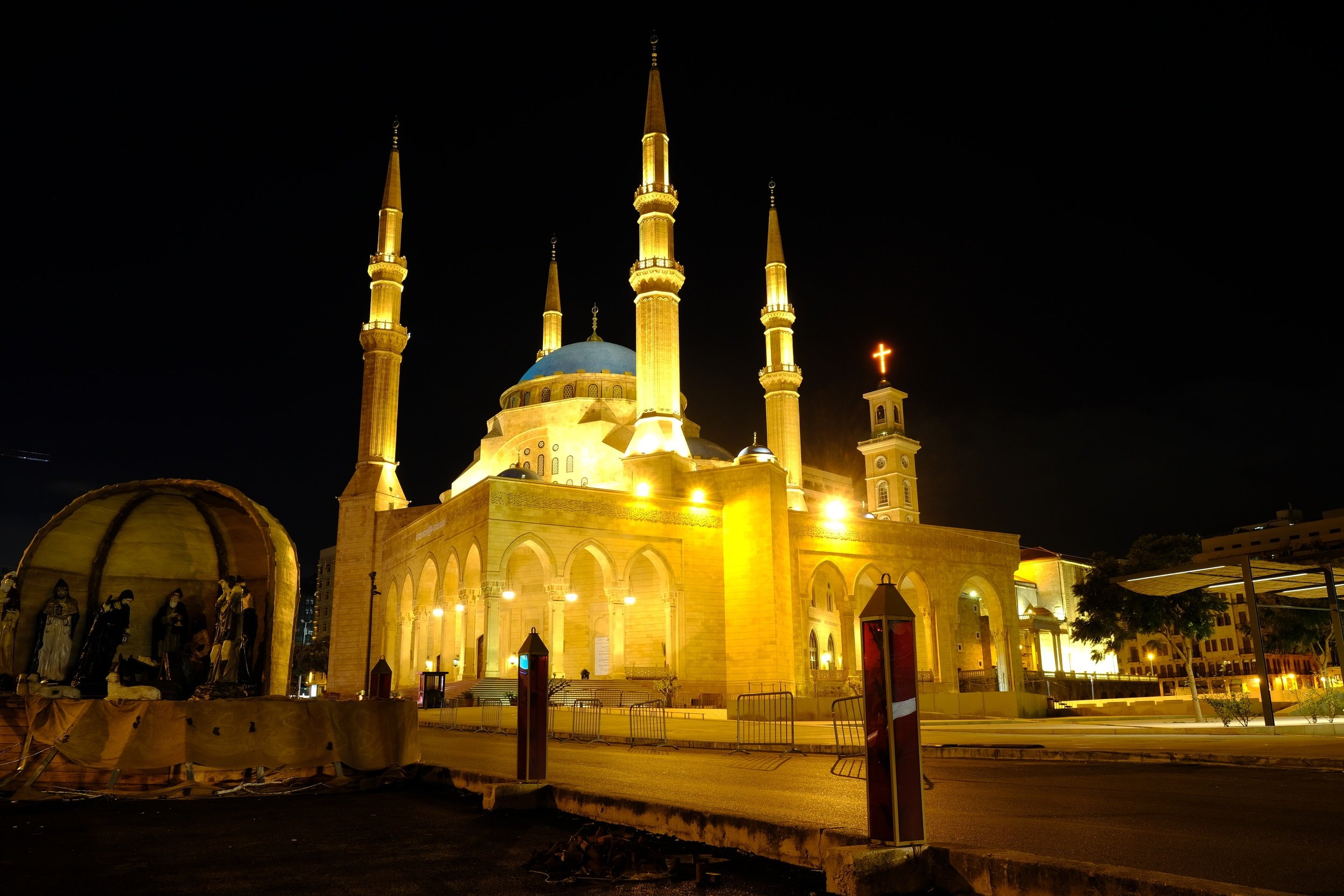
Photo: Chris Lininger
Final Advice Before Visiting Lebanon
I hope you found this Lebanon backpacking guide useful. I am confident that this is the most comprehensive Lebanon travel guide on the internet and one I wish I had when I first went backpacking in Lebanon!
It was truly a pleasure to travel in Lebanon, and to have the chance to write about it. My hope is that you put this Lebanon travelguide to use for your own unique backpacking adventure!
Lebanon is a very special country filled with amazing human beings. If you are about to set off to Lebanon, you are in for one amazing travel experience. Happy travels, amigos.
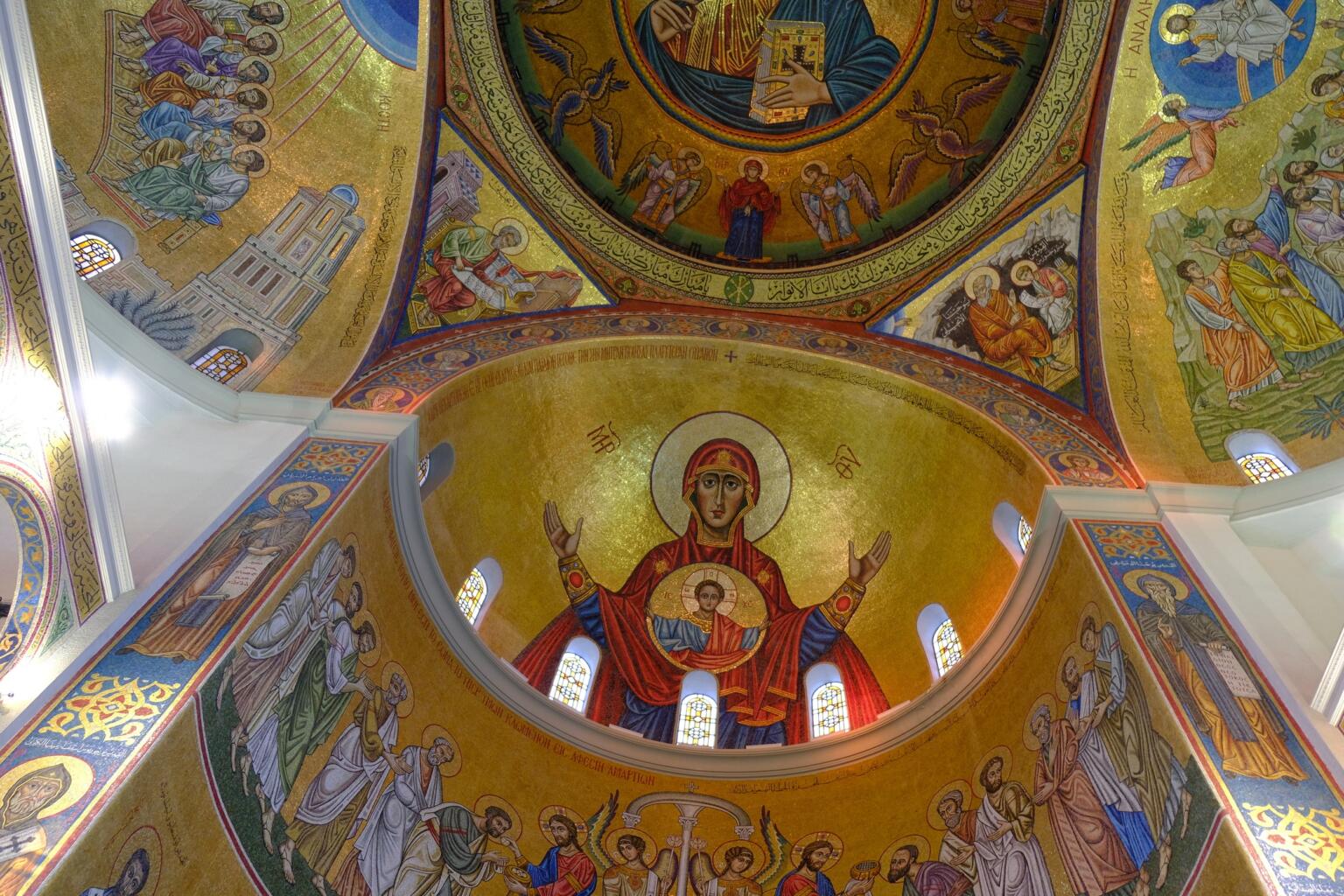
Photo: Chris Lininger
Buy Us a Coffee!
A couple of you lovely readers suggested we set up a tip jar for direct support as an alternative to booking through our links. So we created one!
You can now buy The Broke Backpacker a coffee. If you like and use our content to plan your trips, it’s a much appreciated way to show appreciation 🙂


